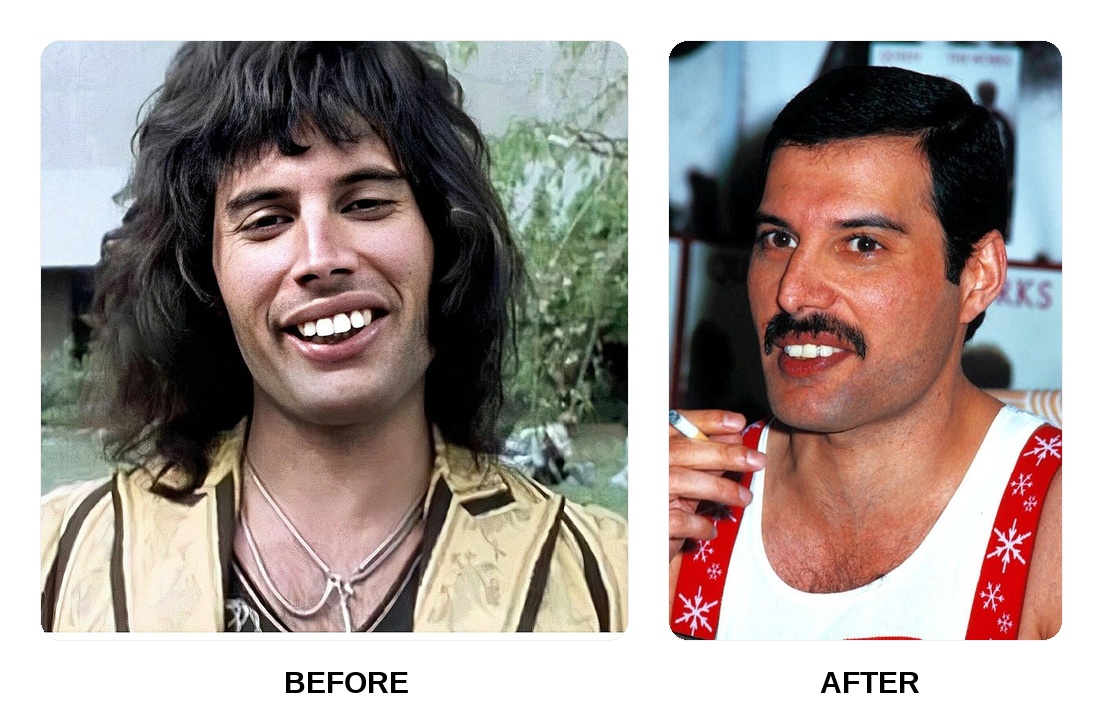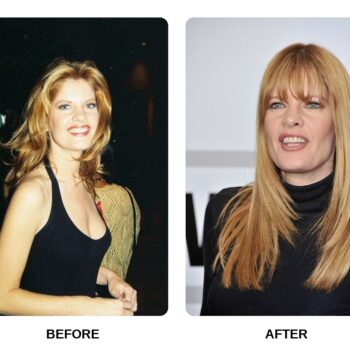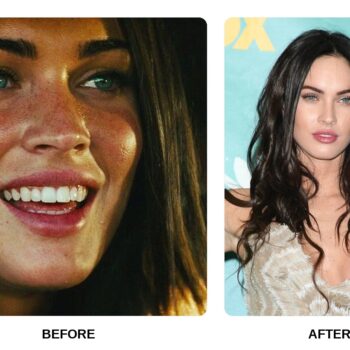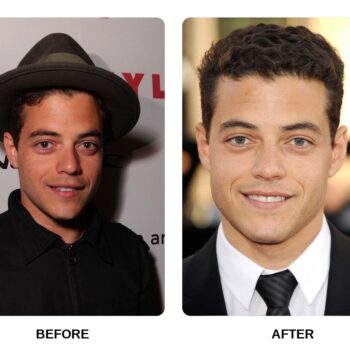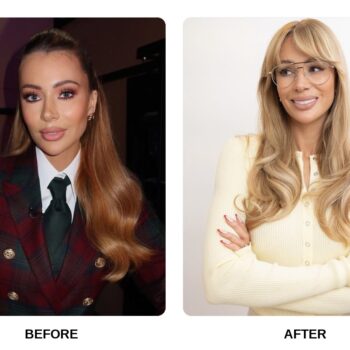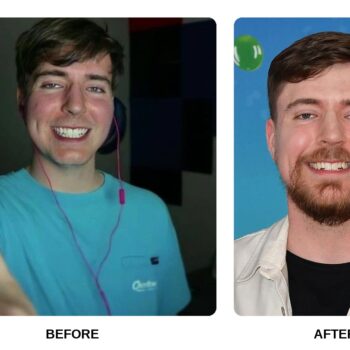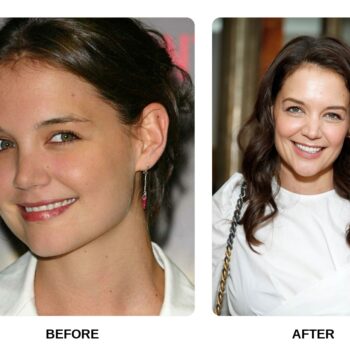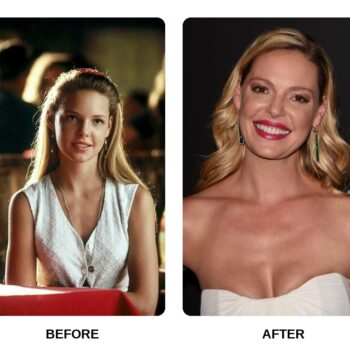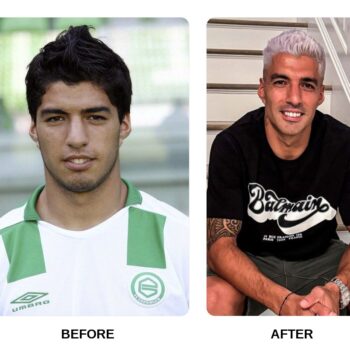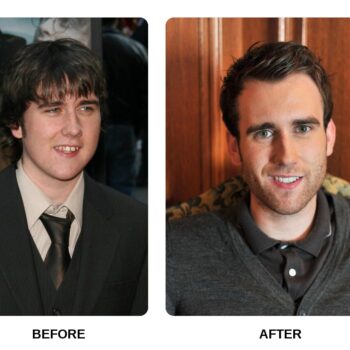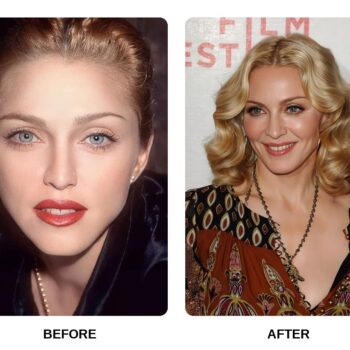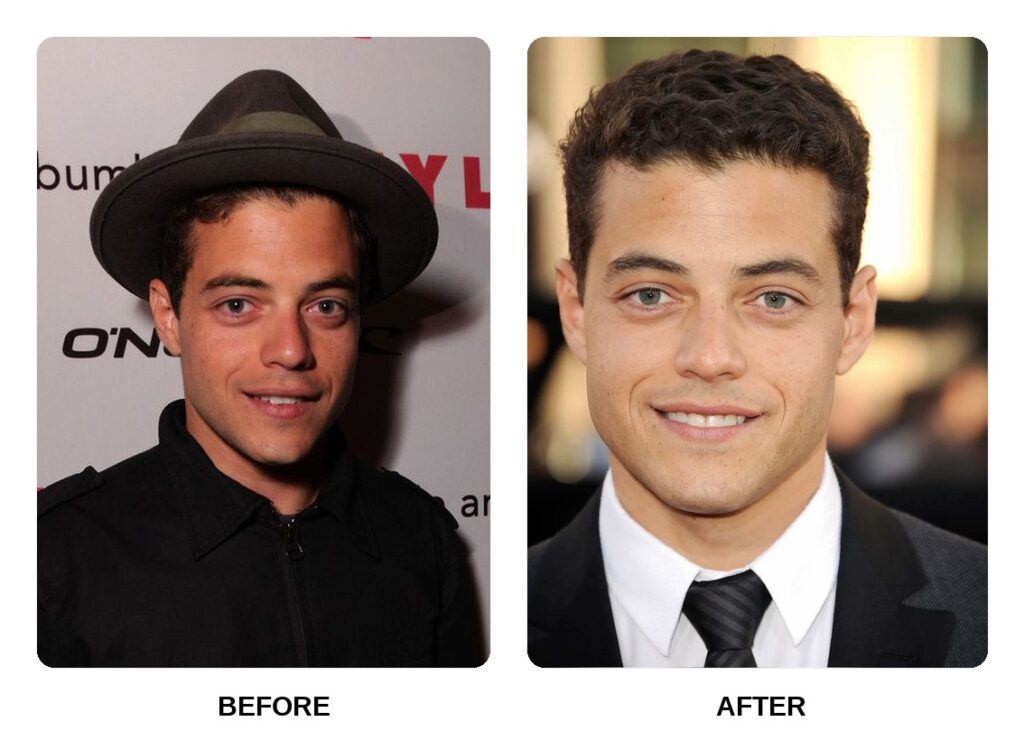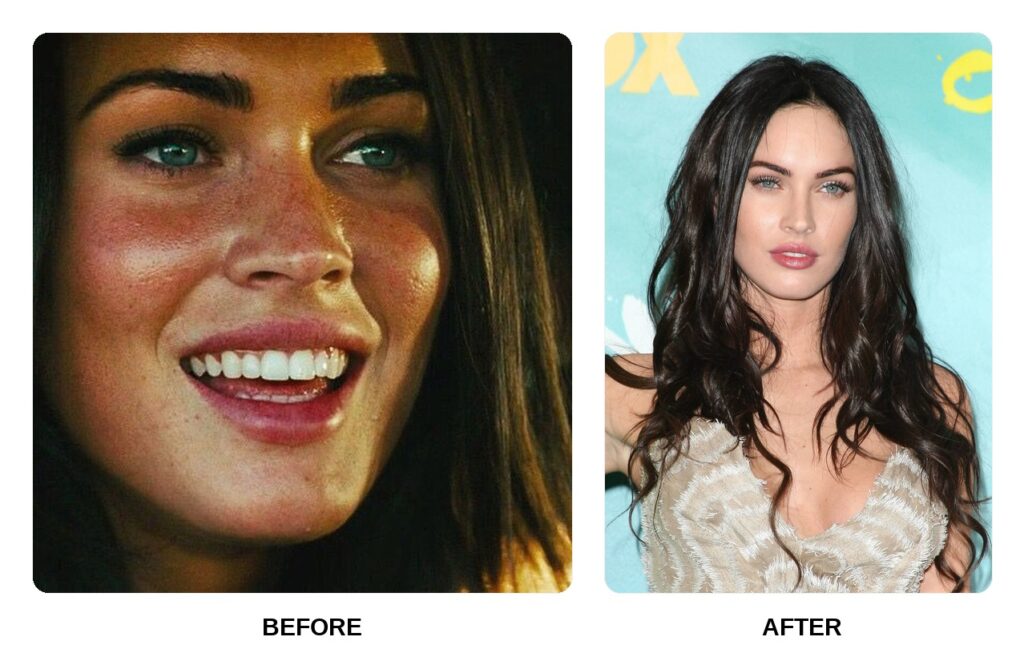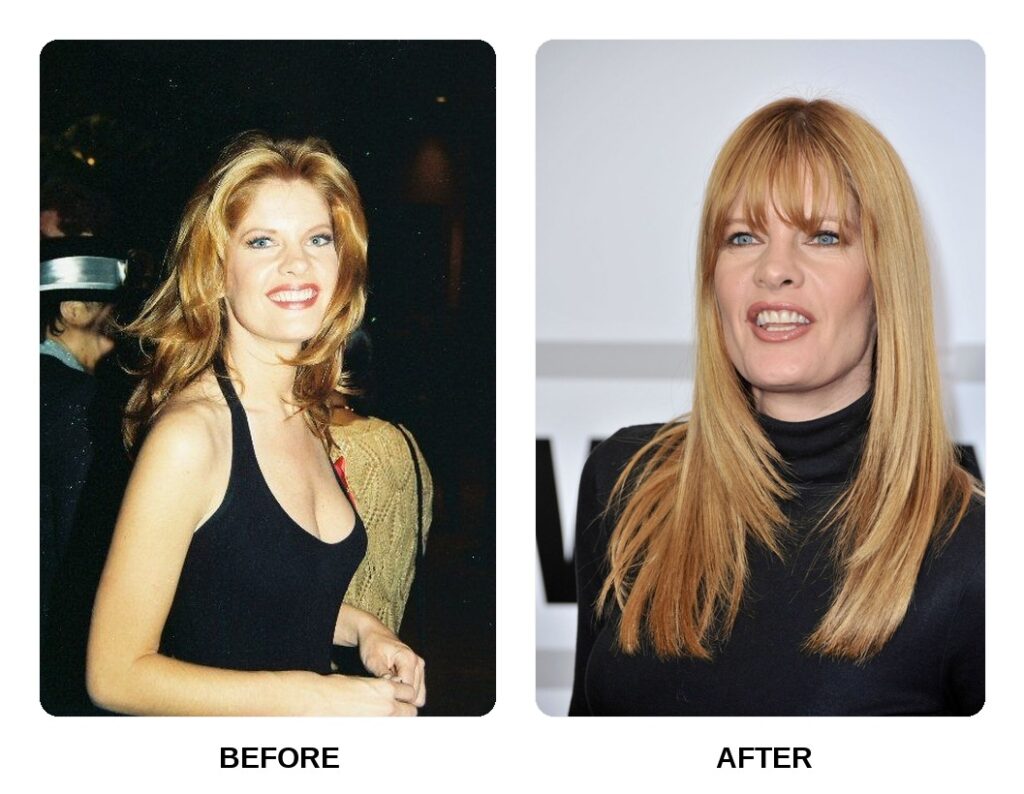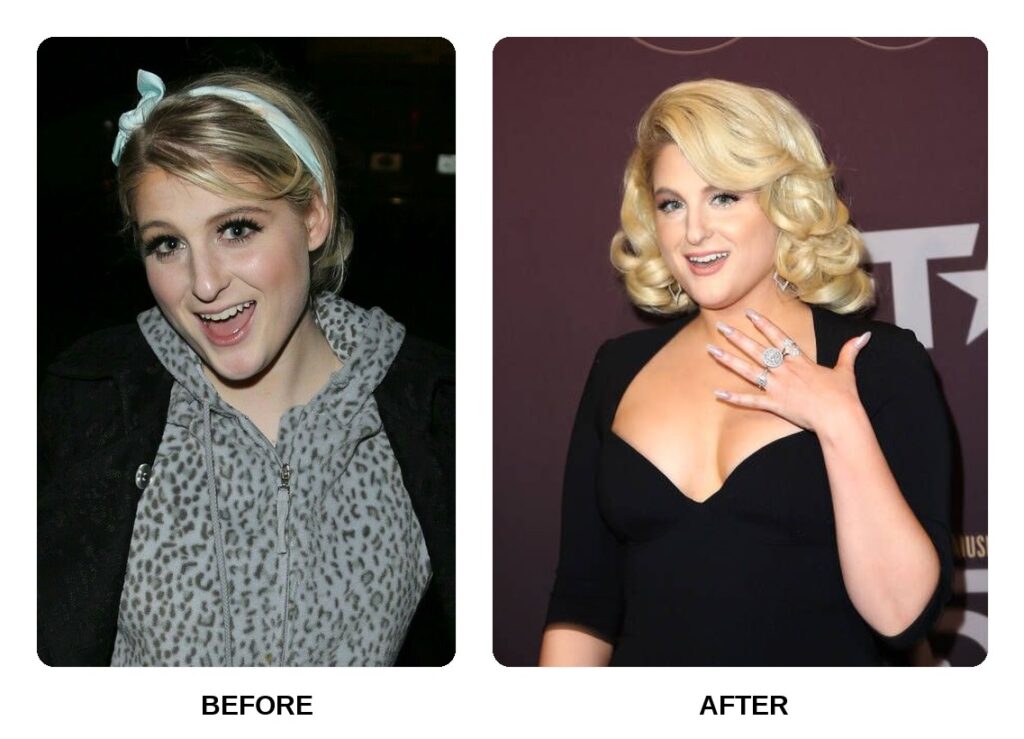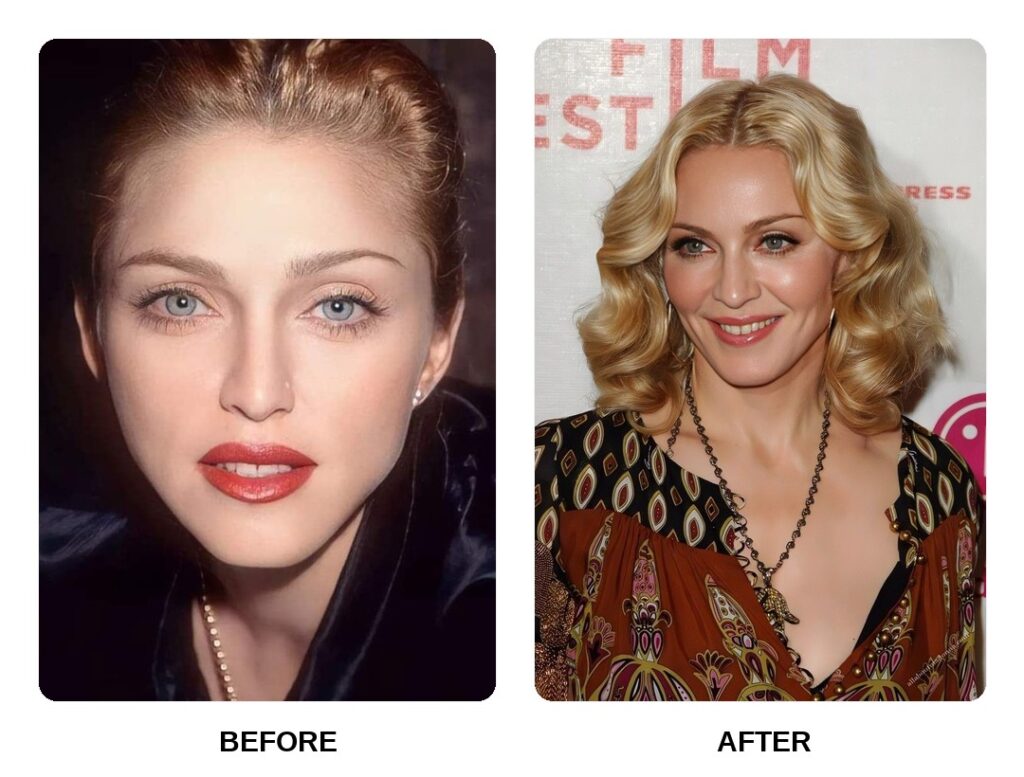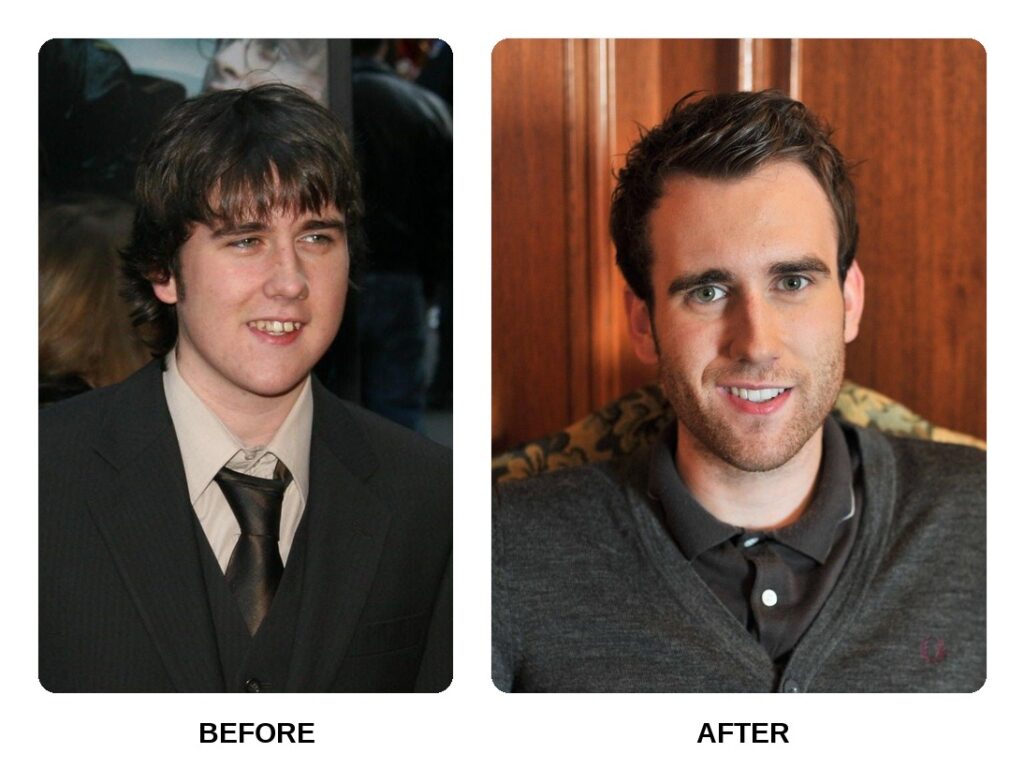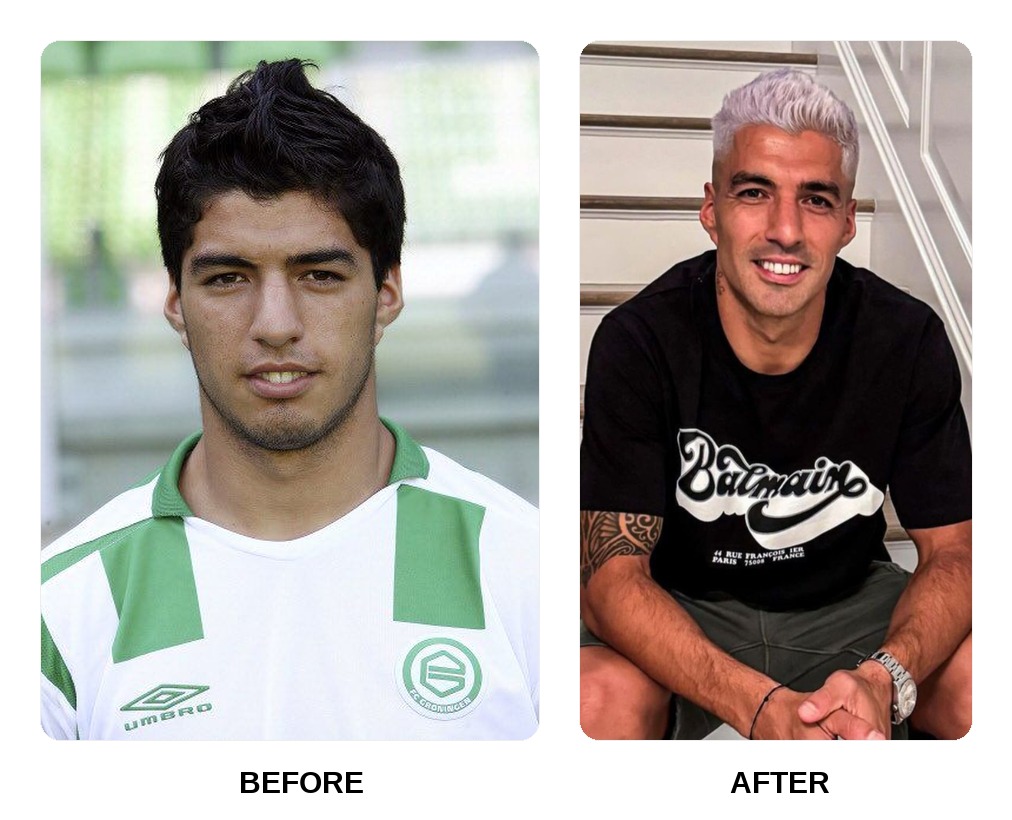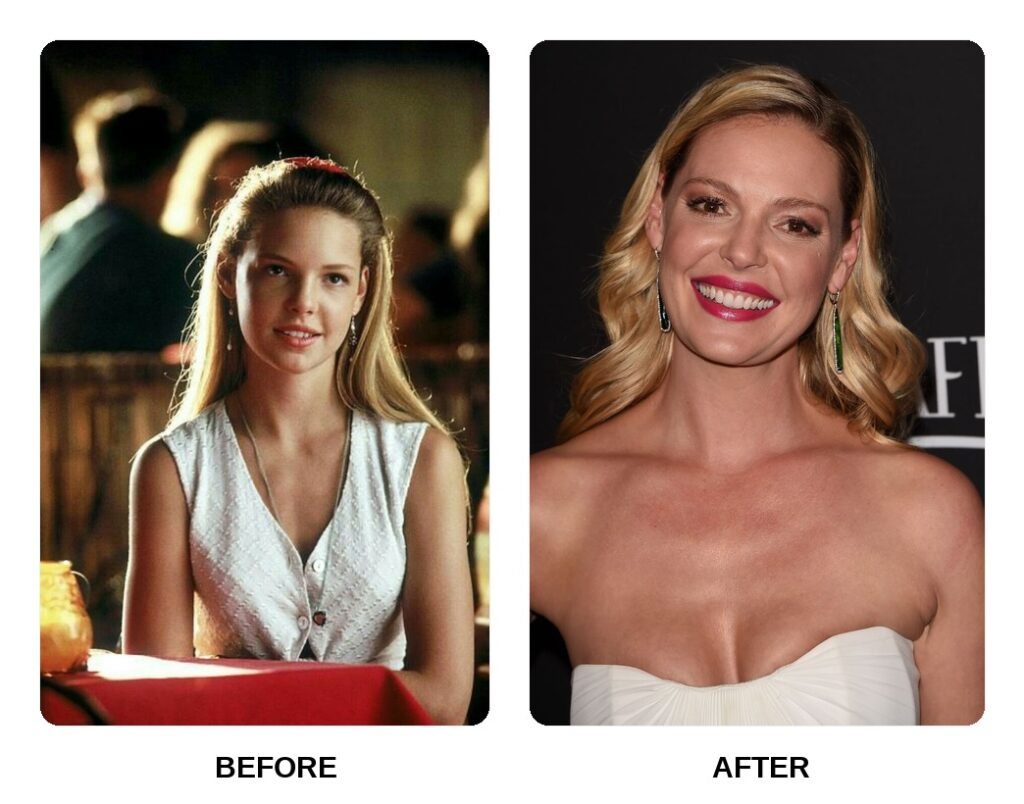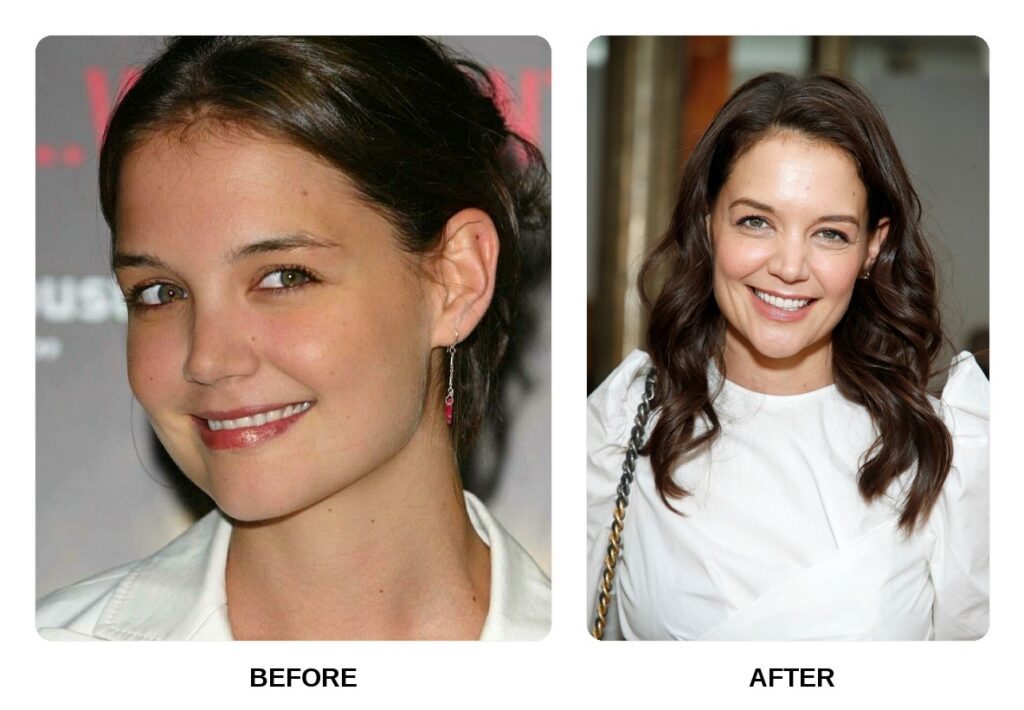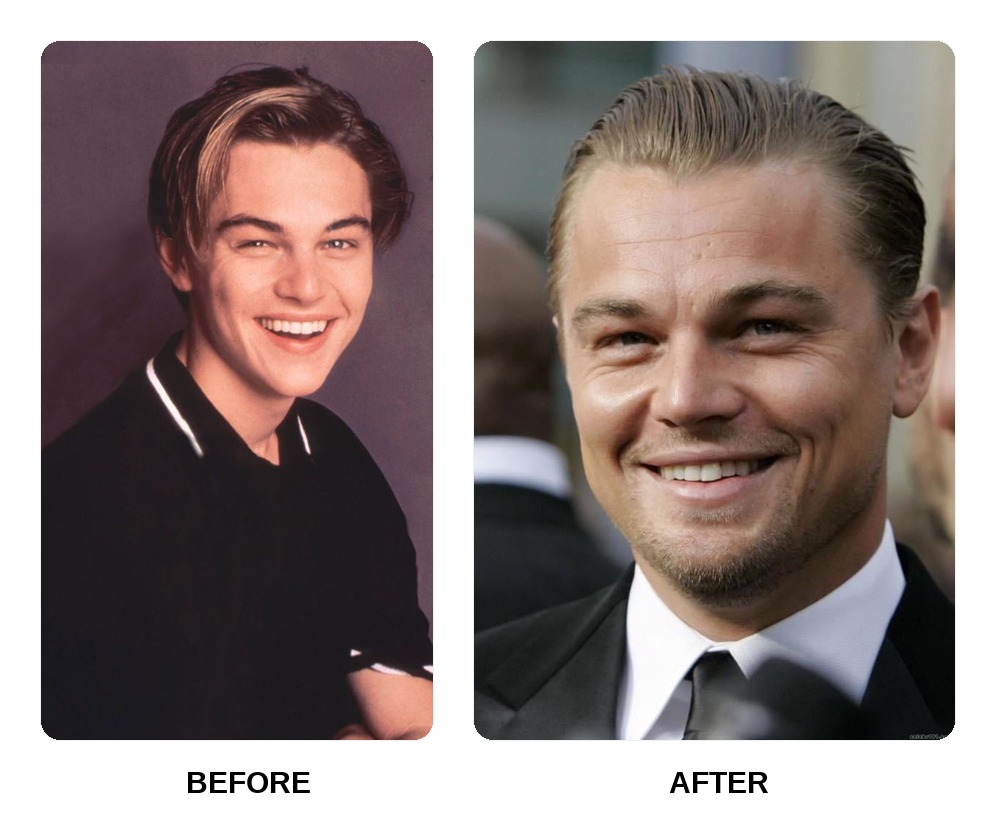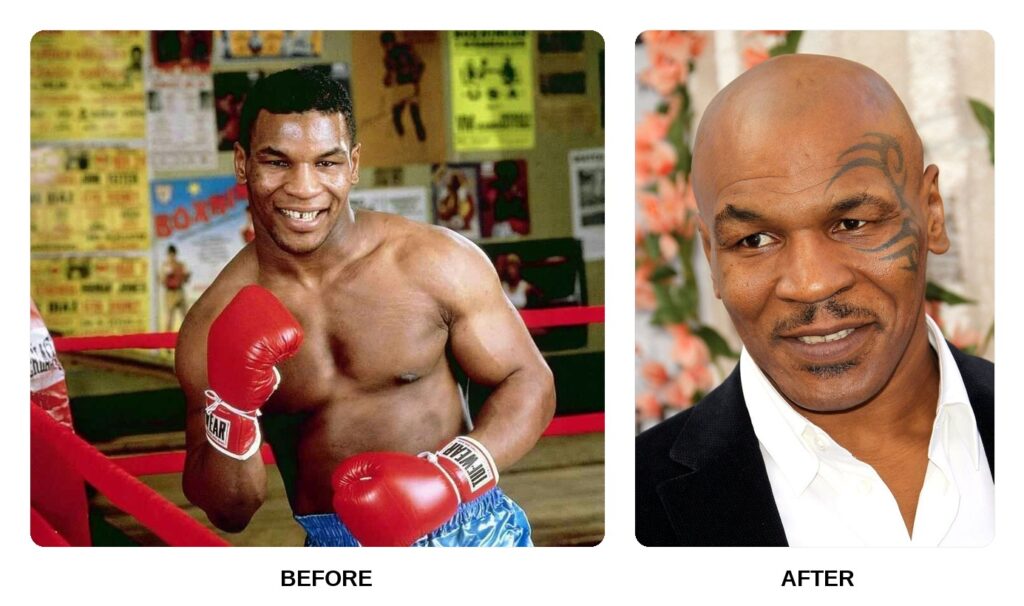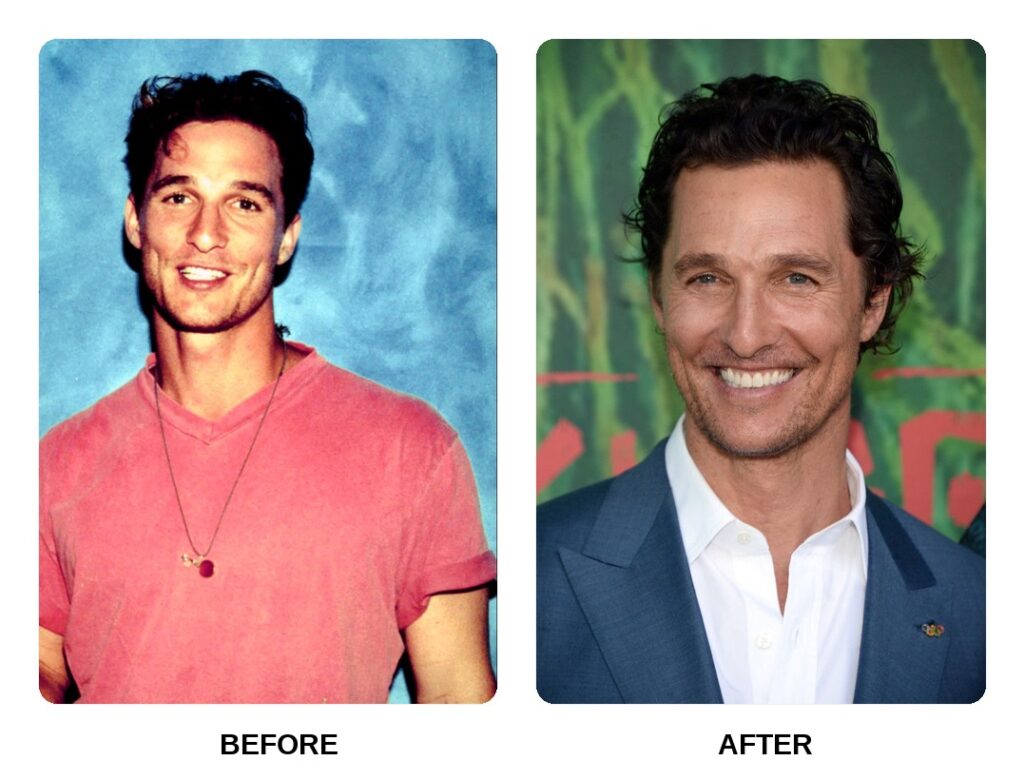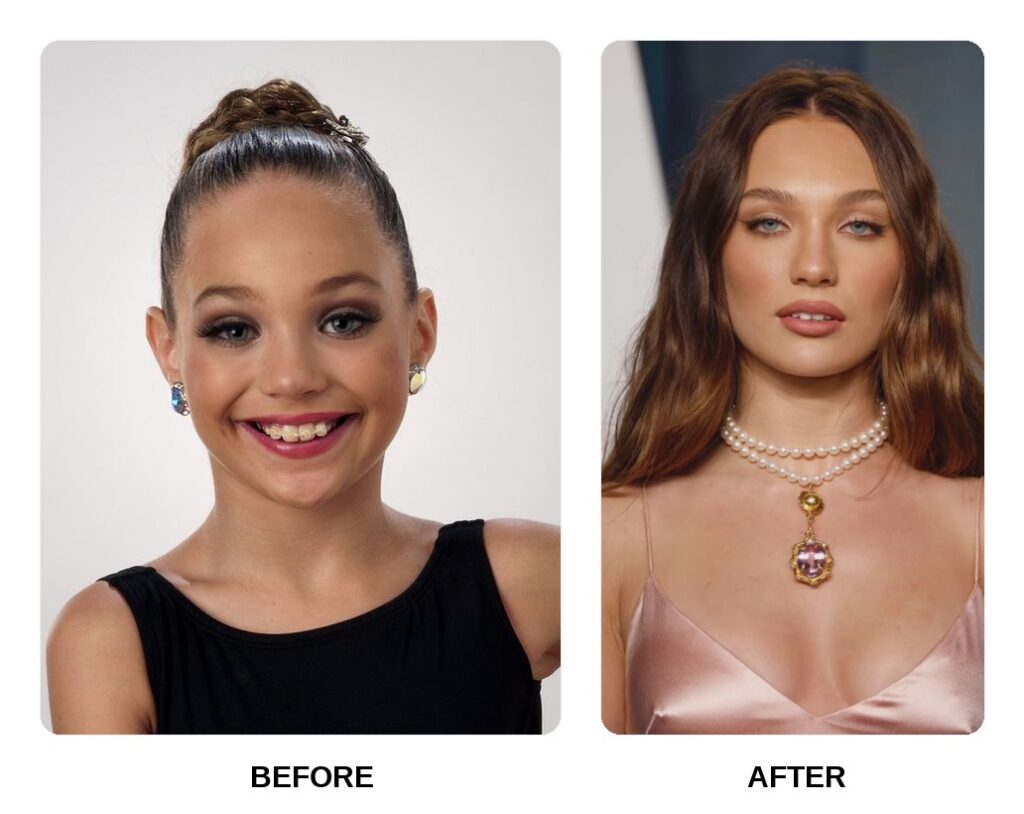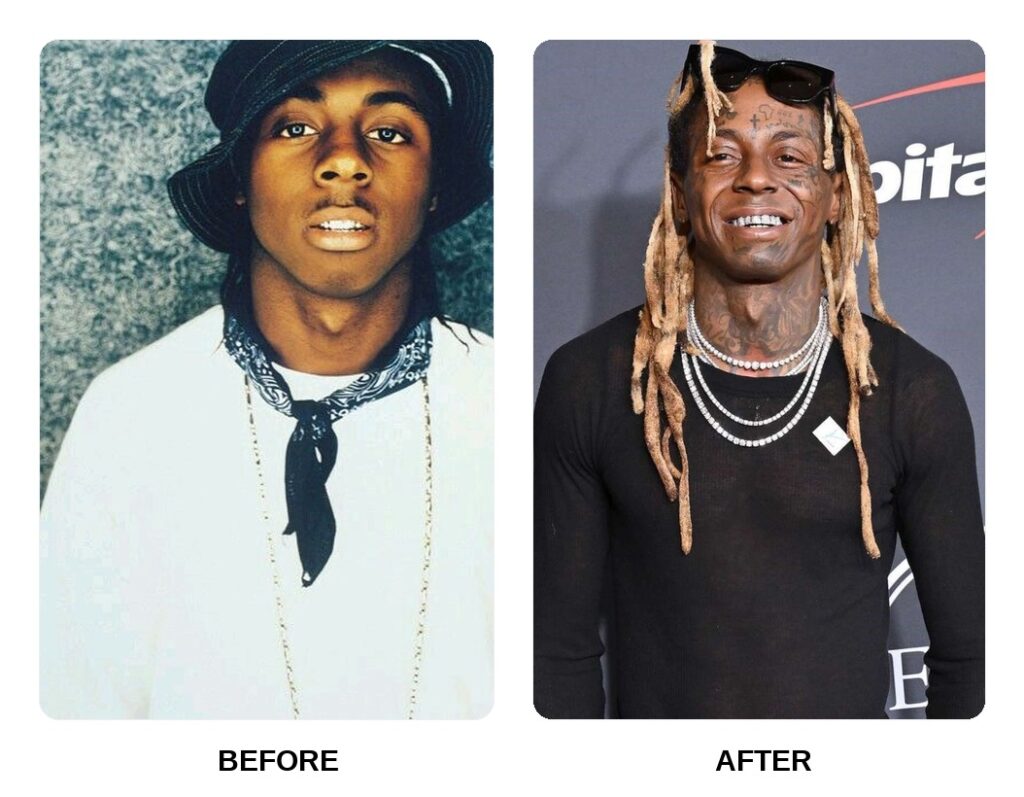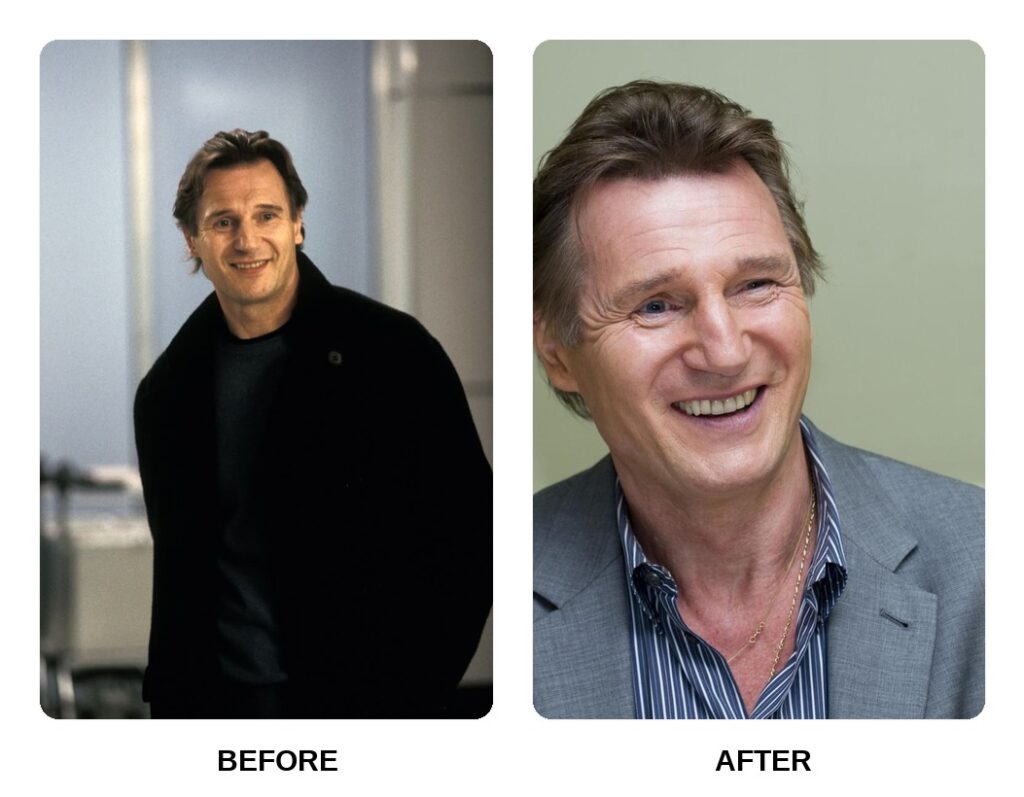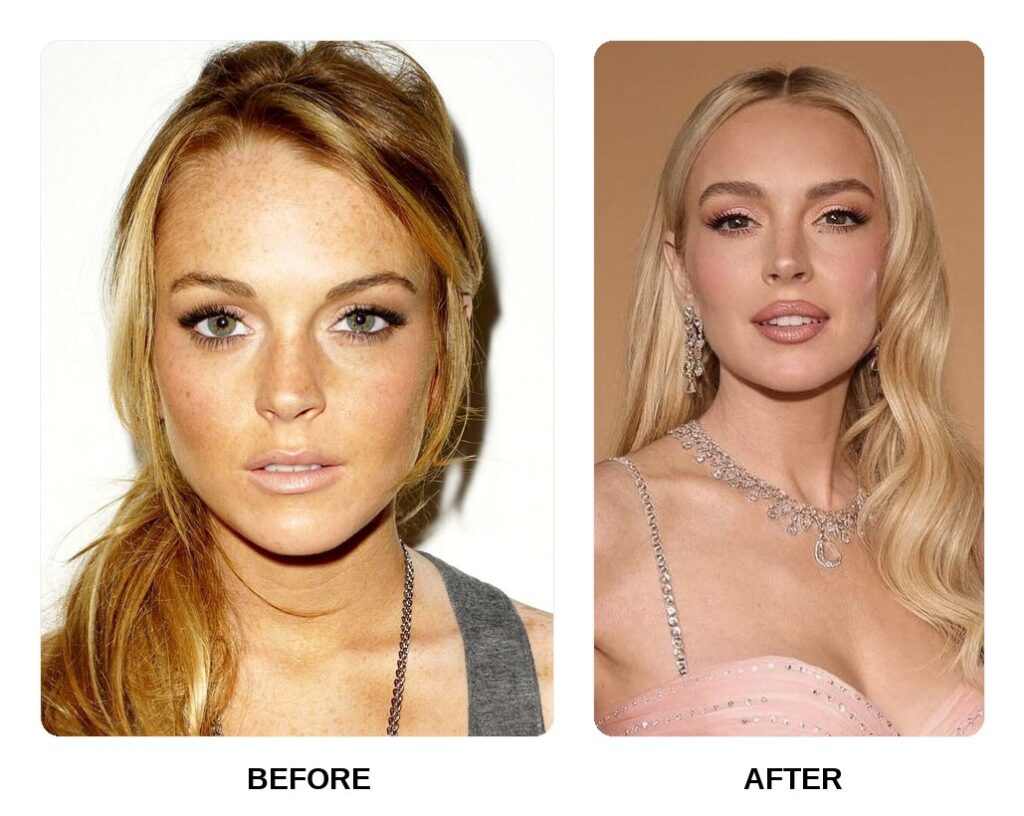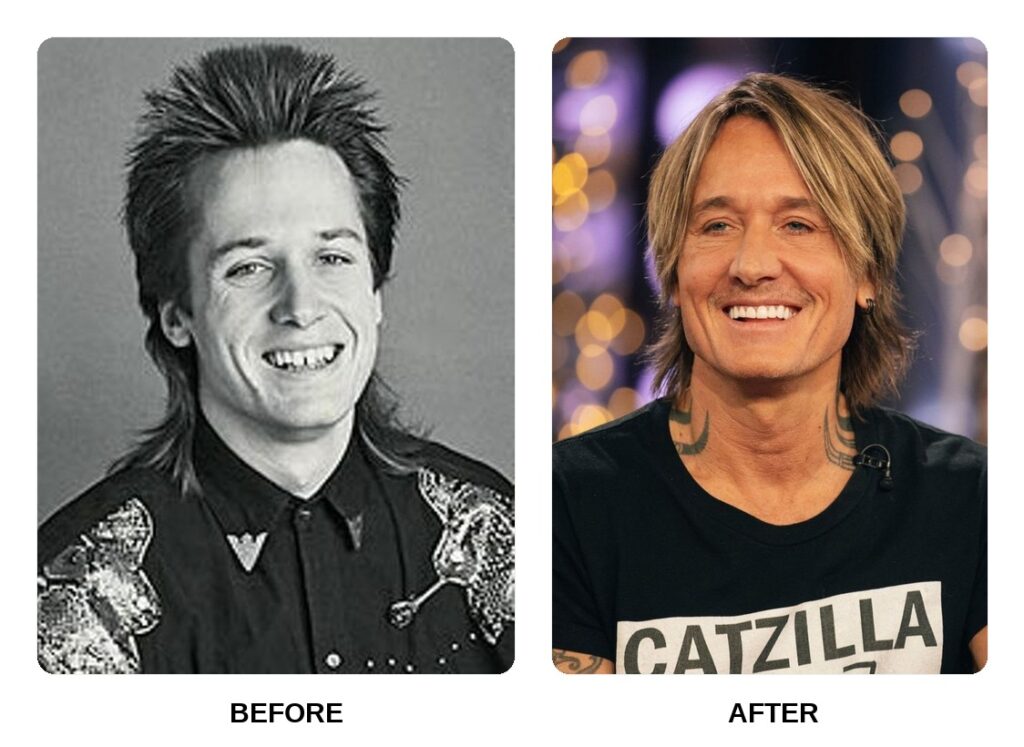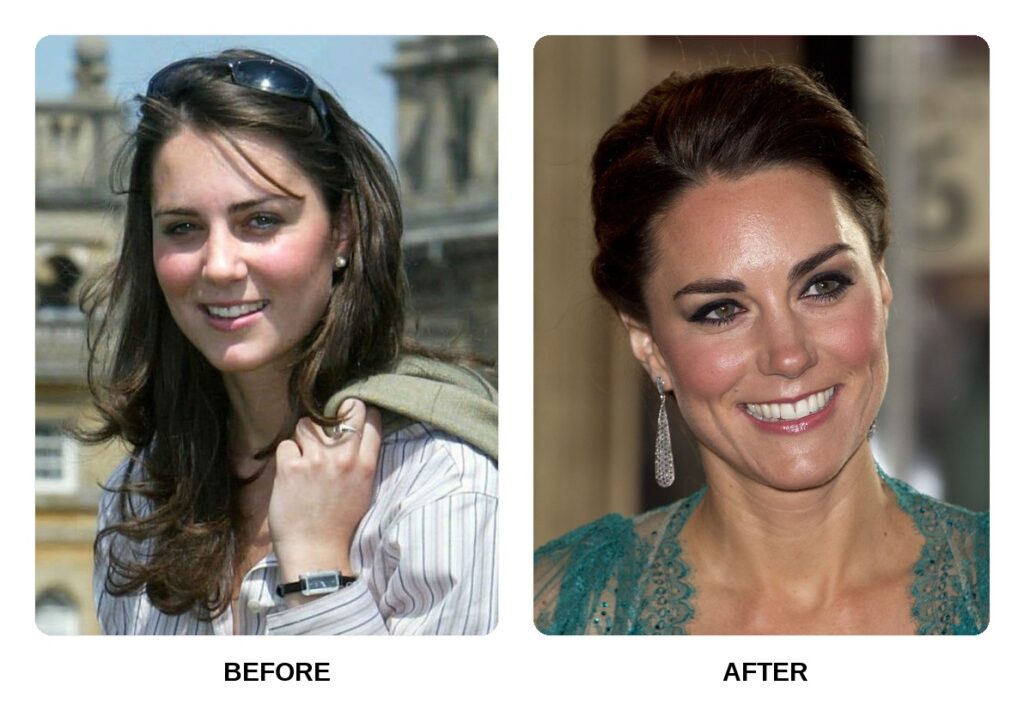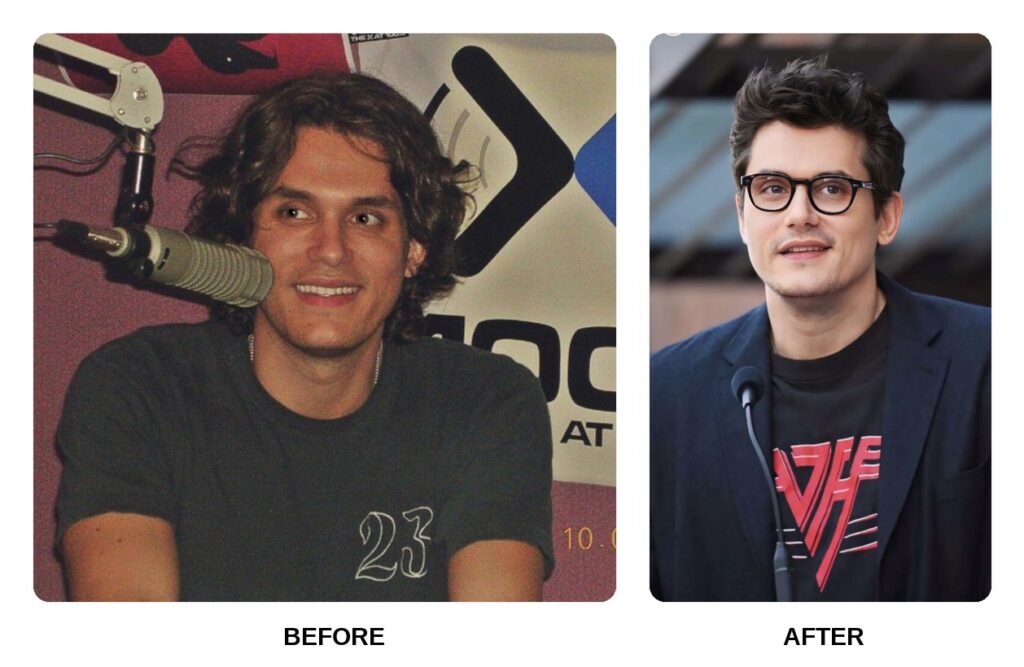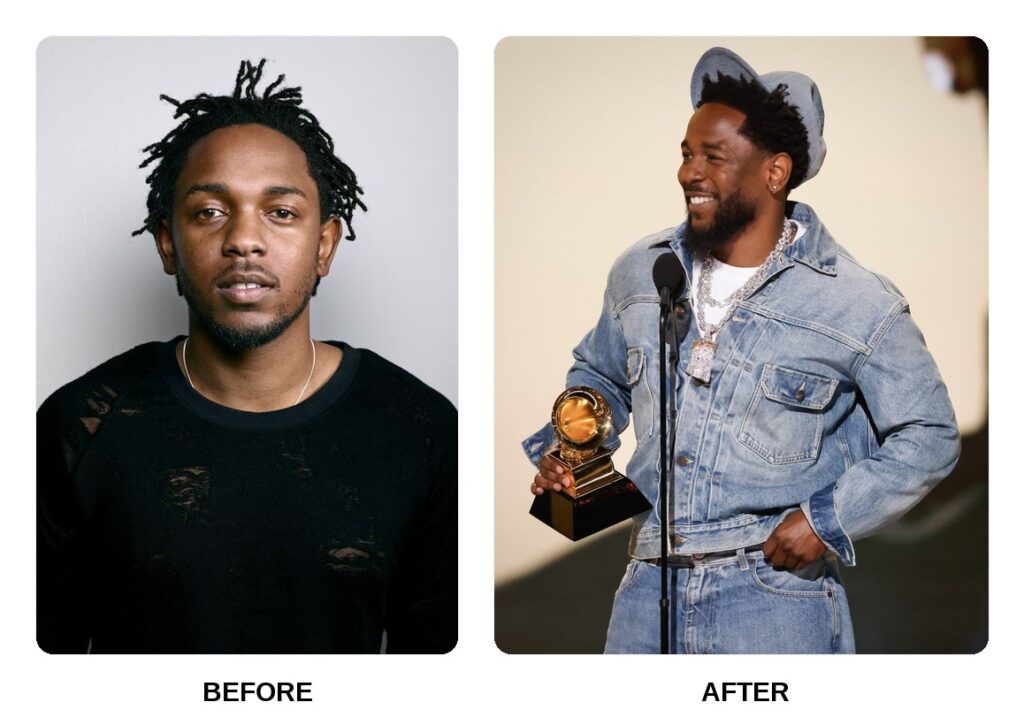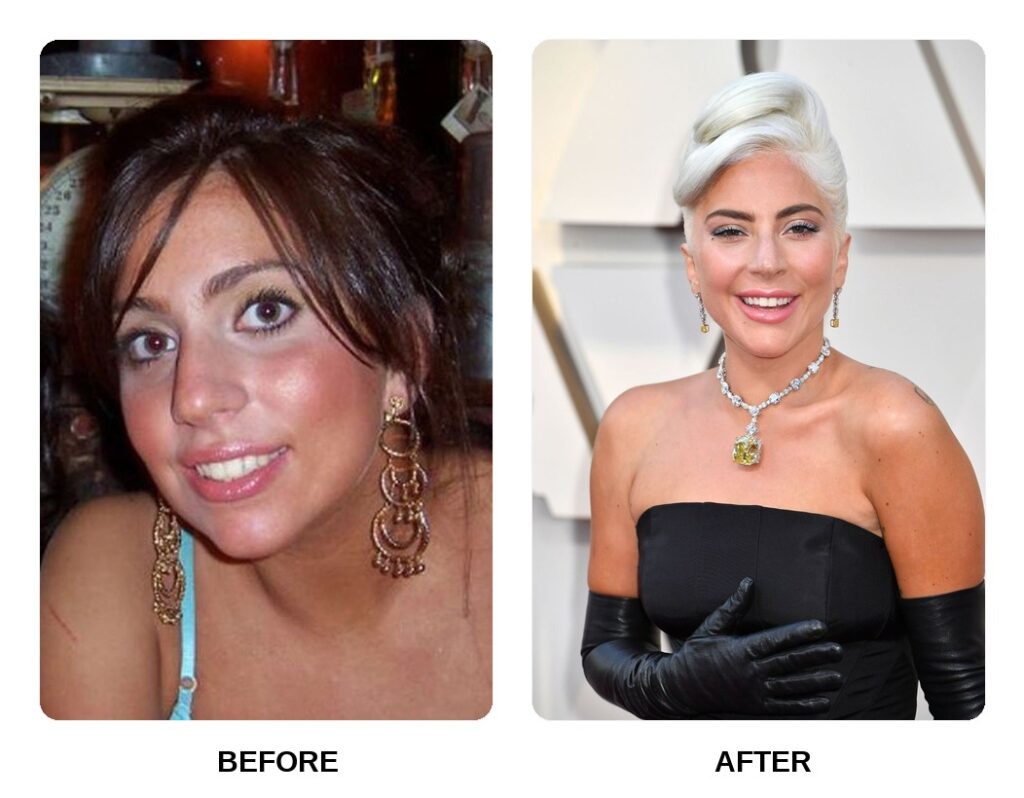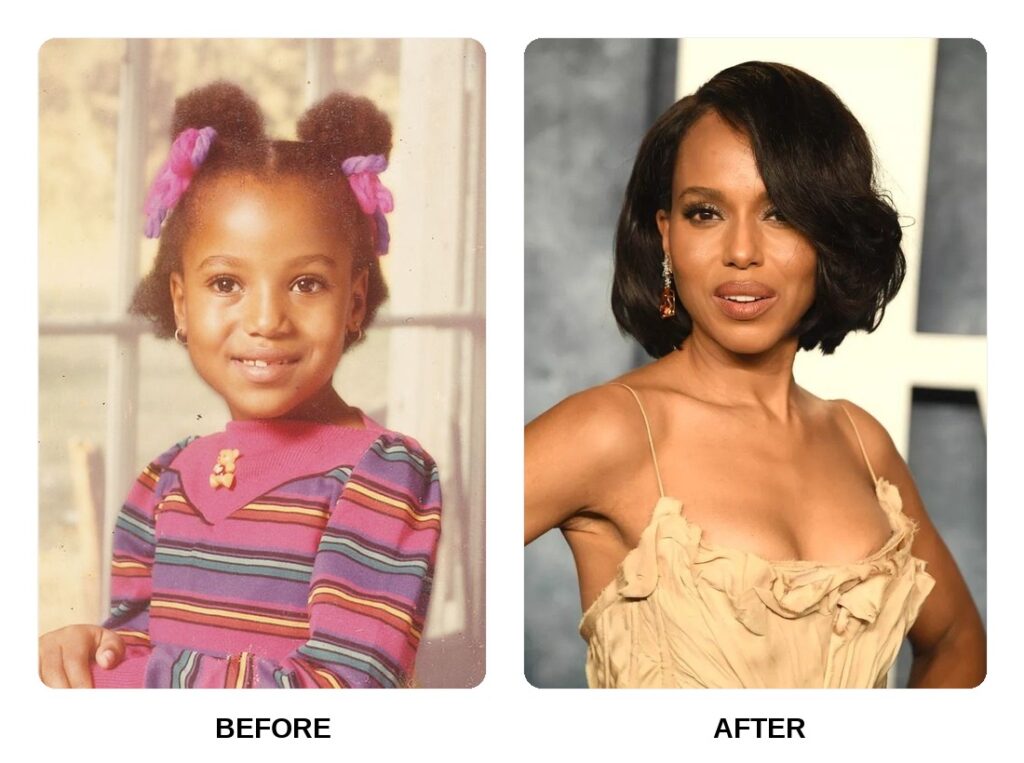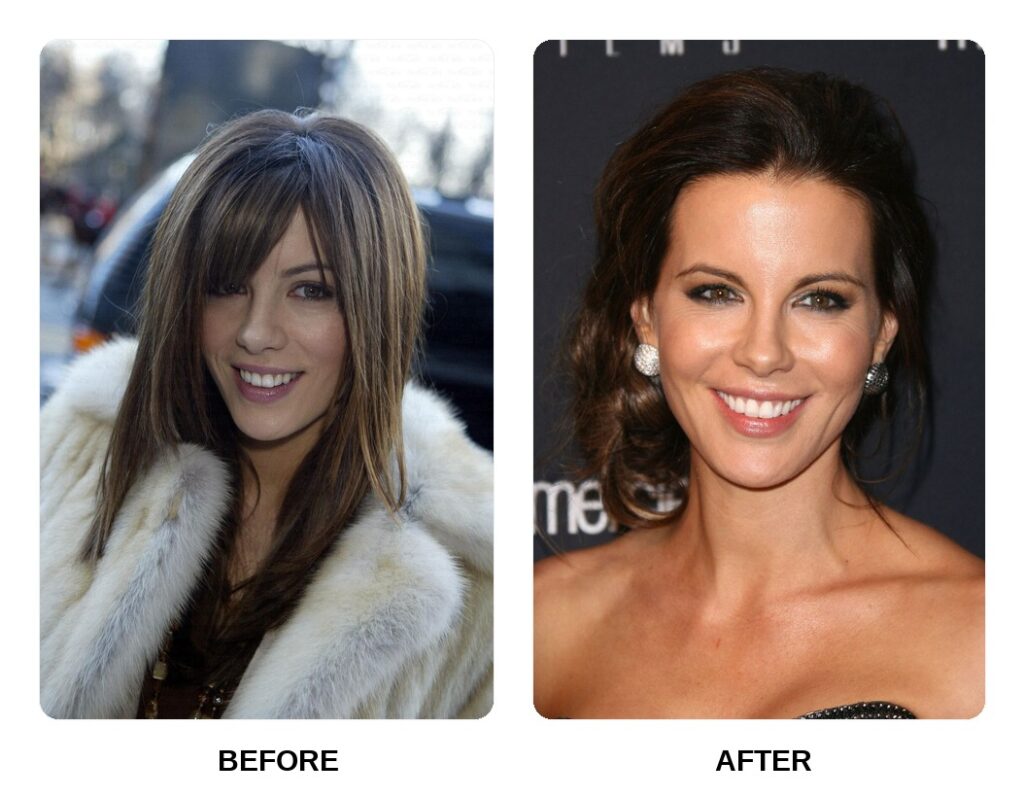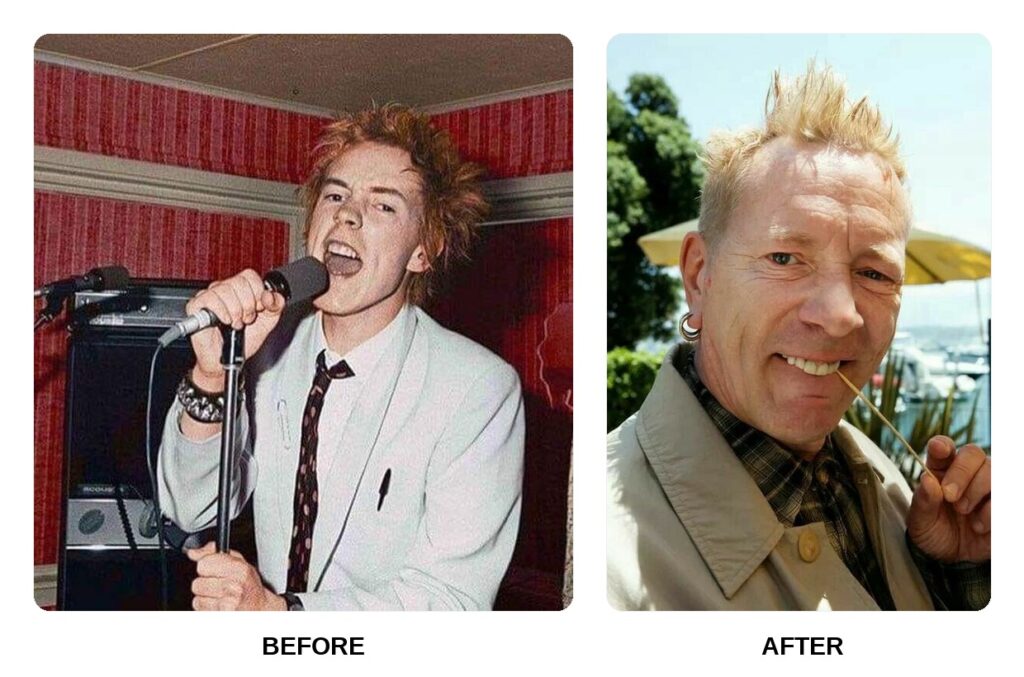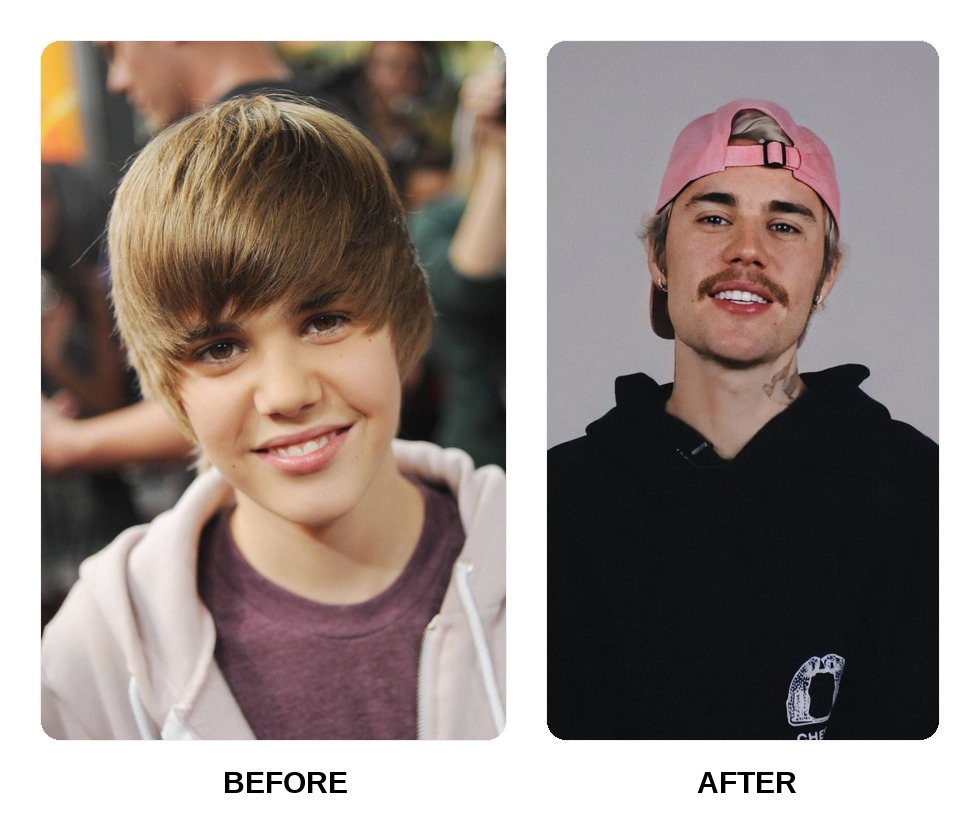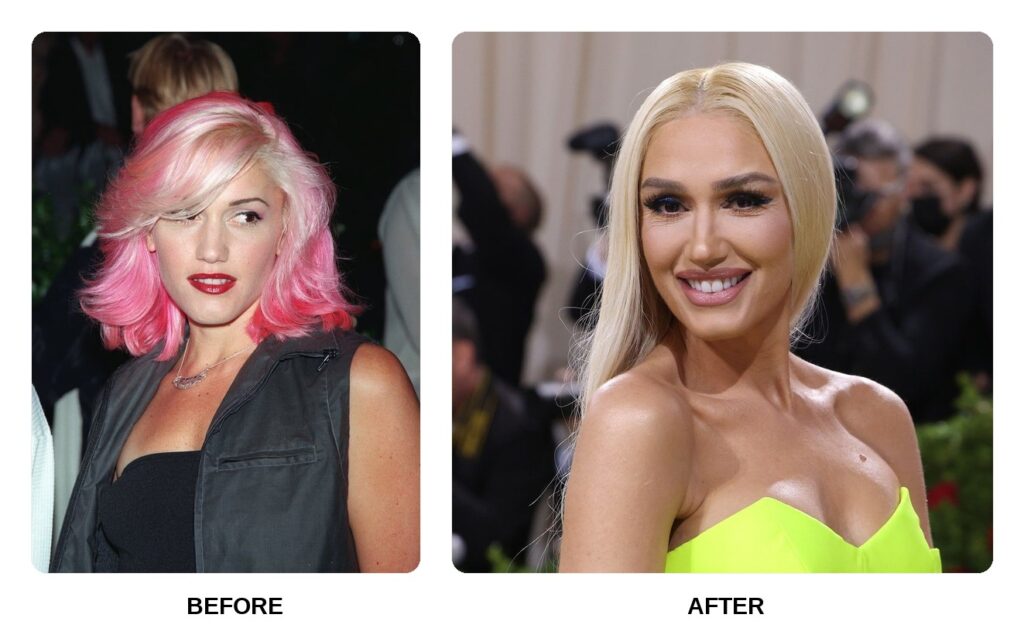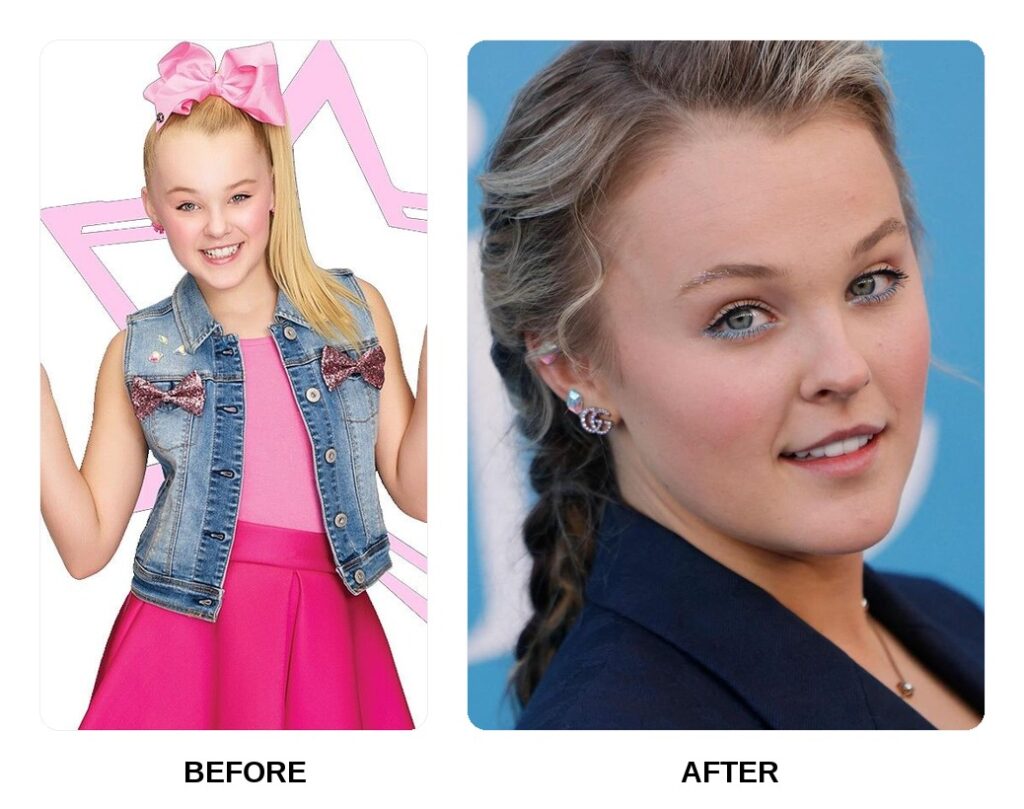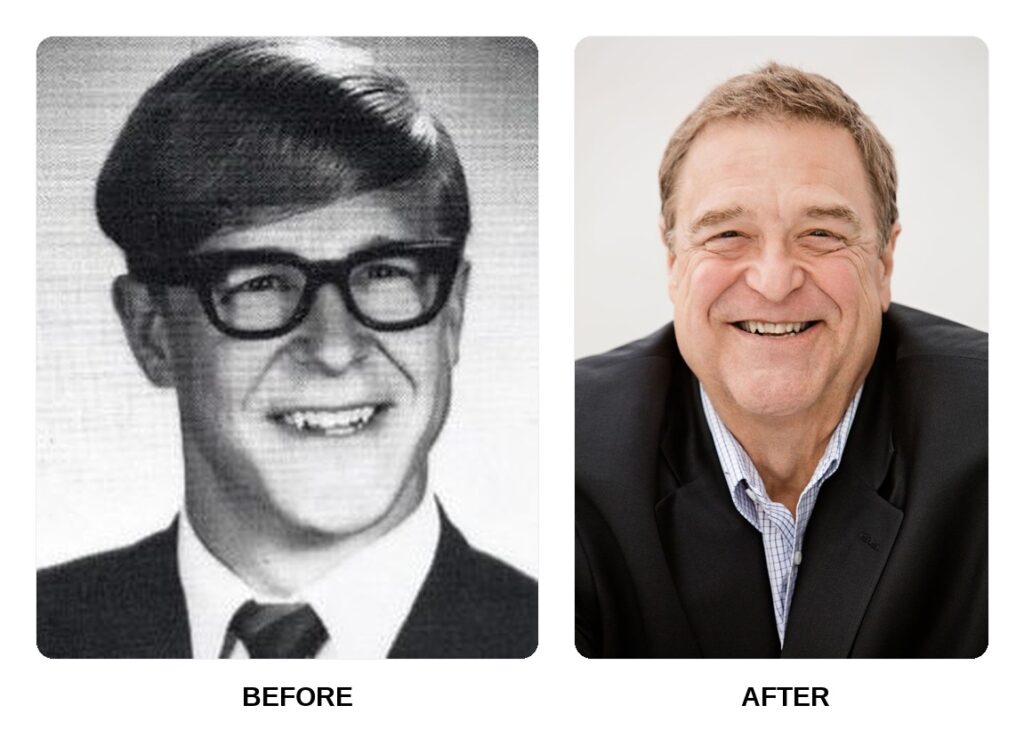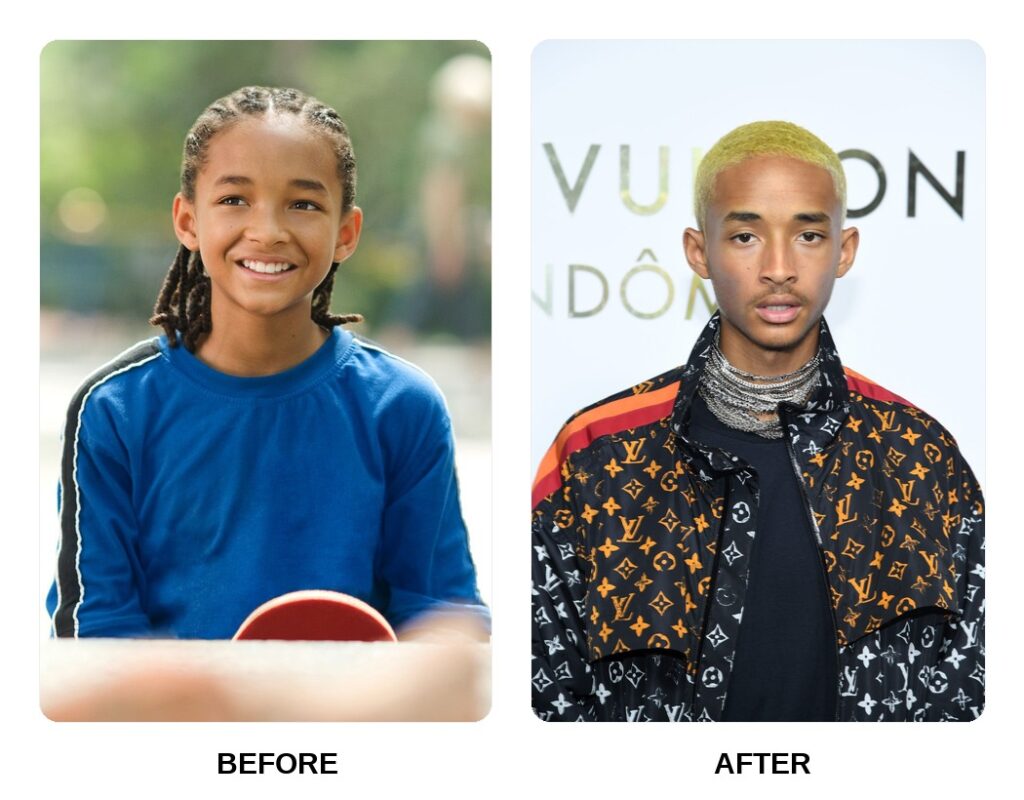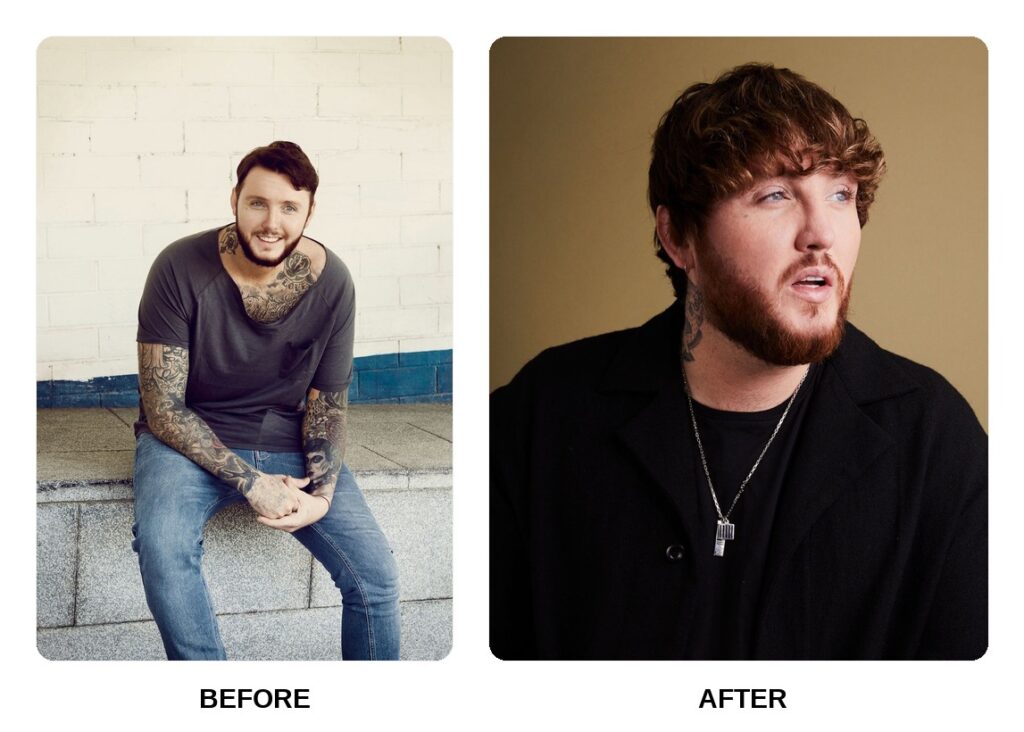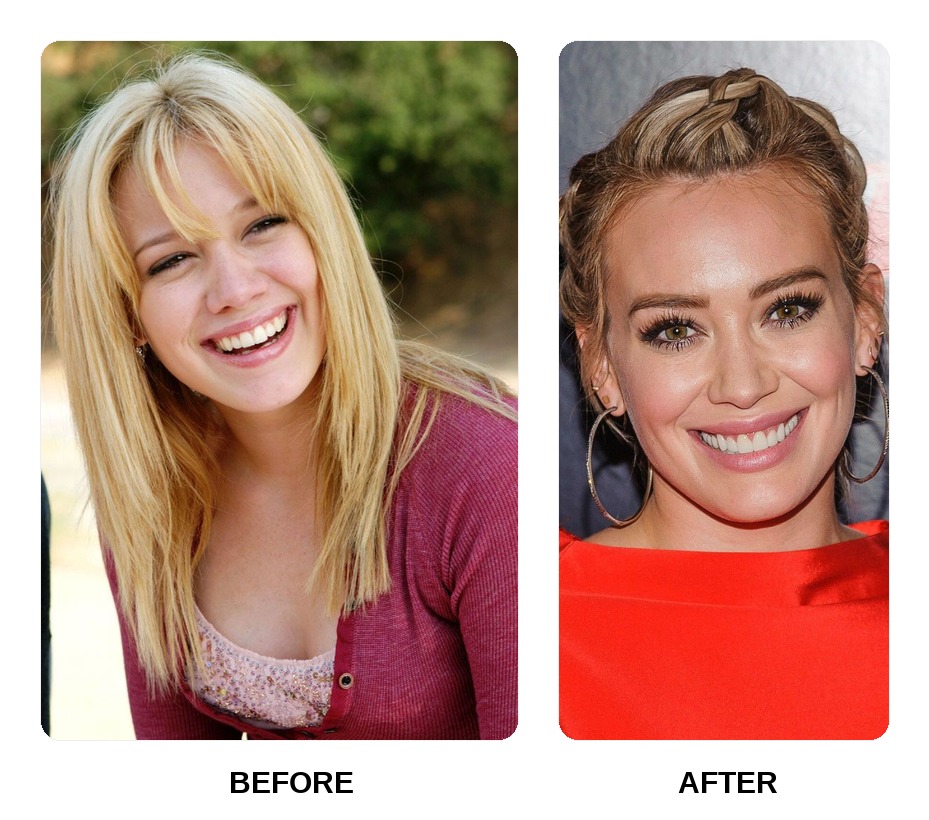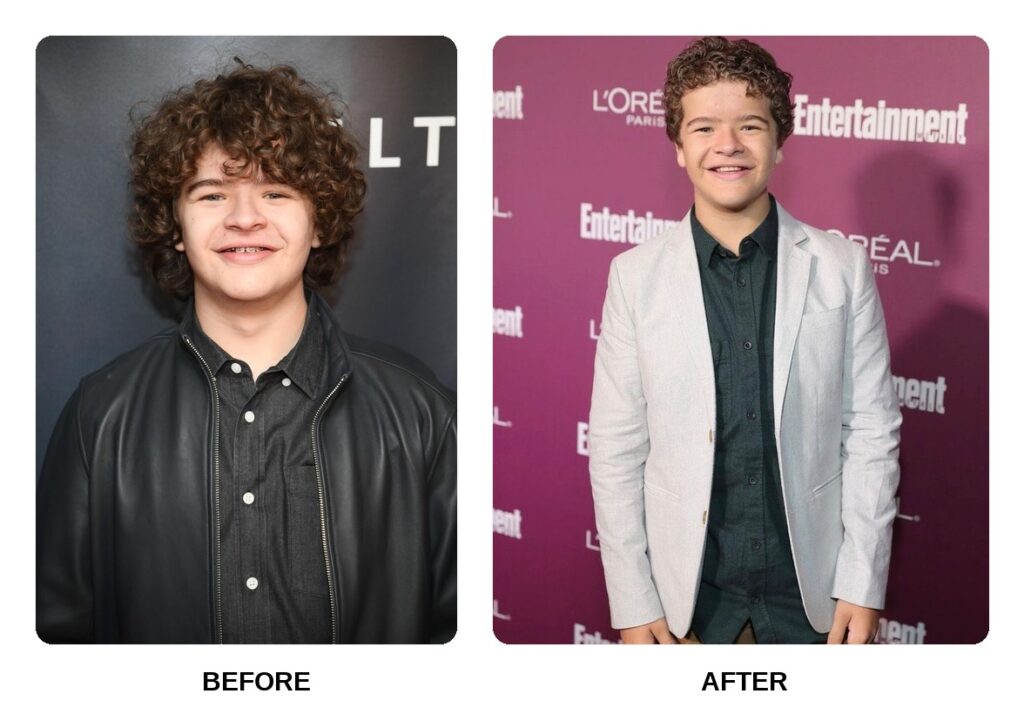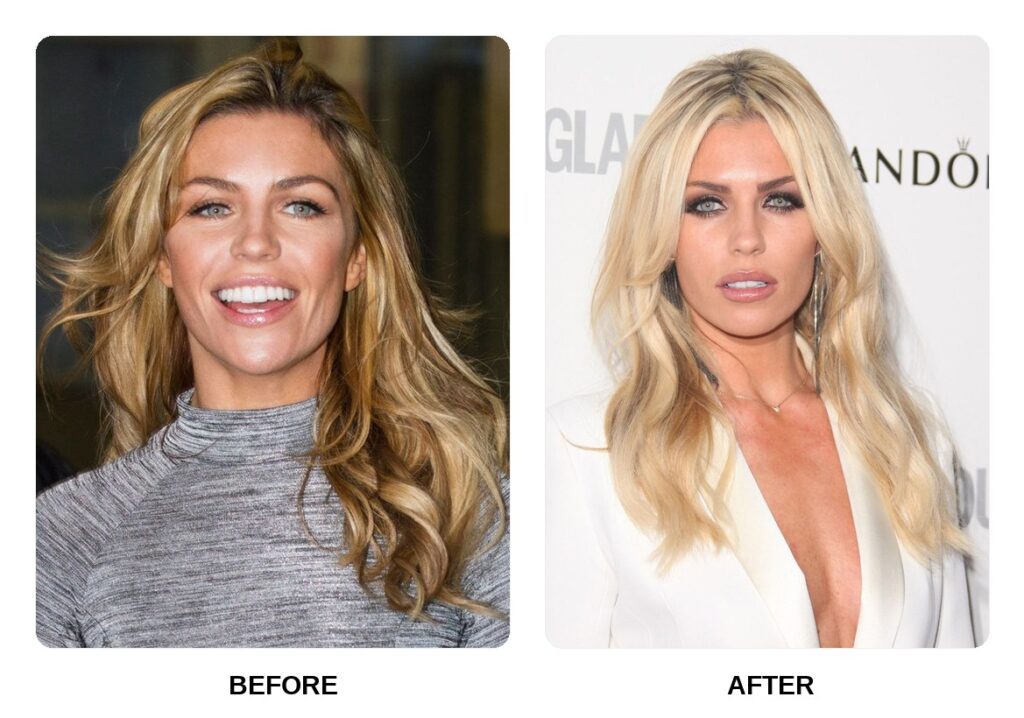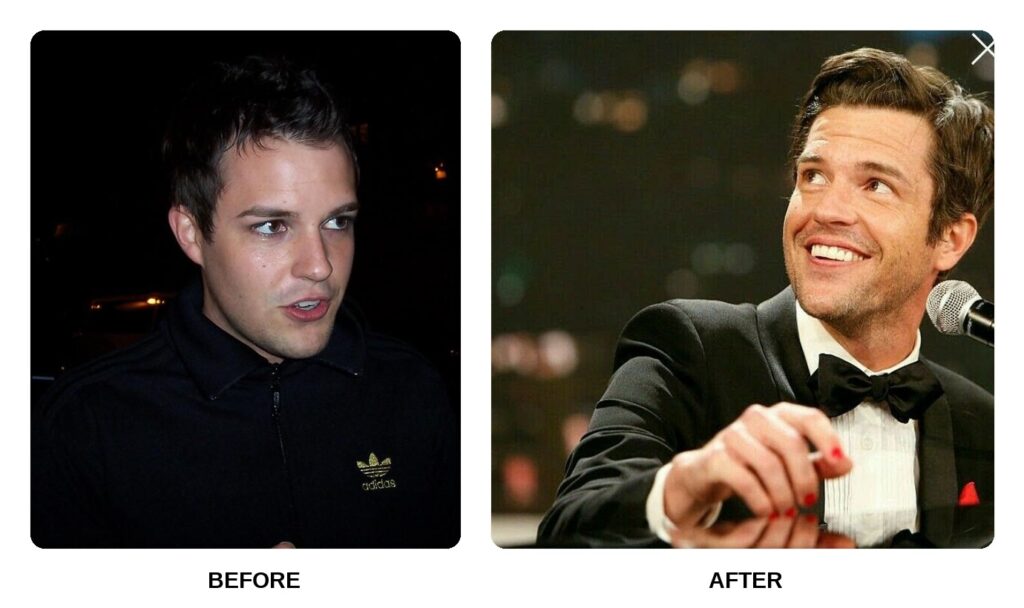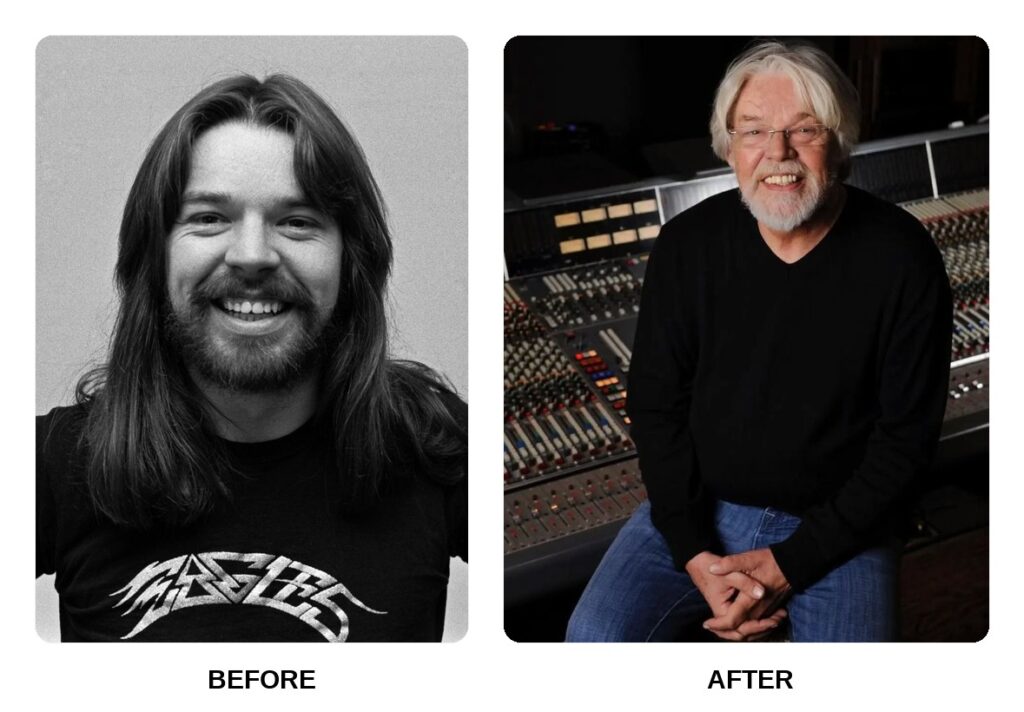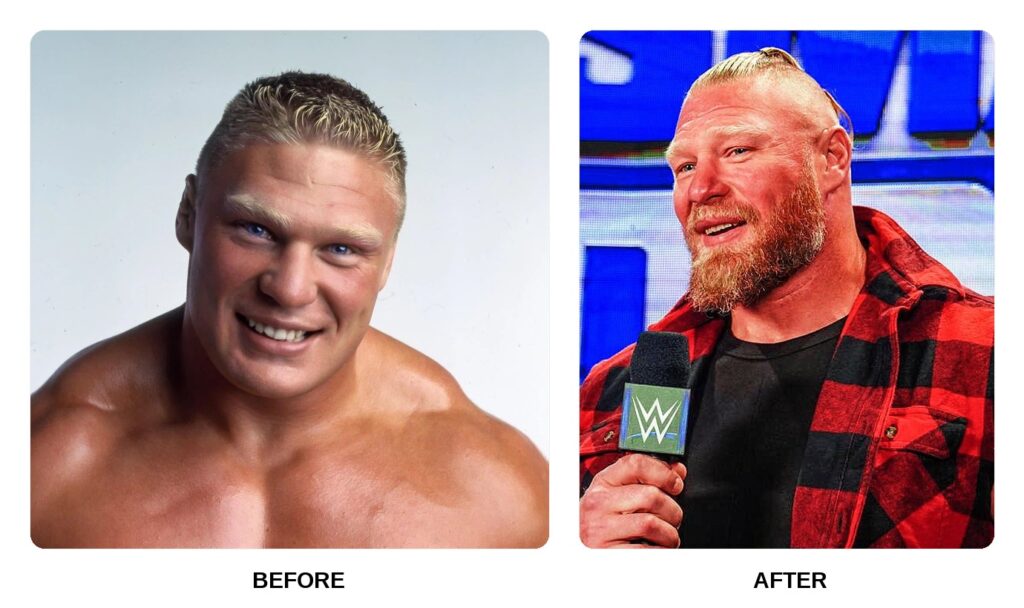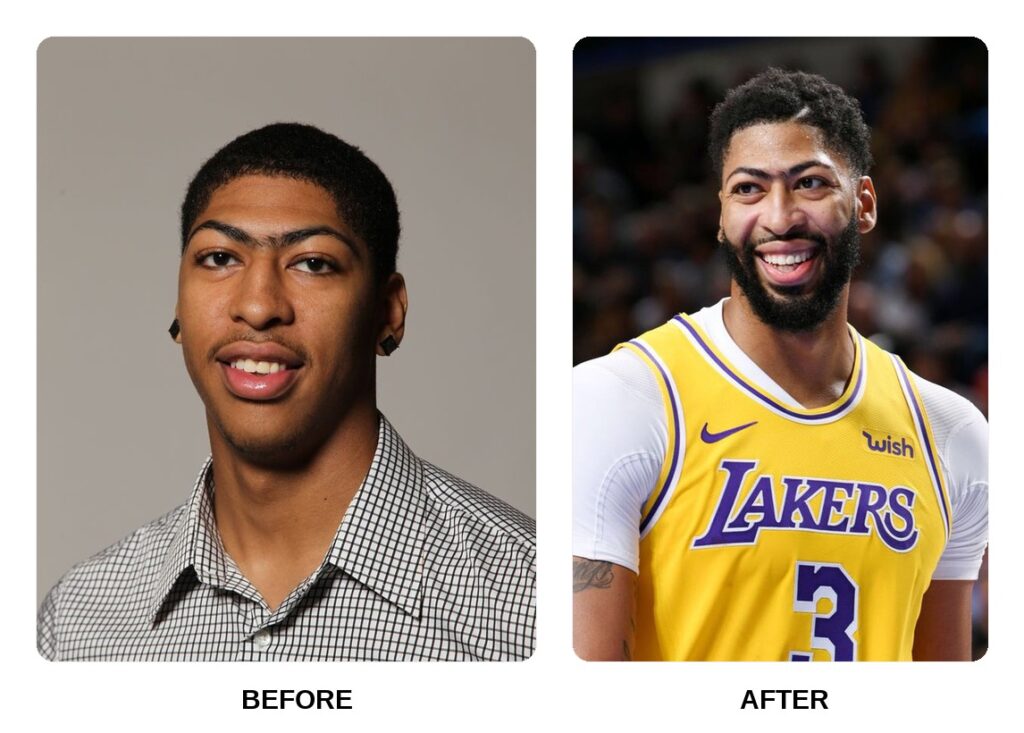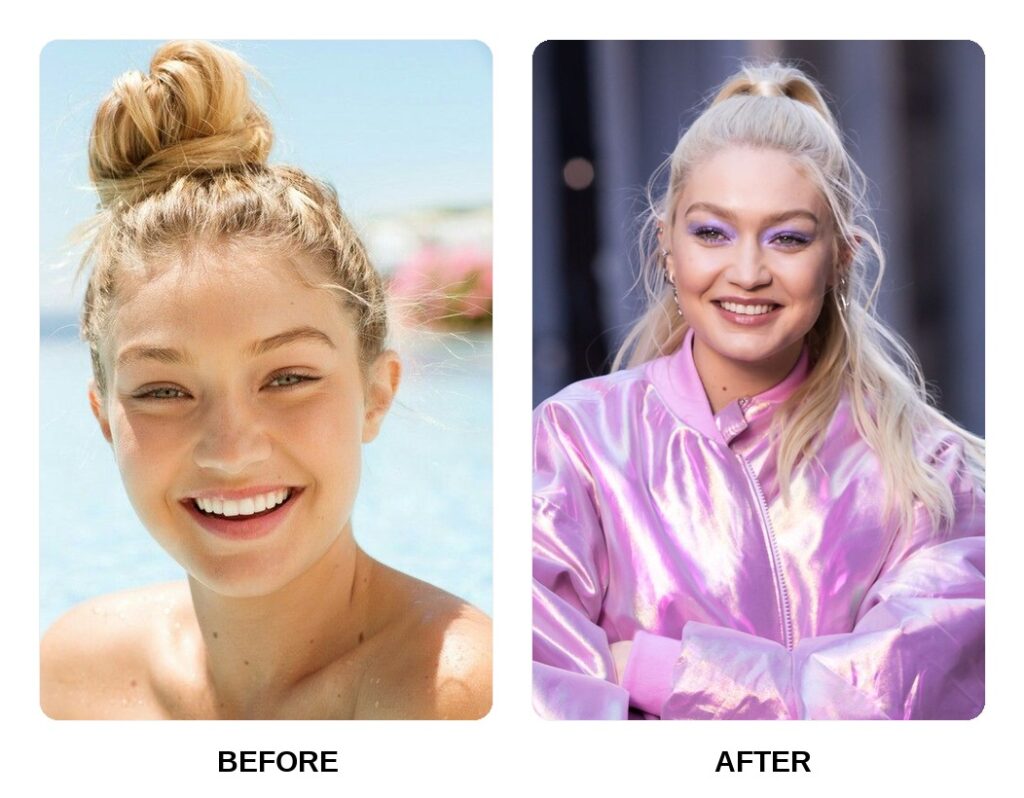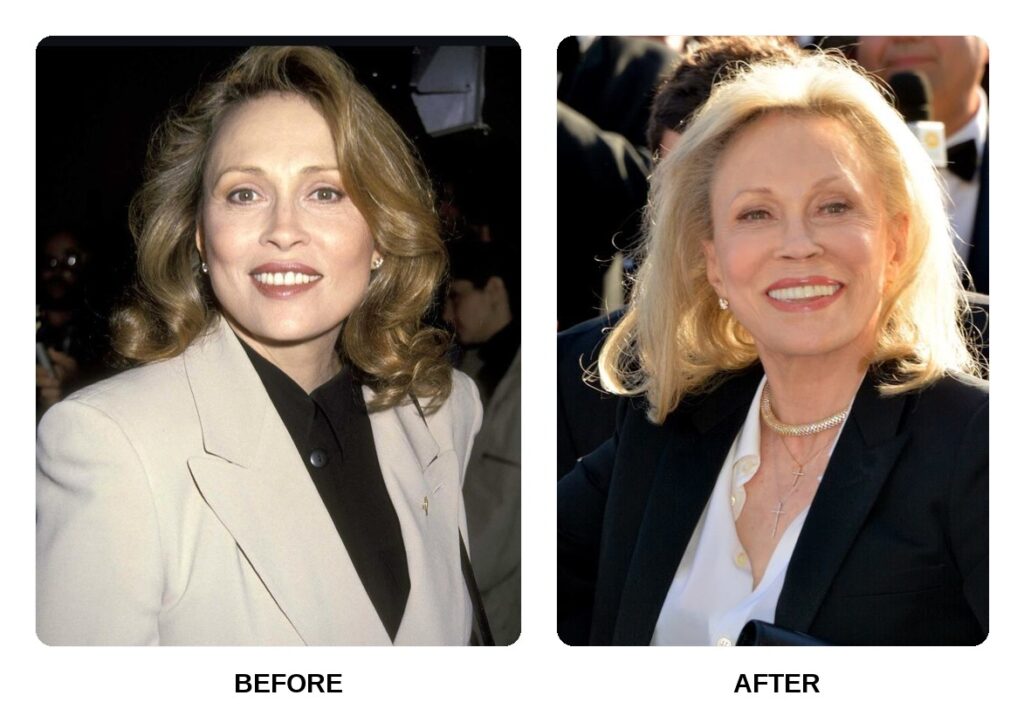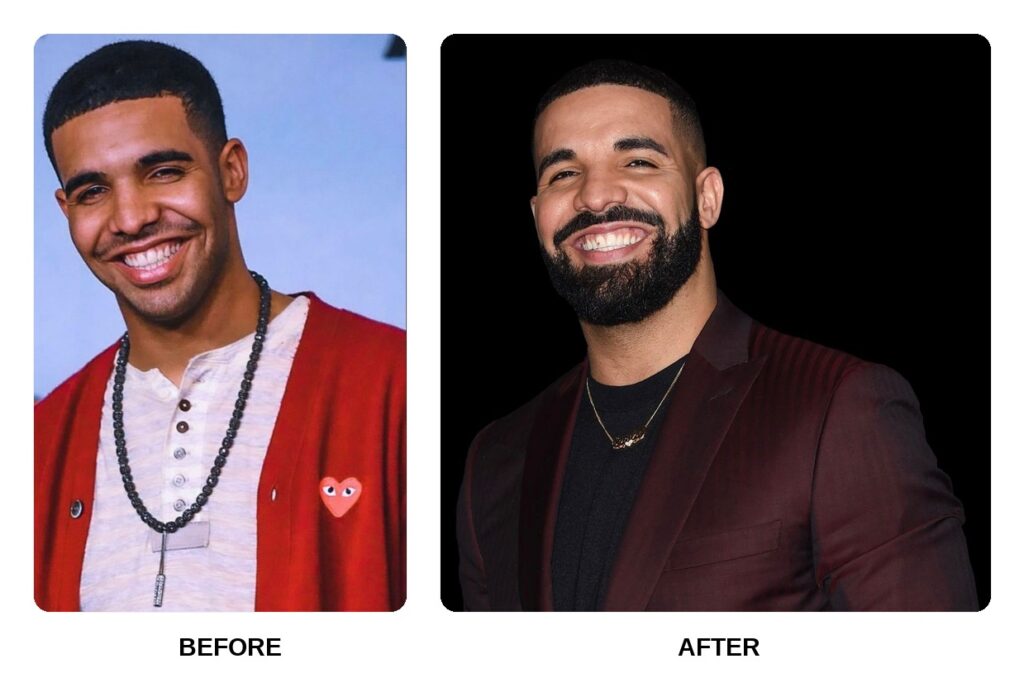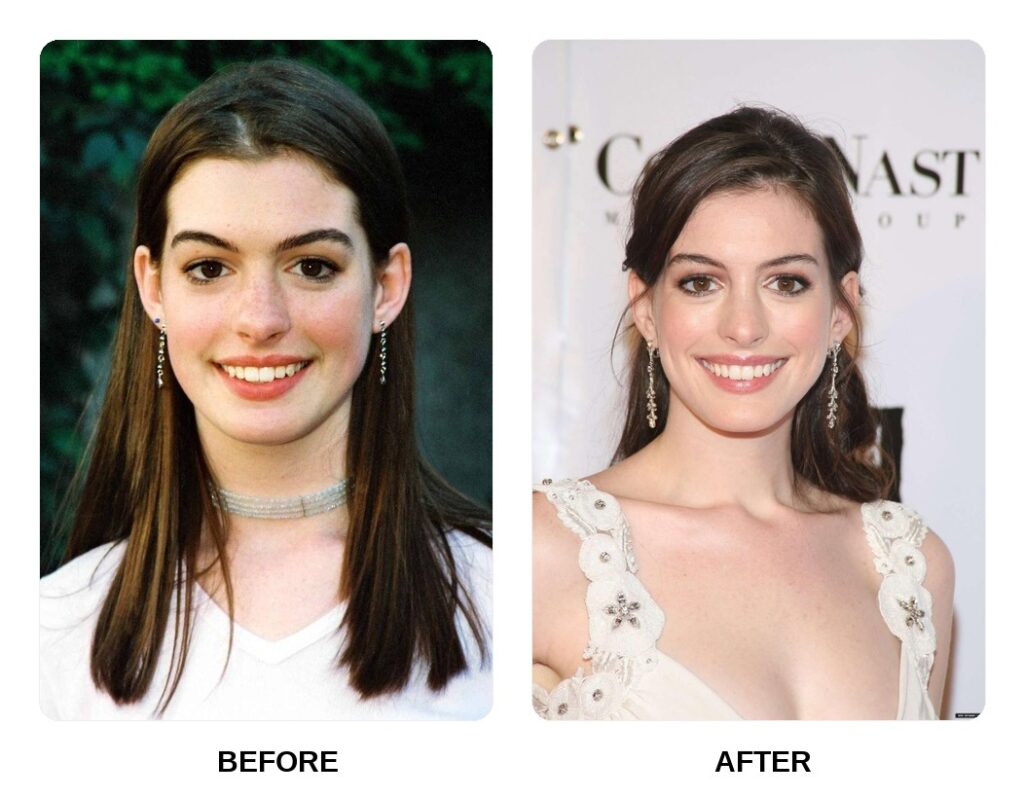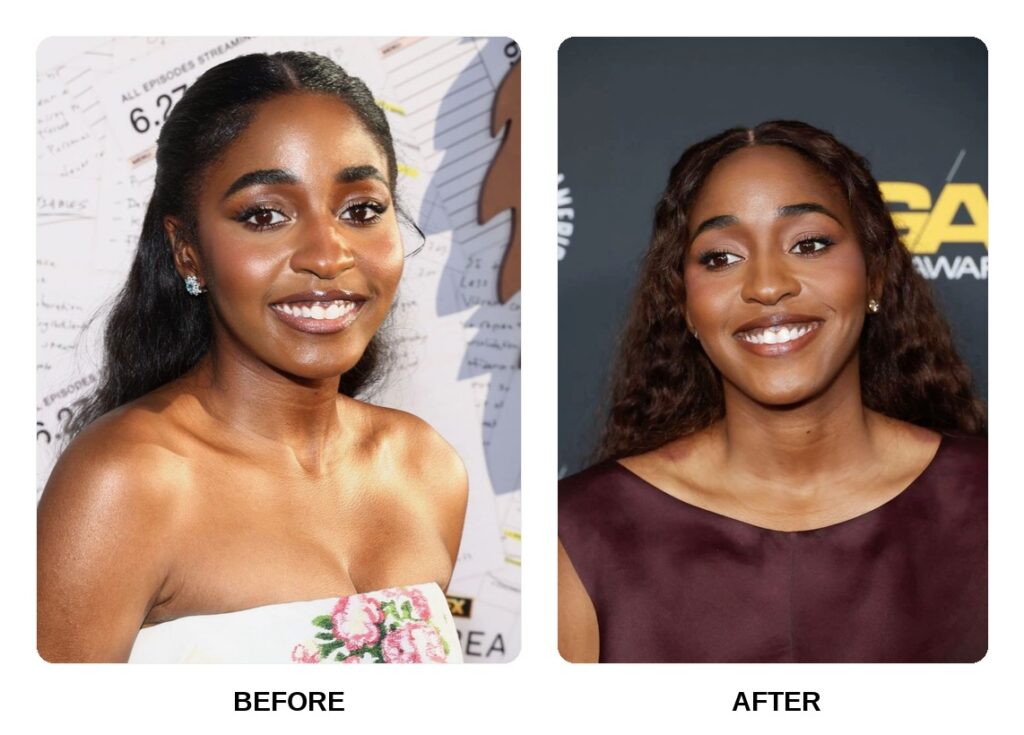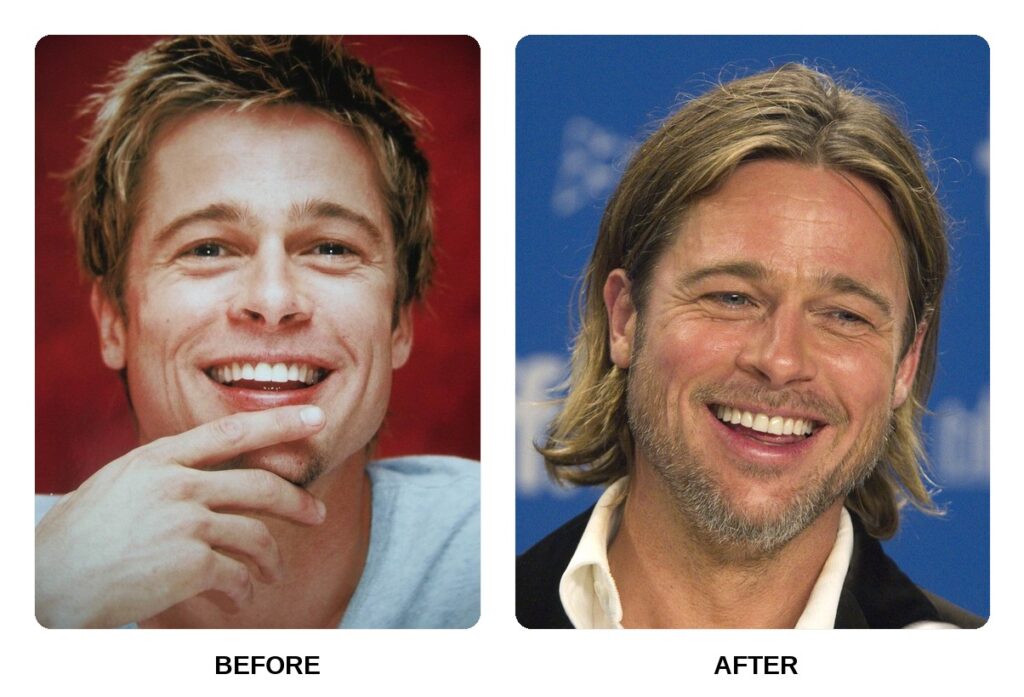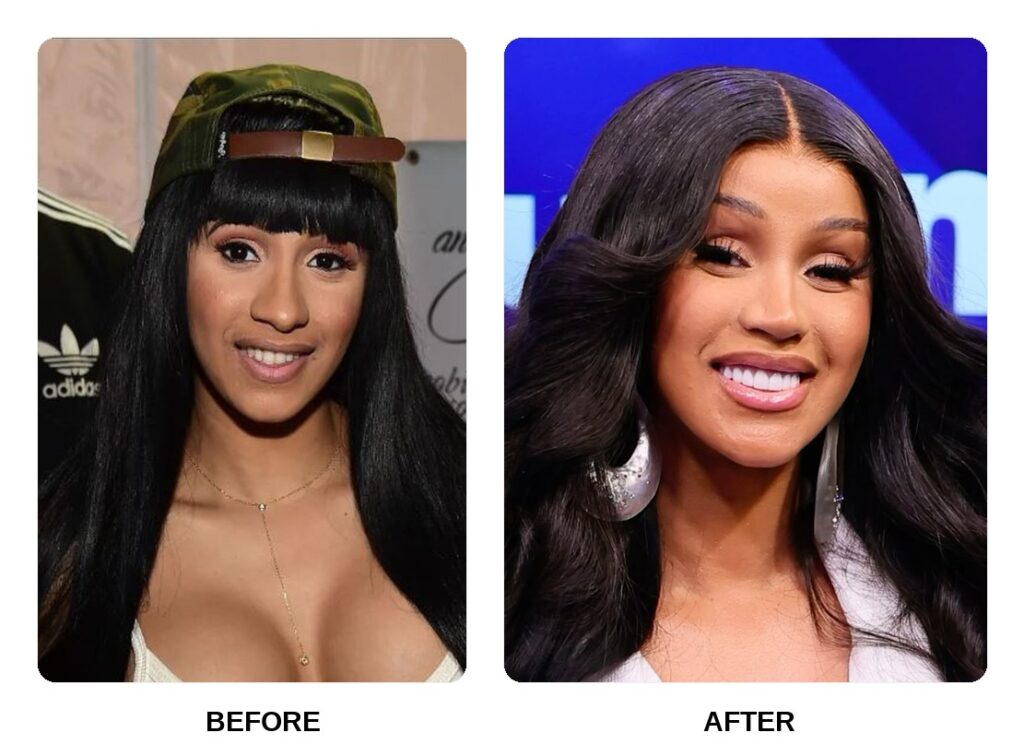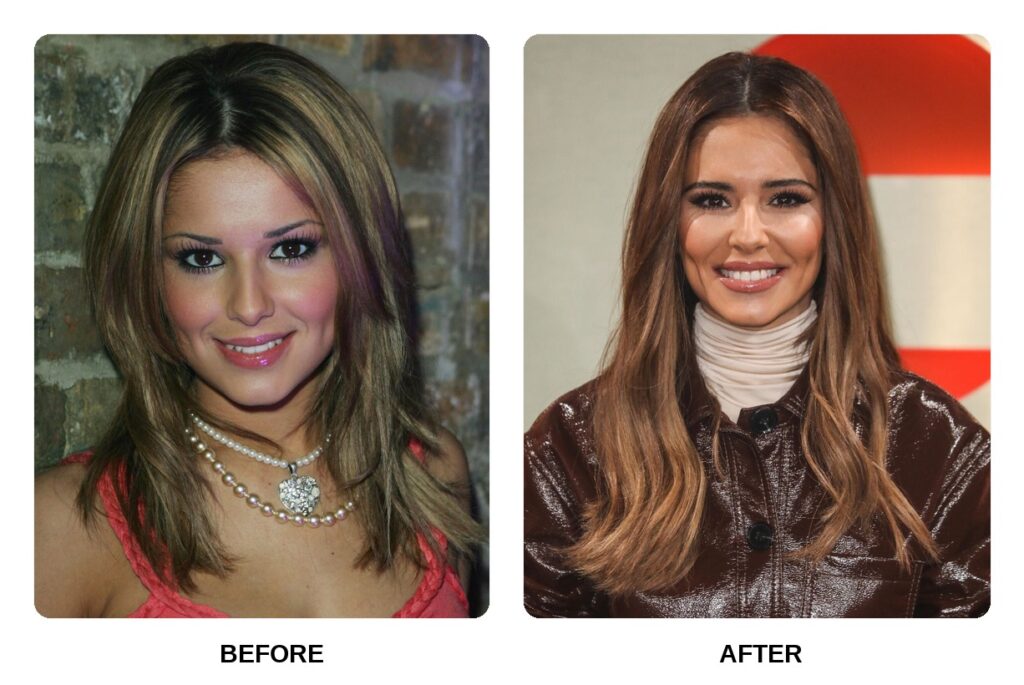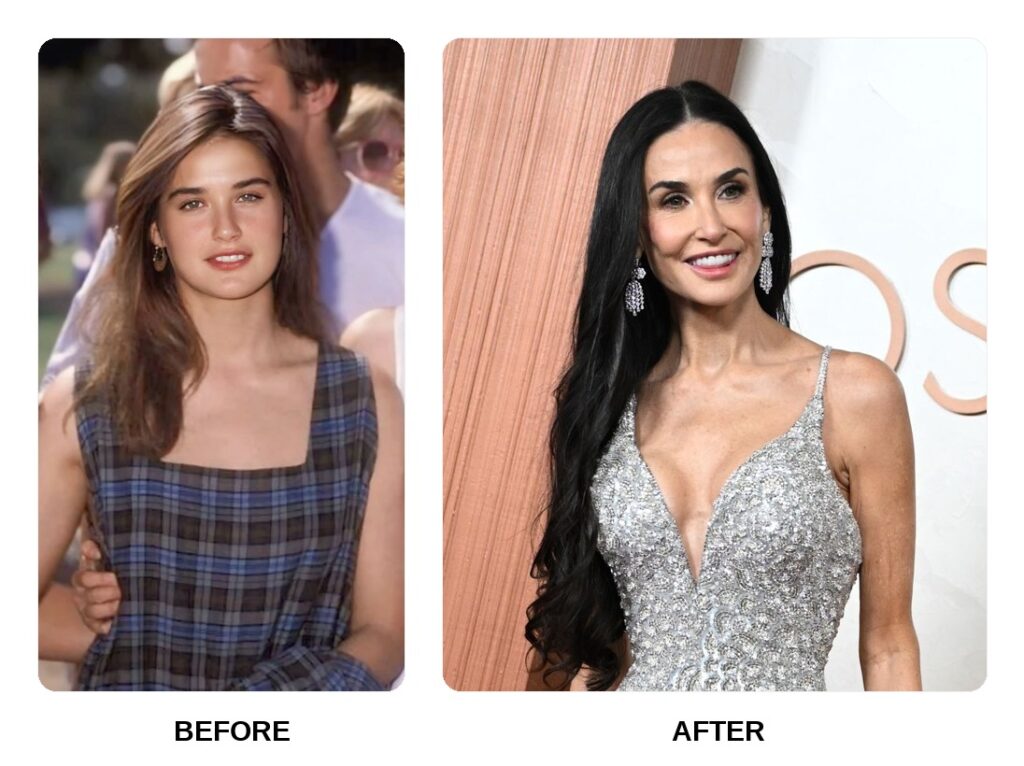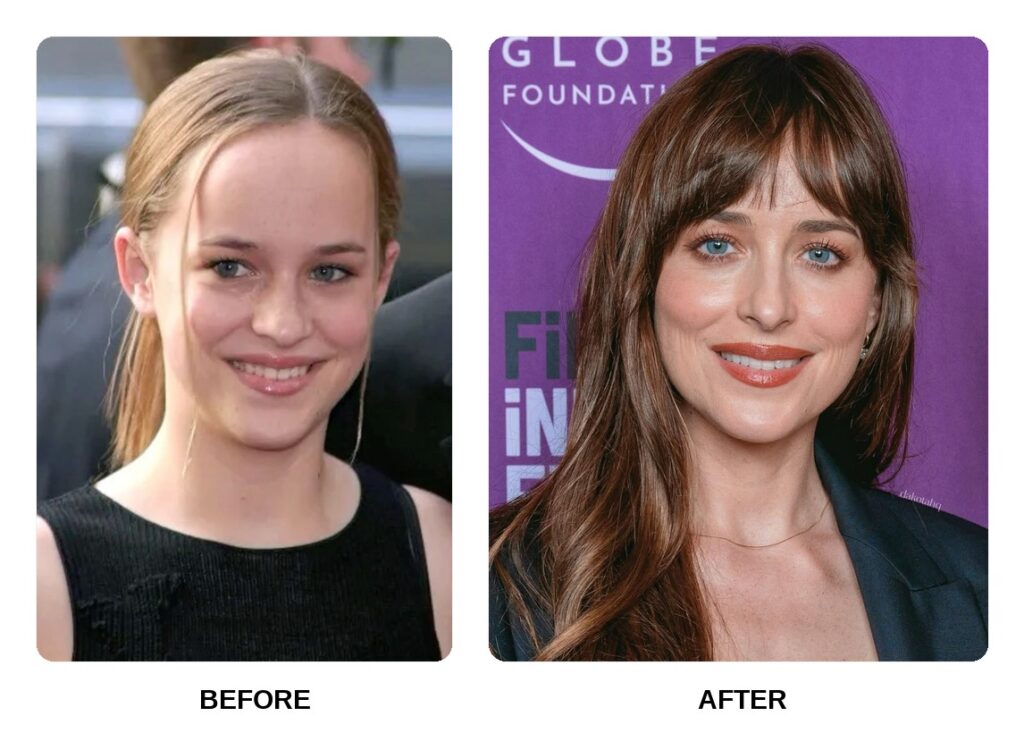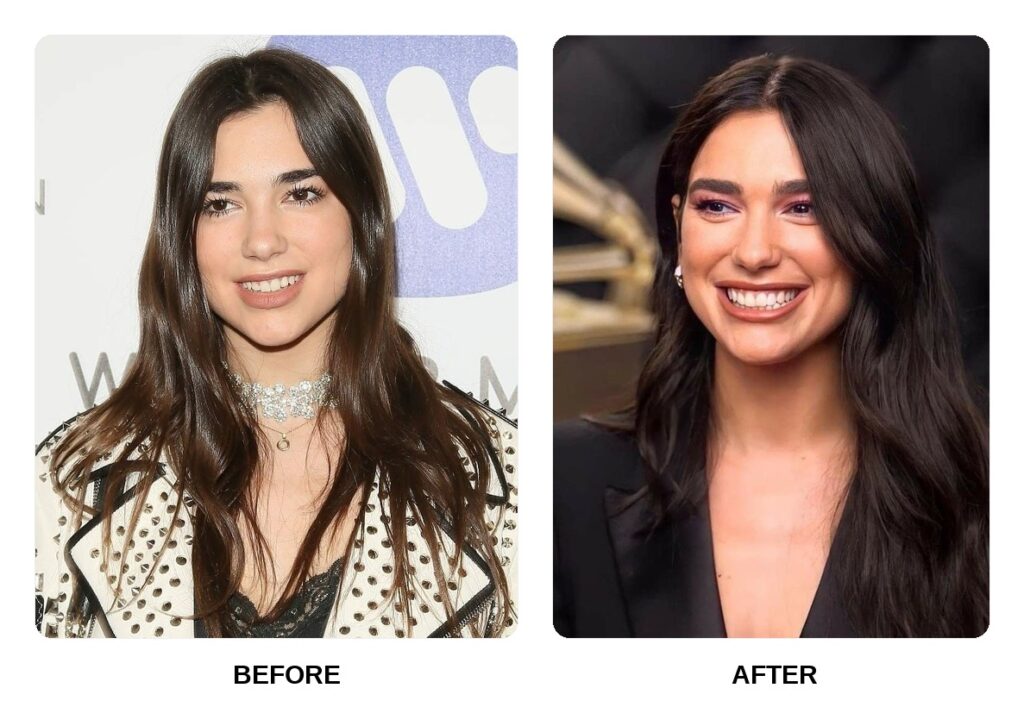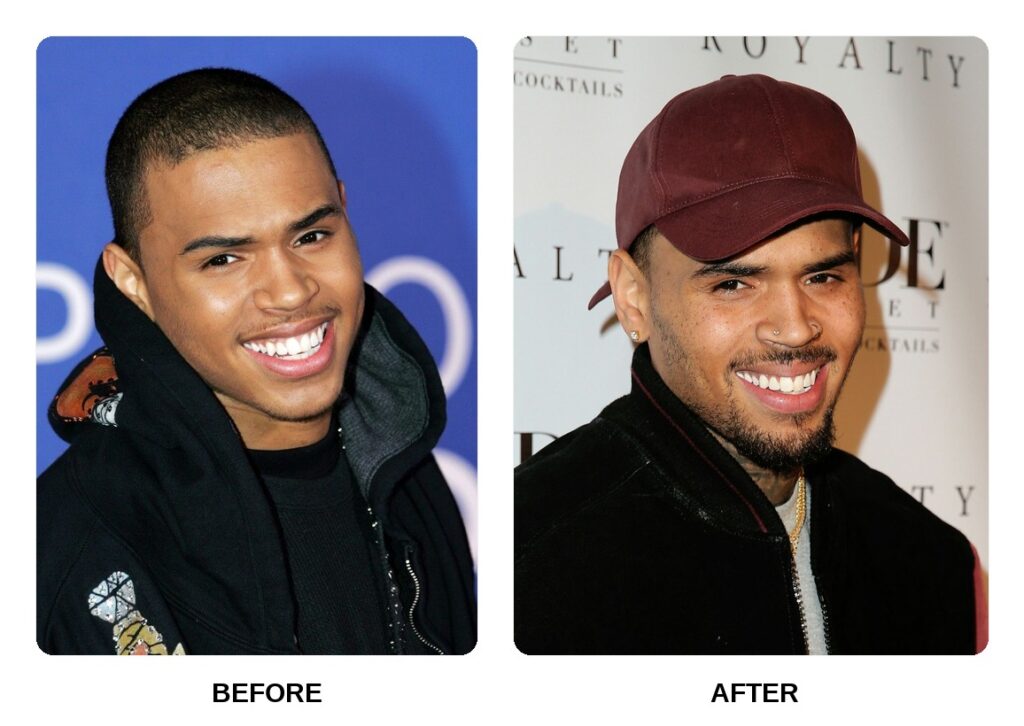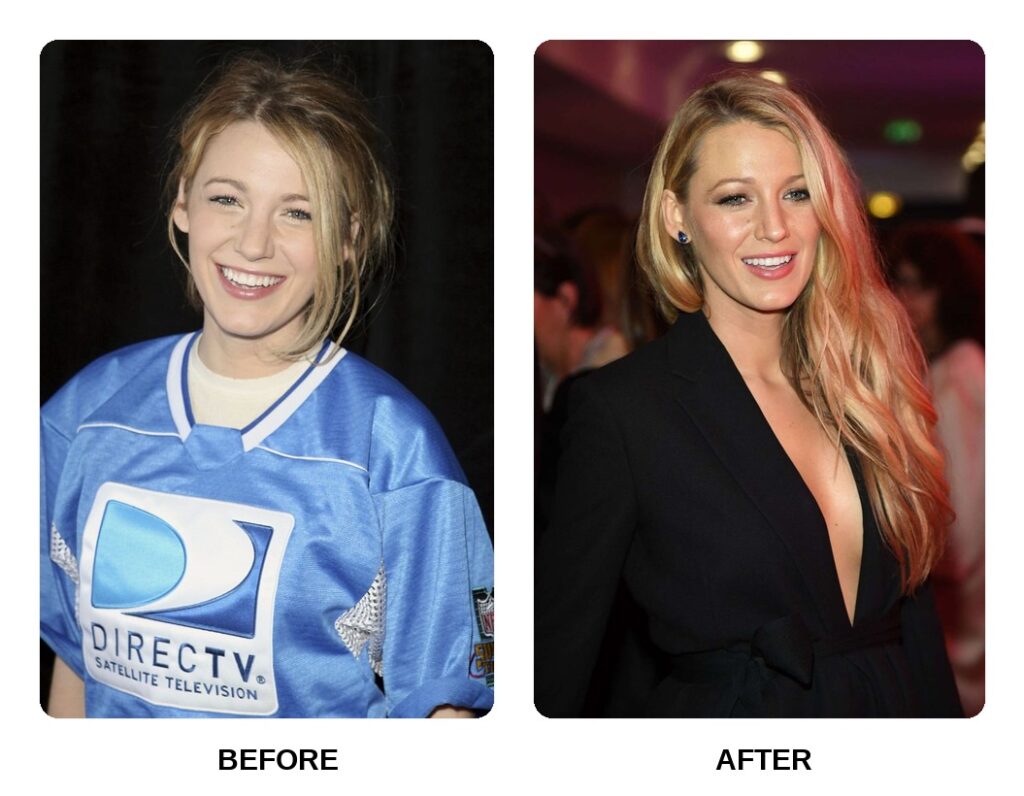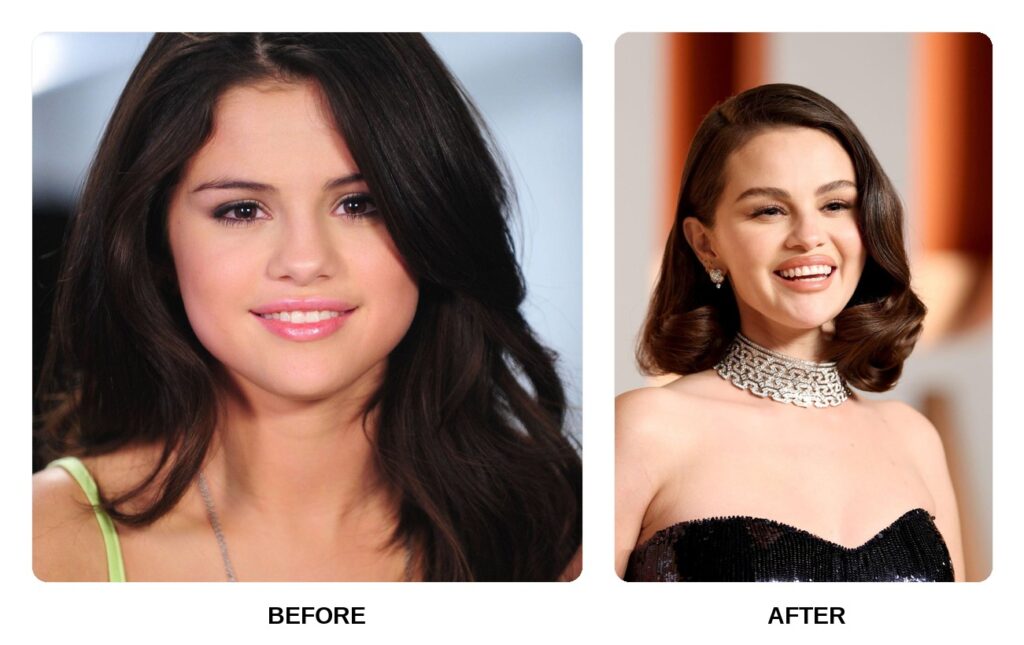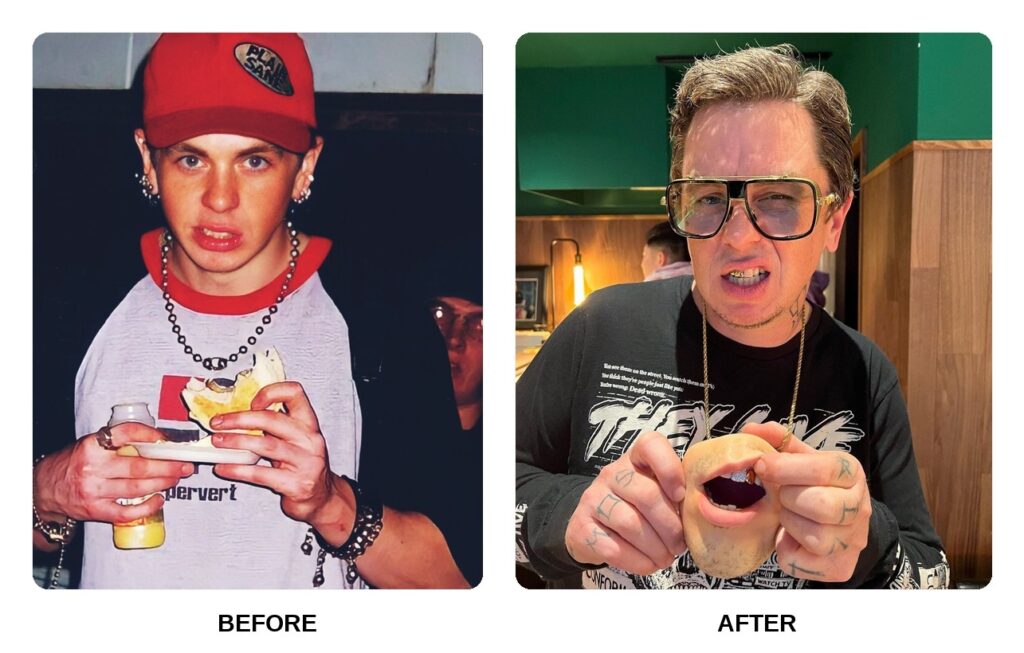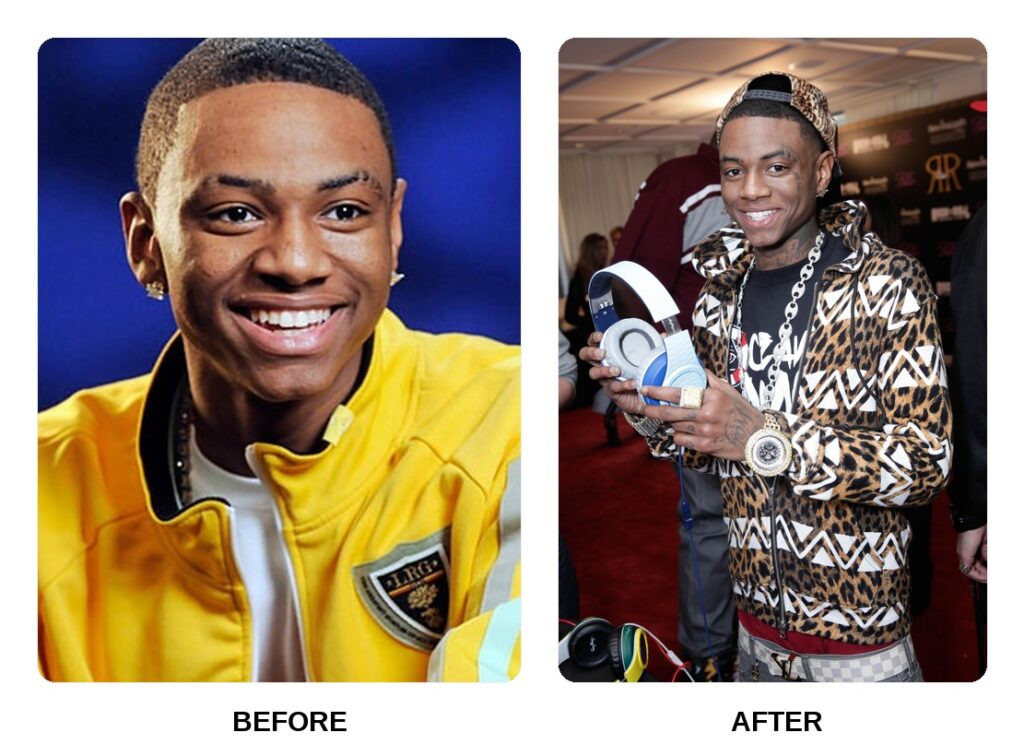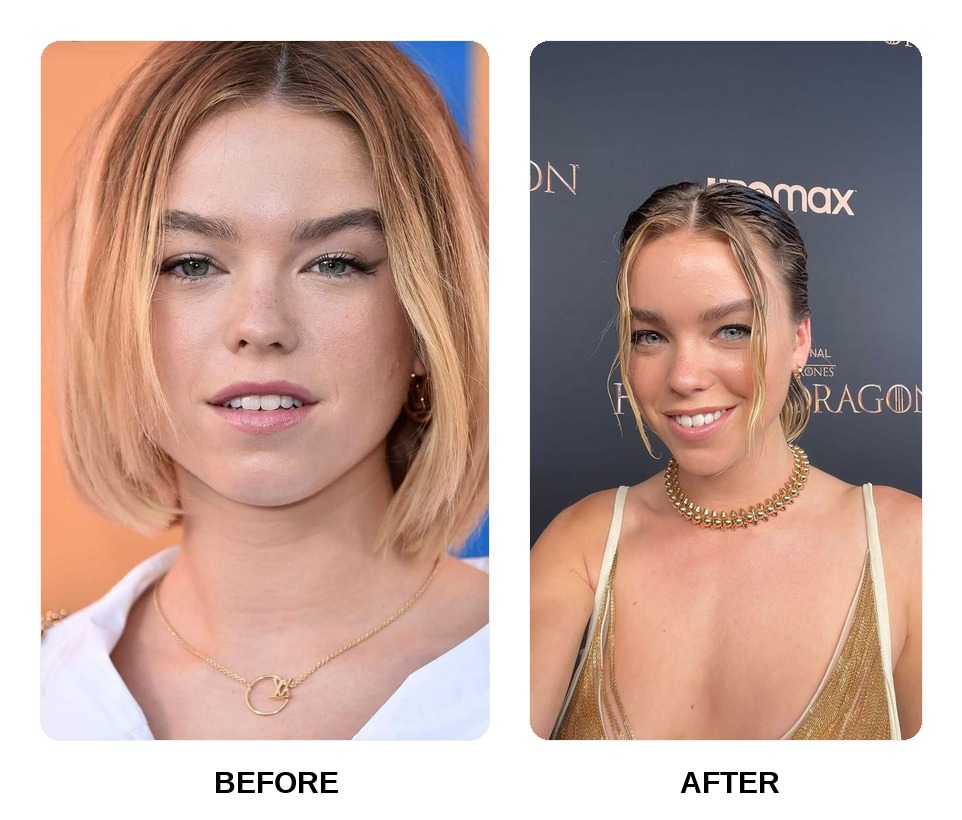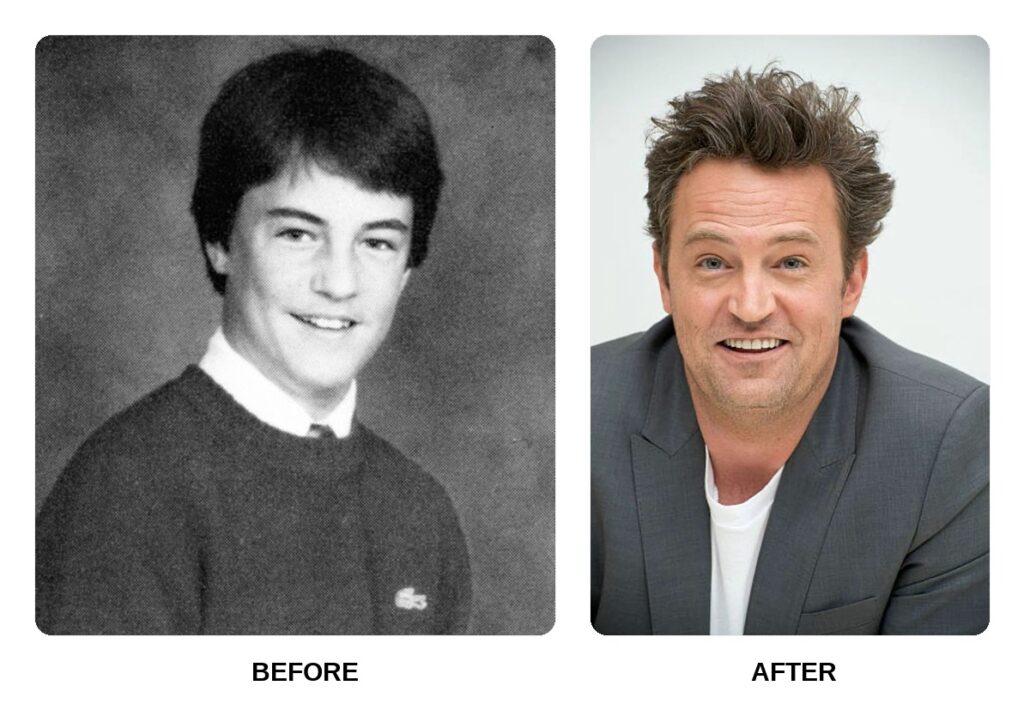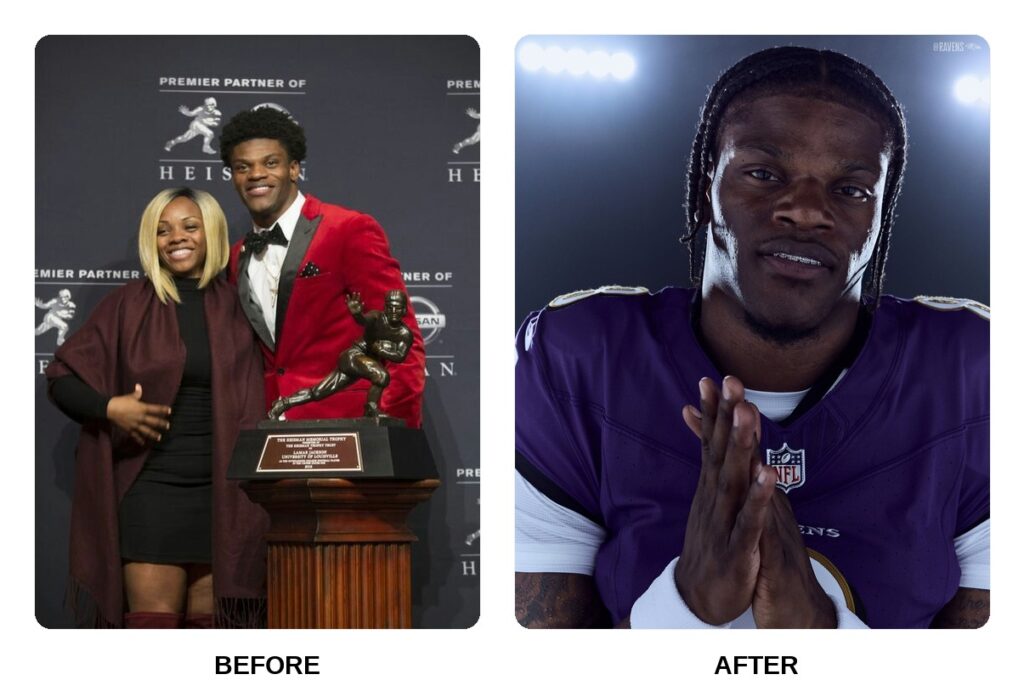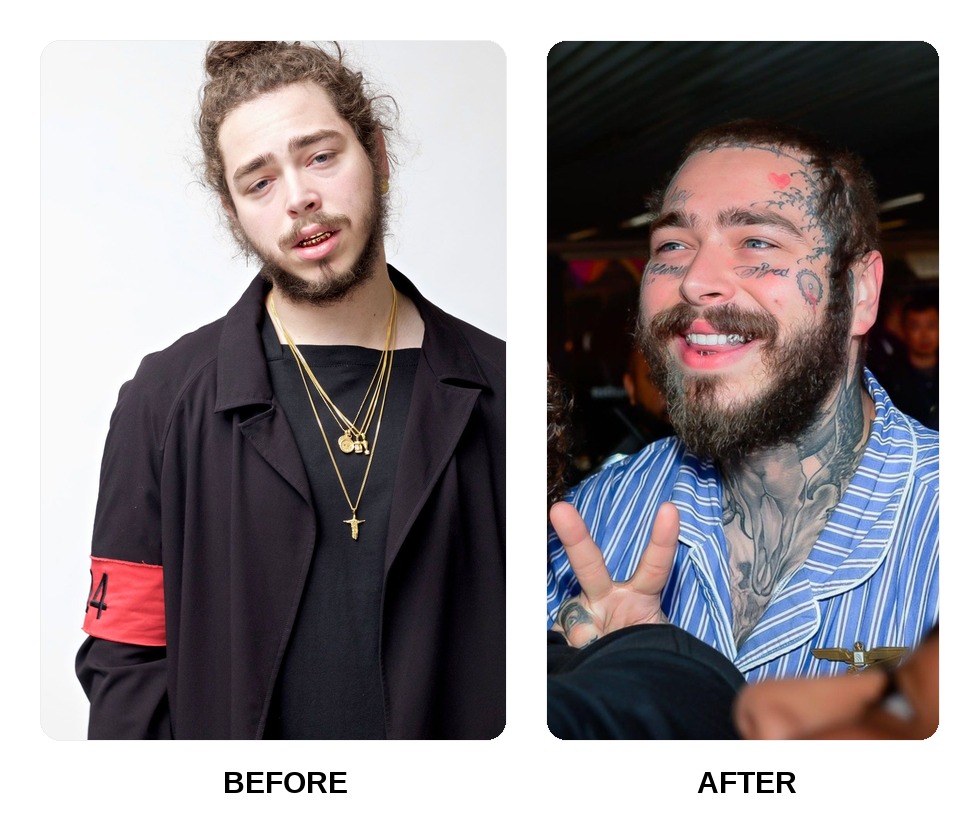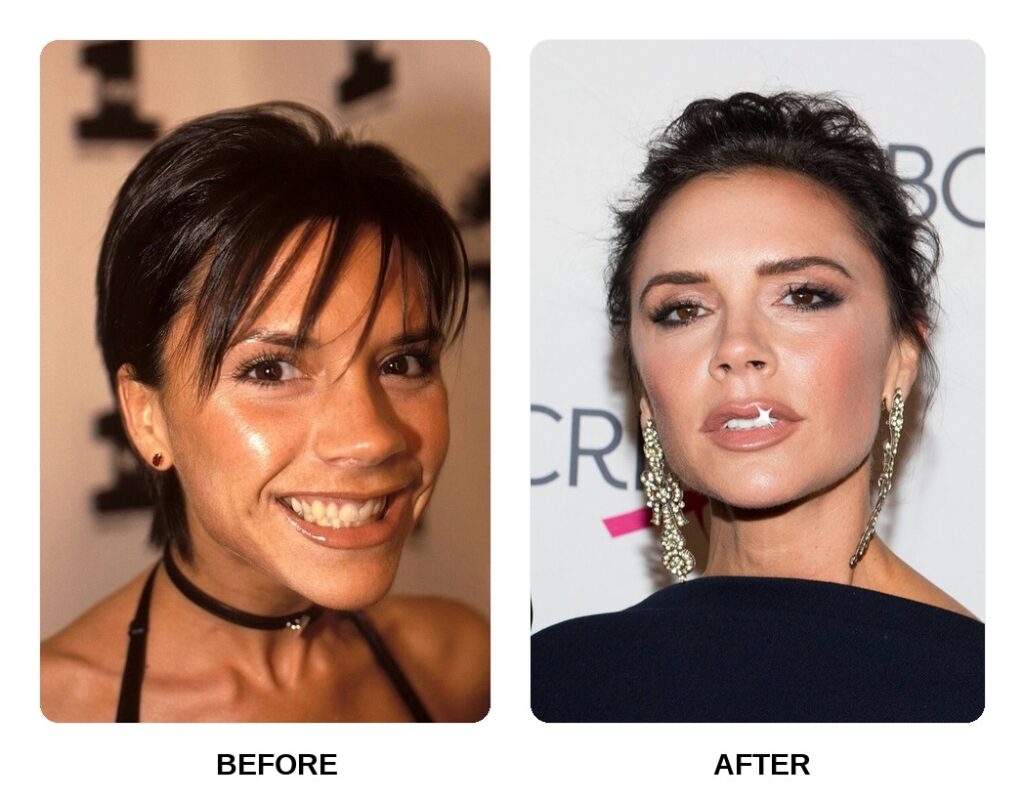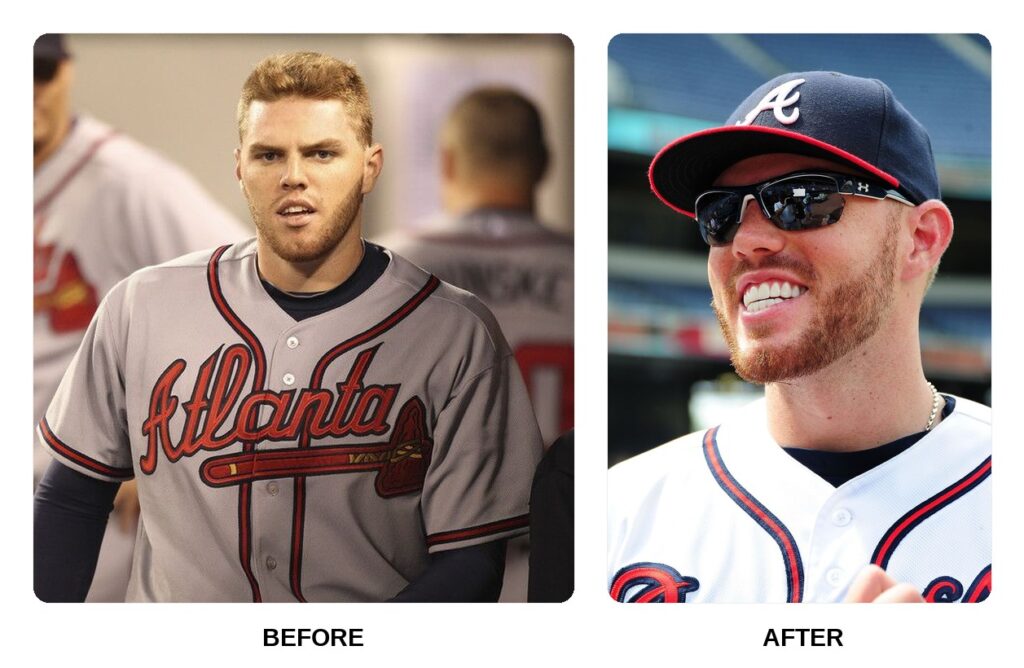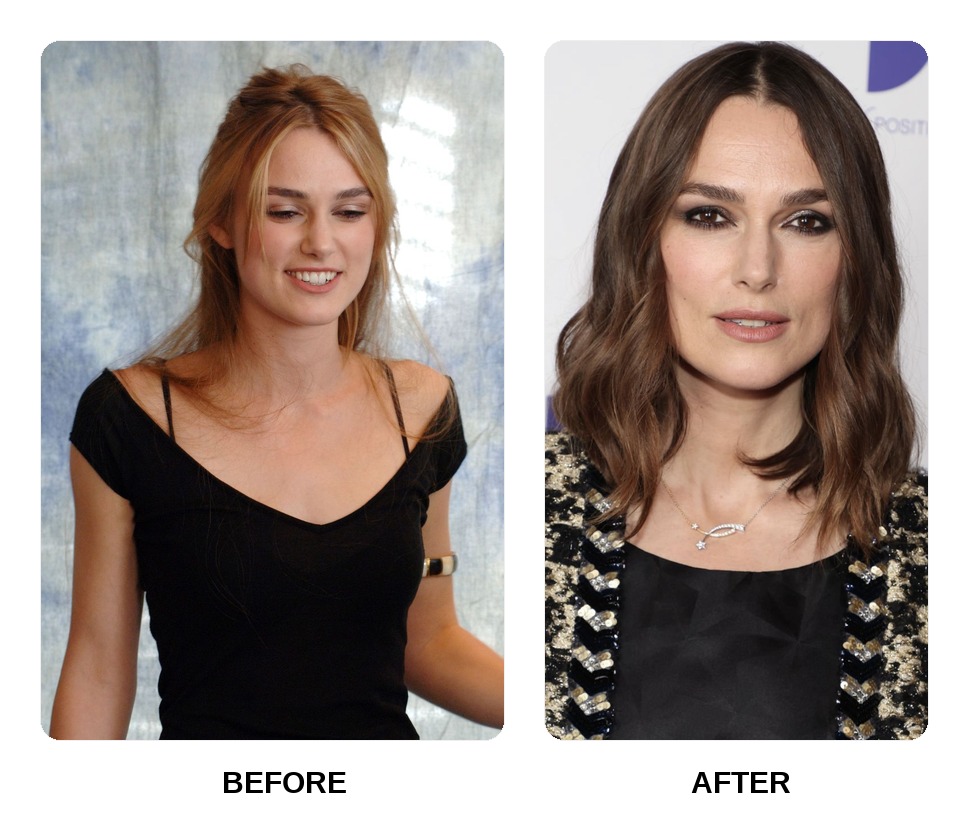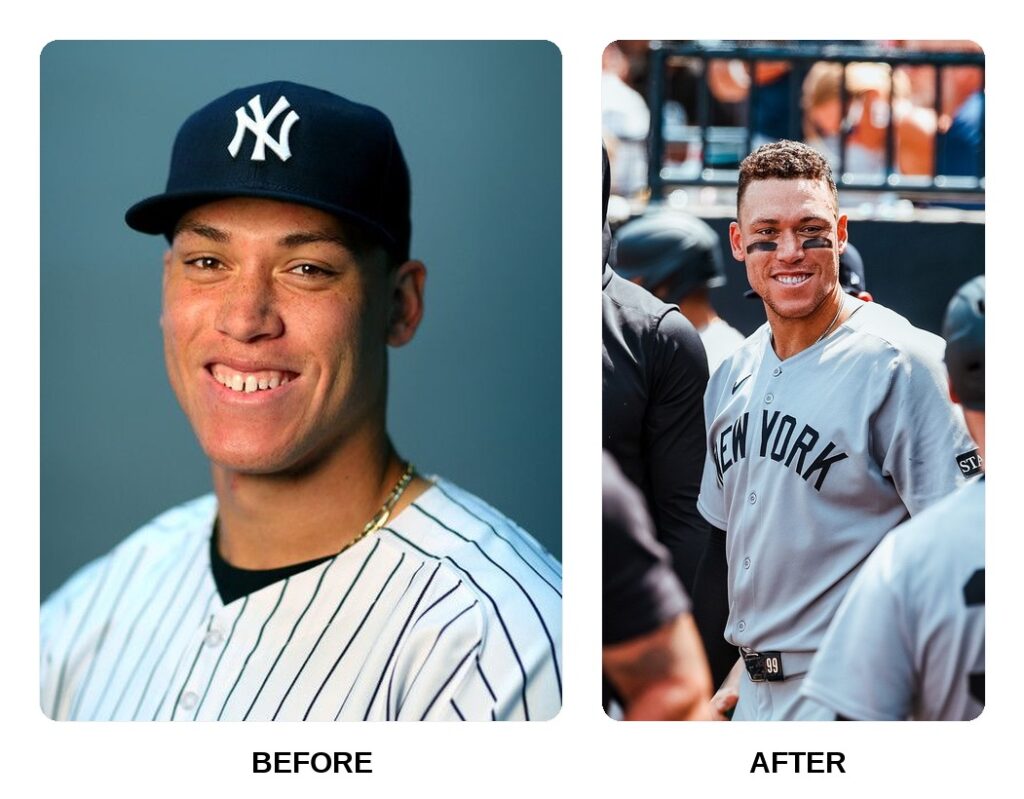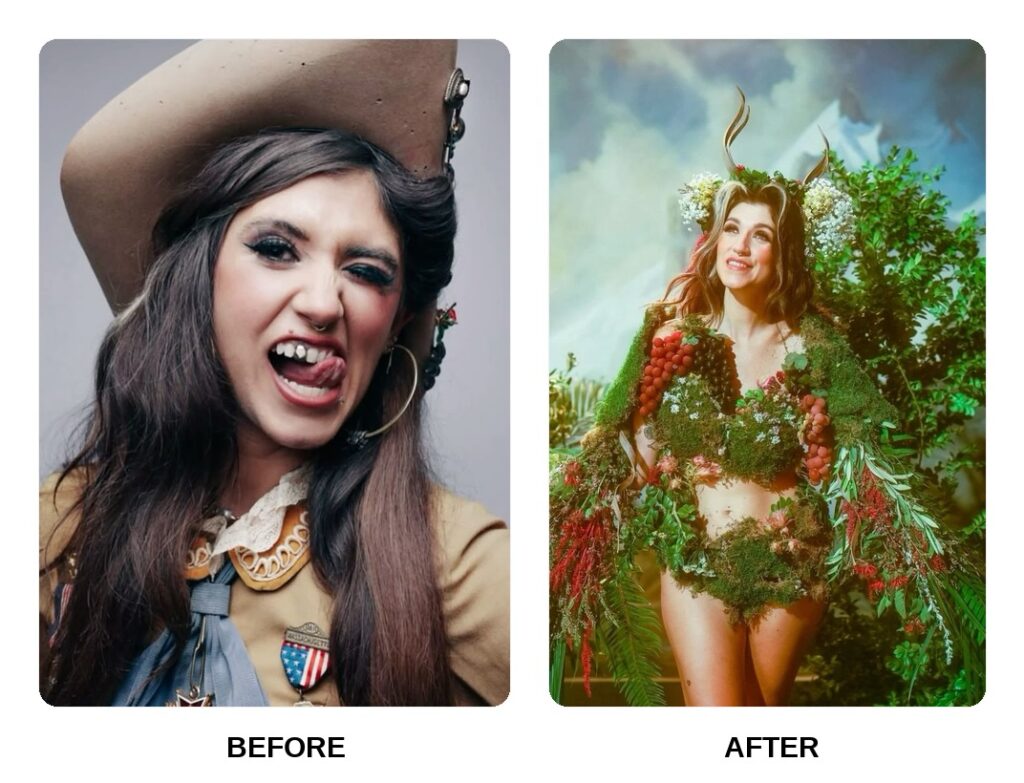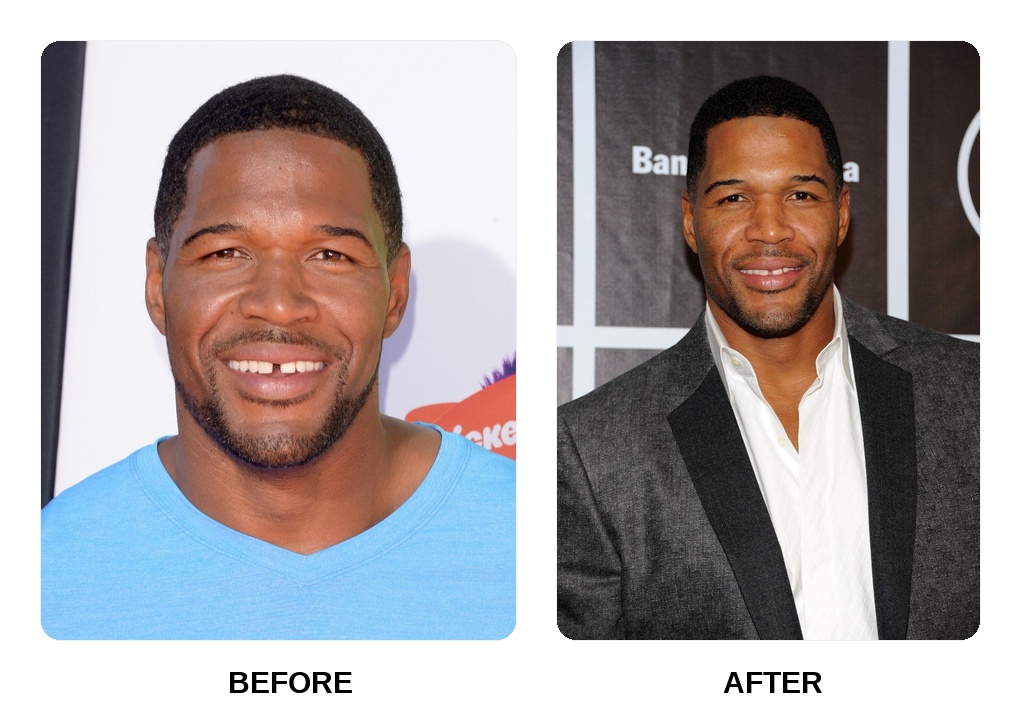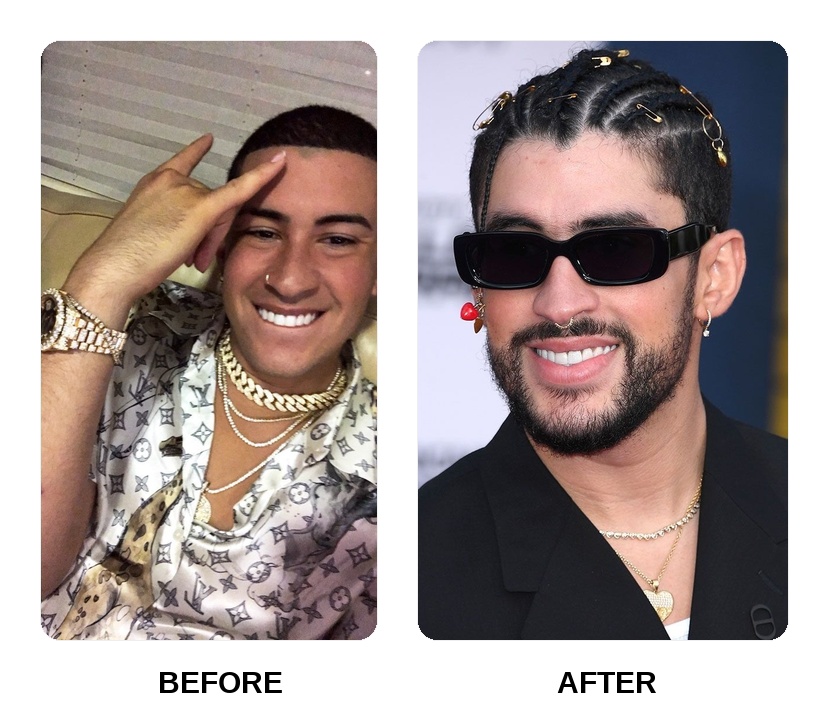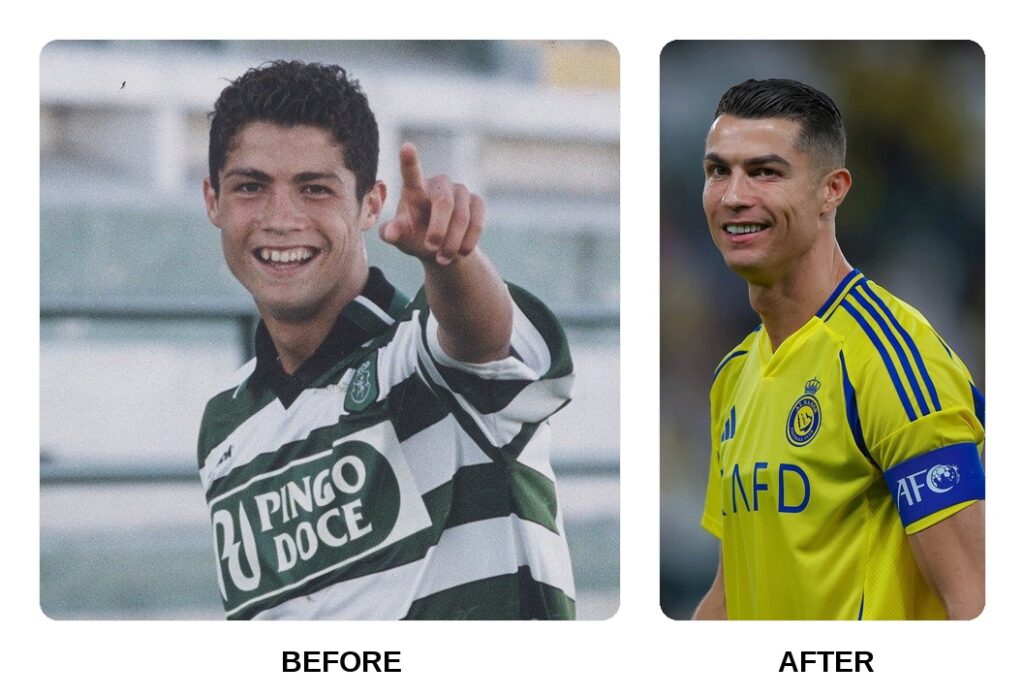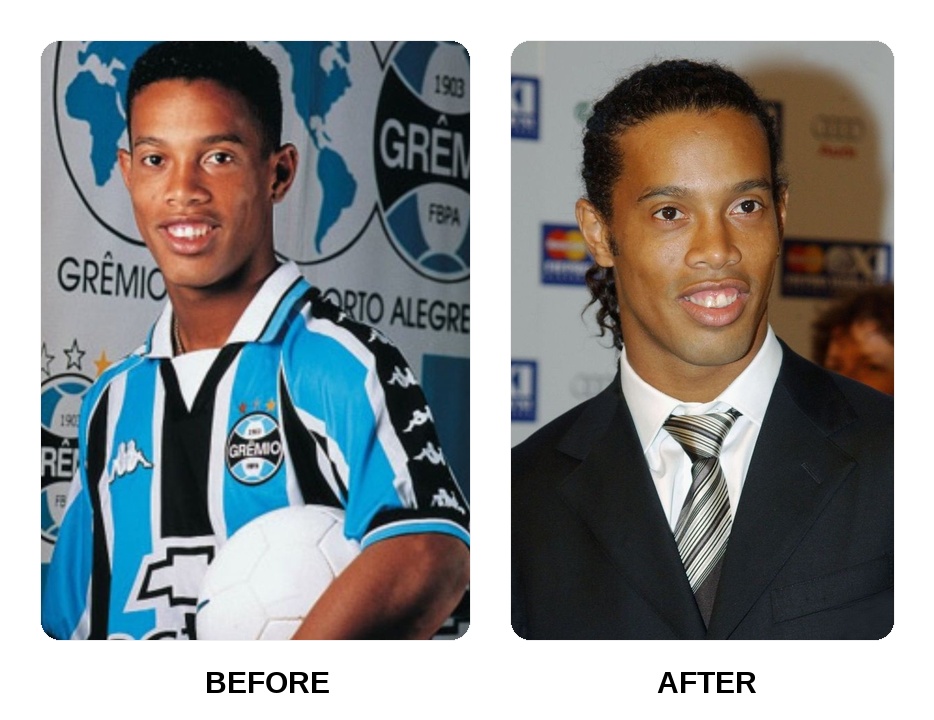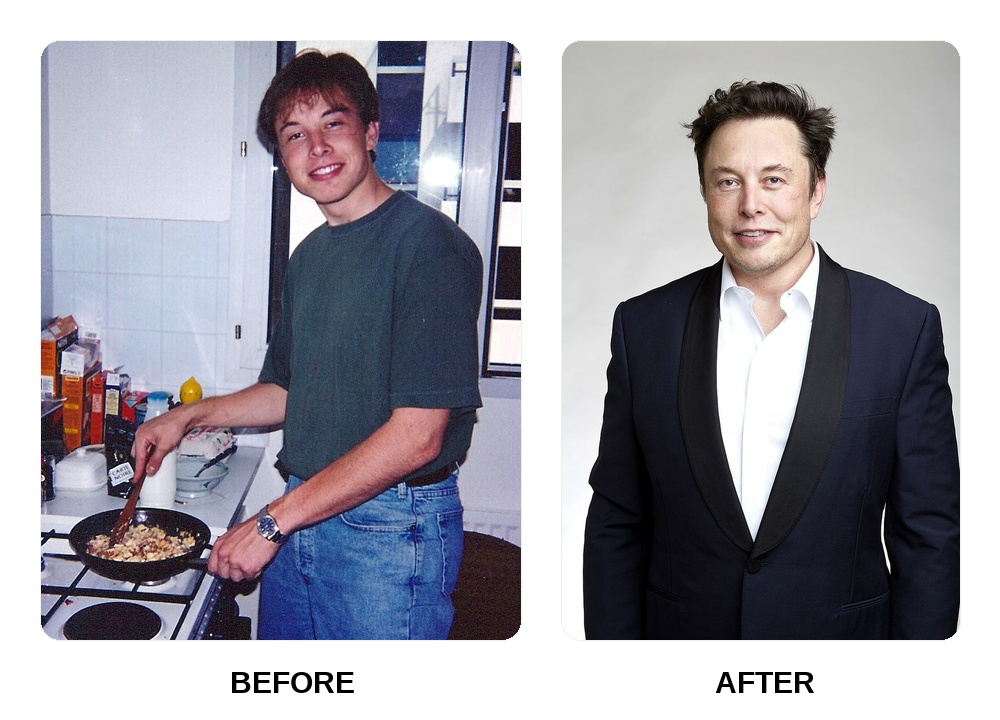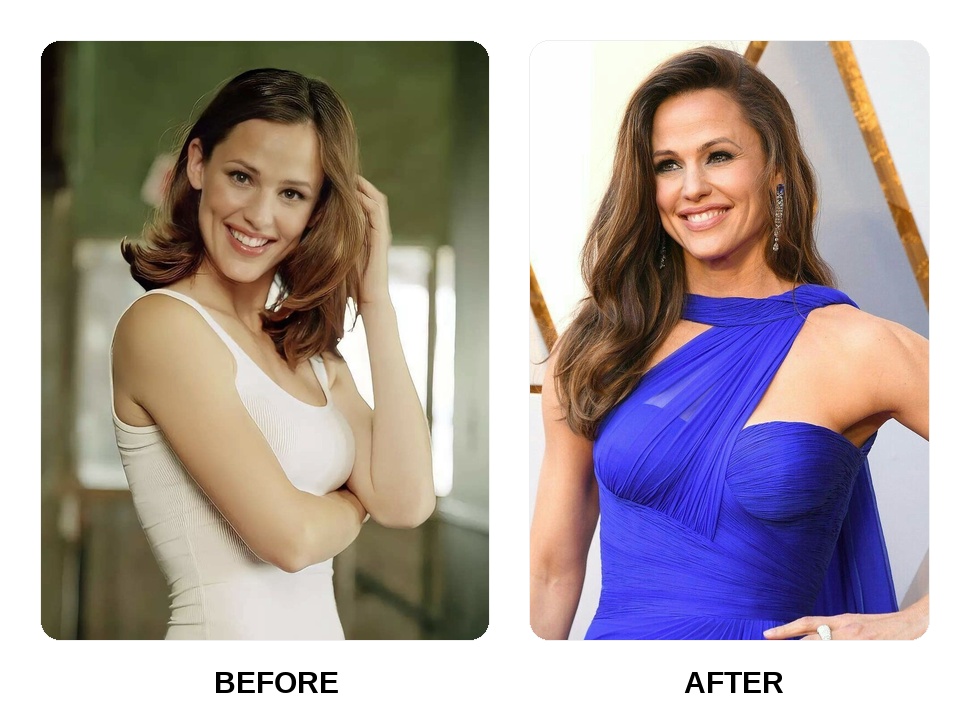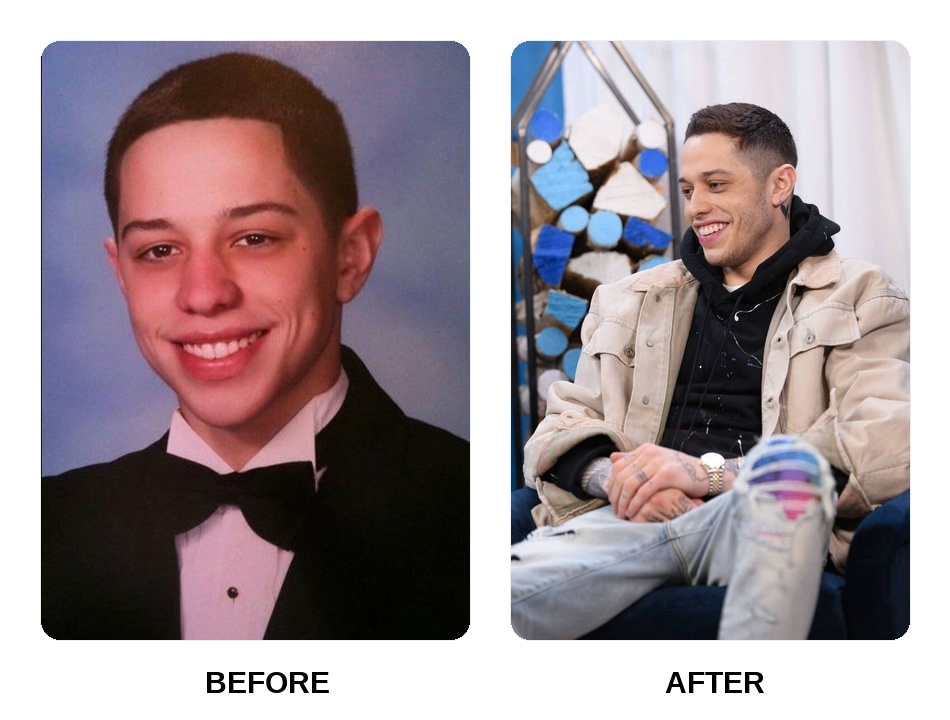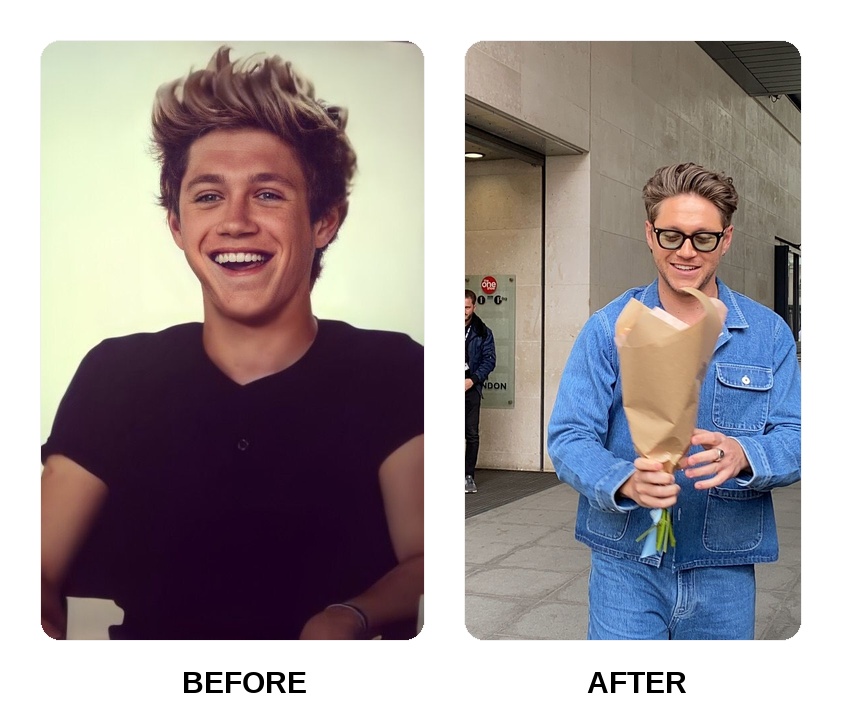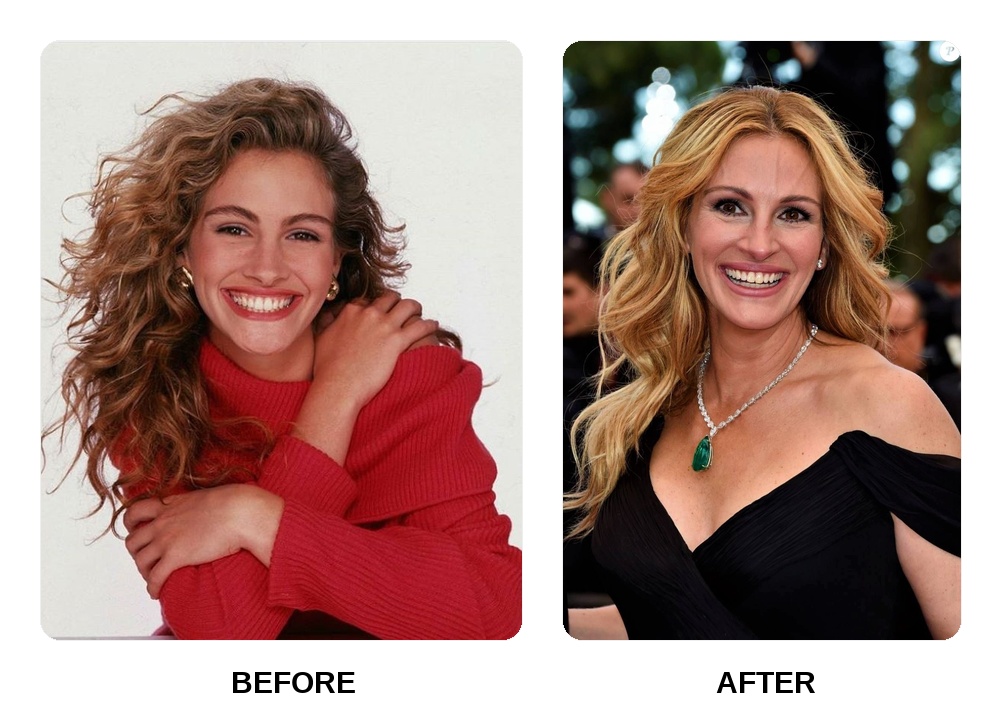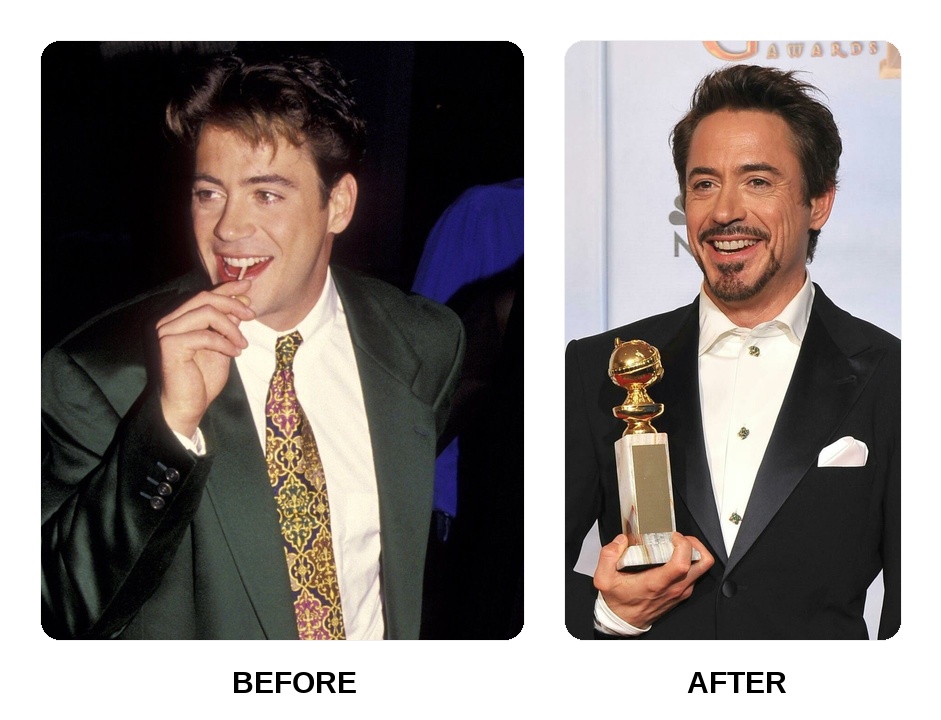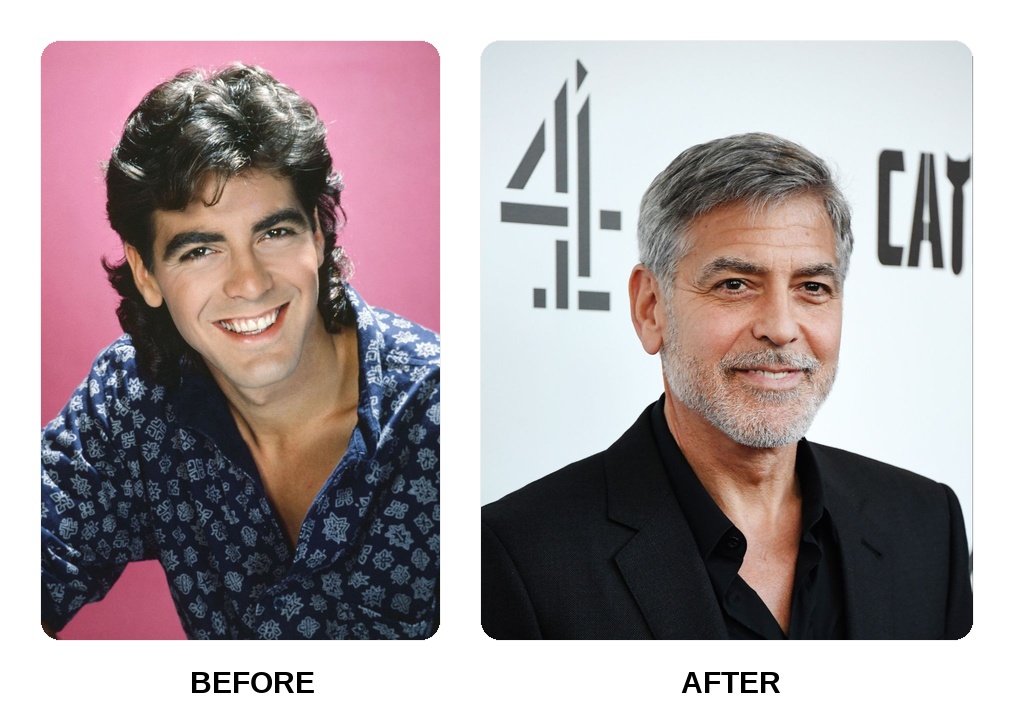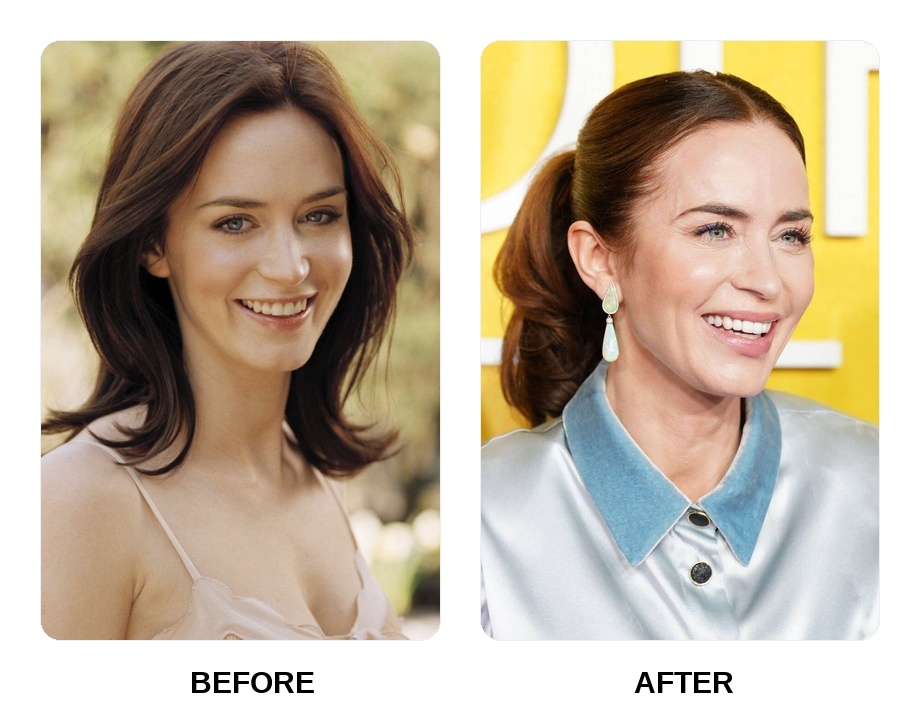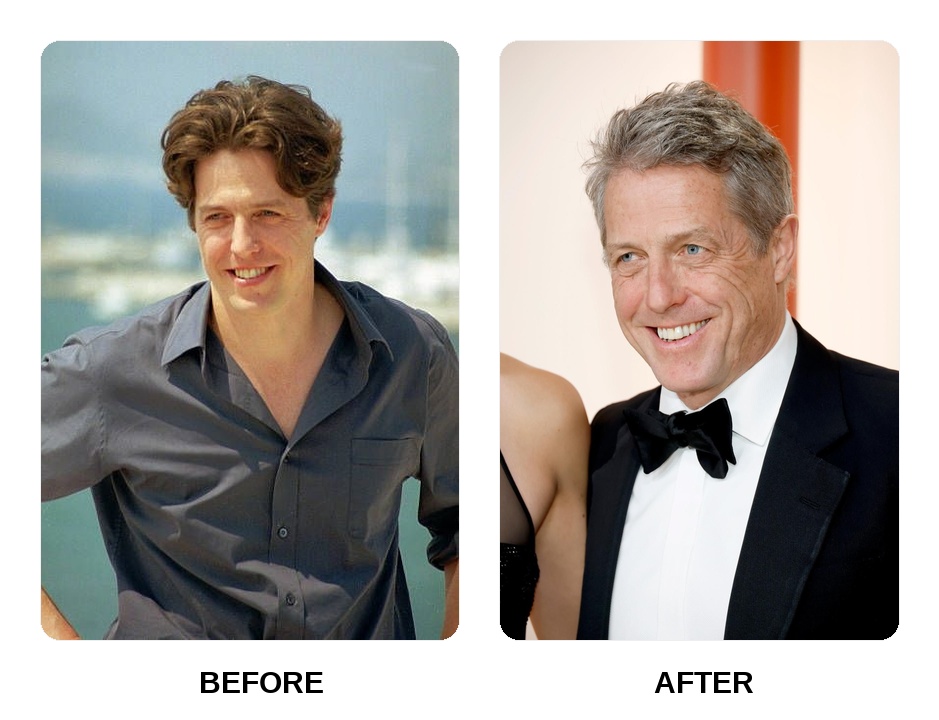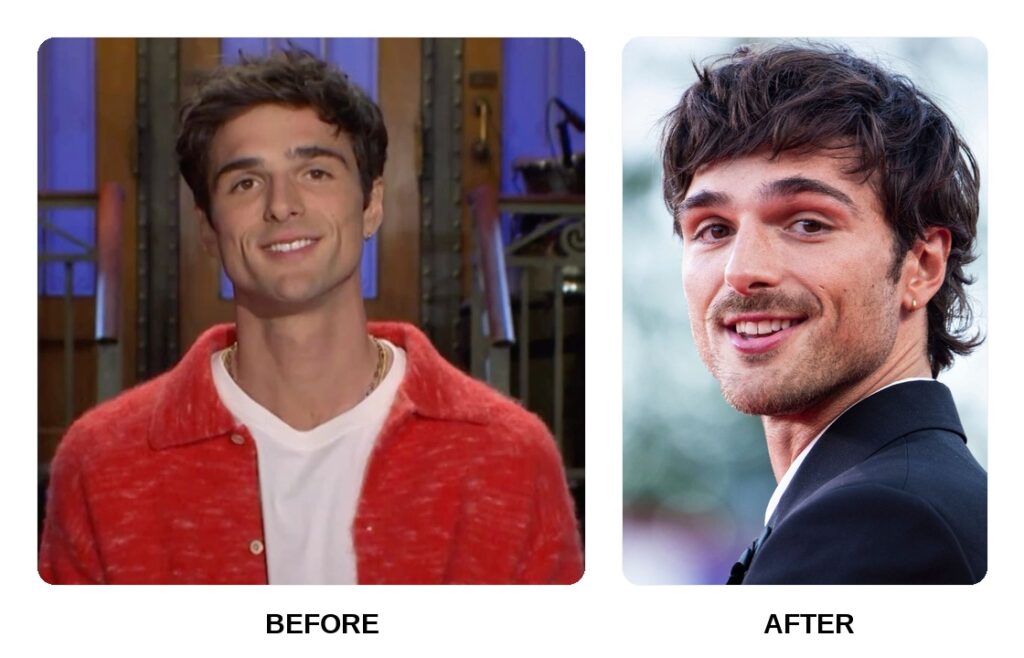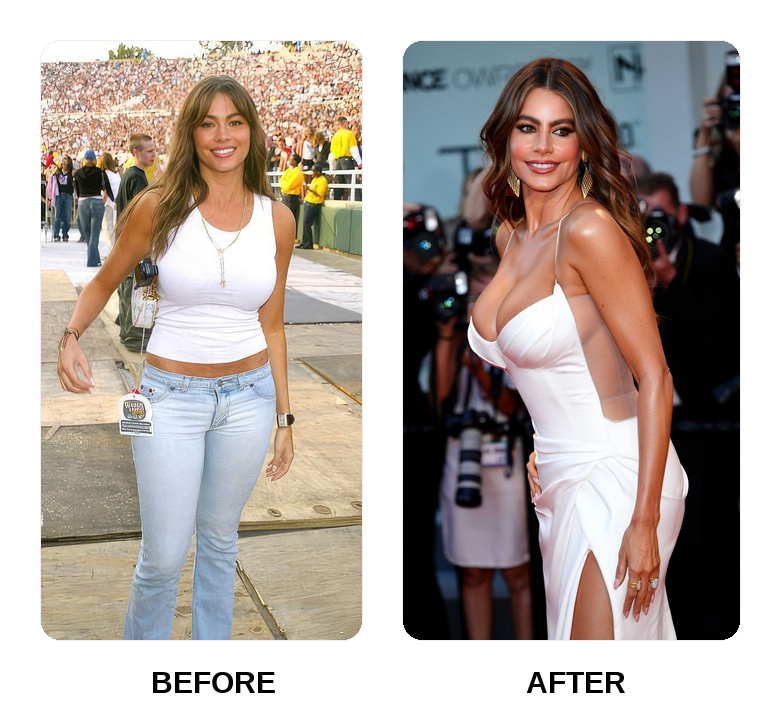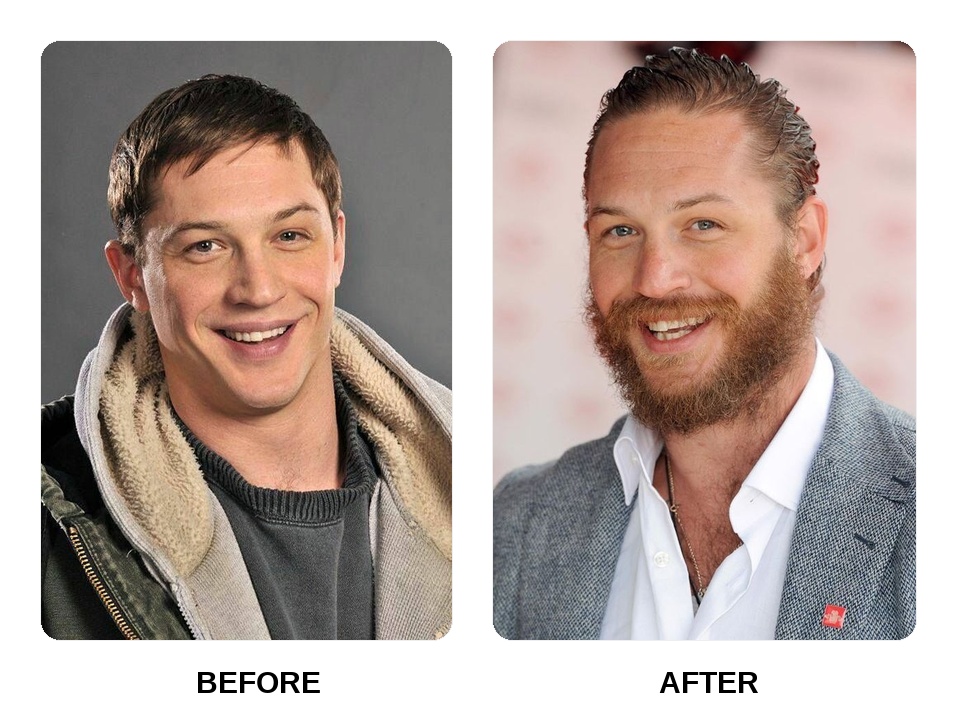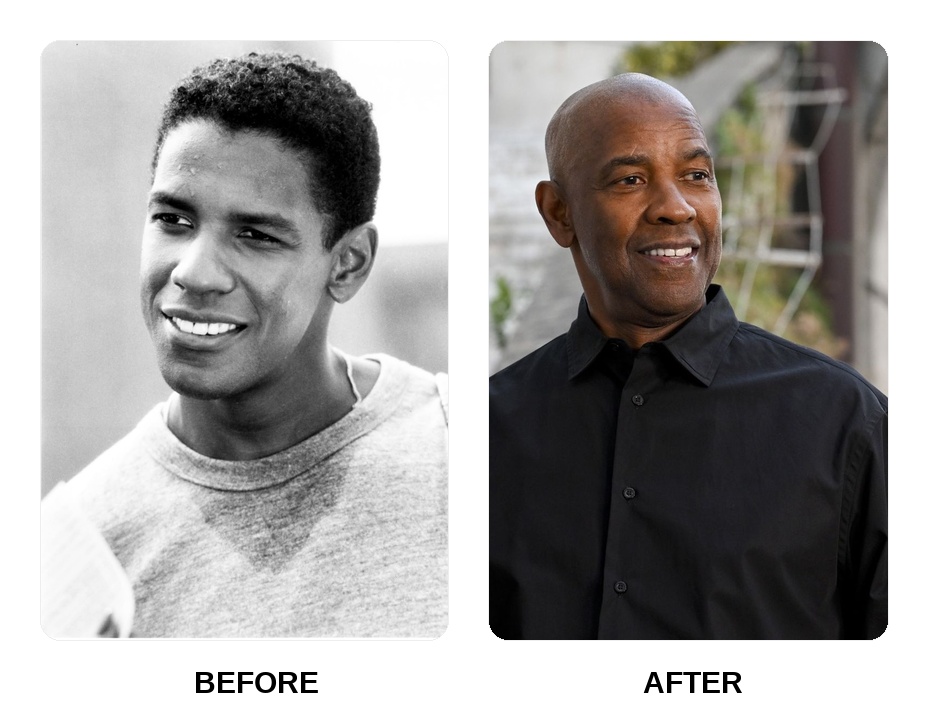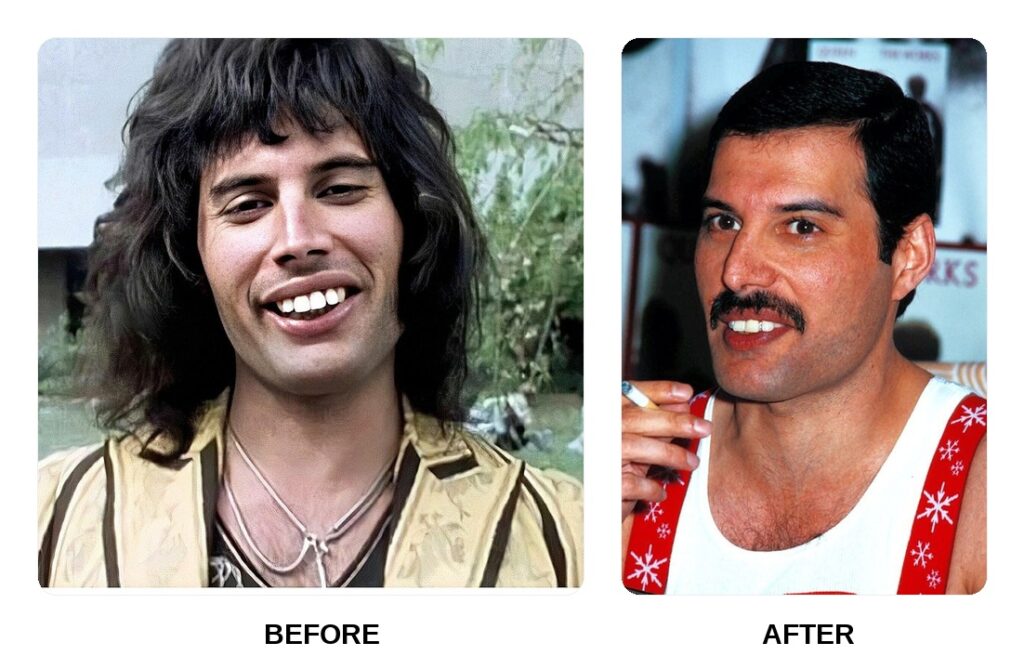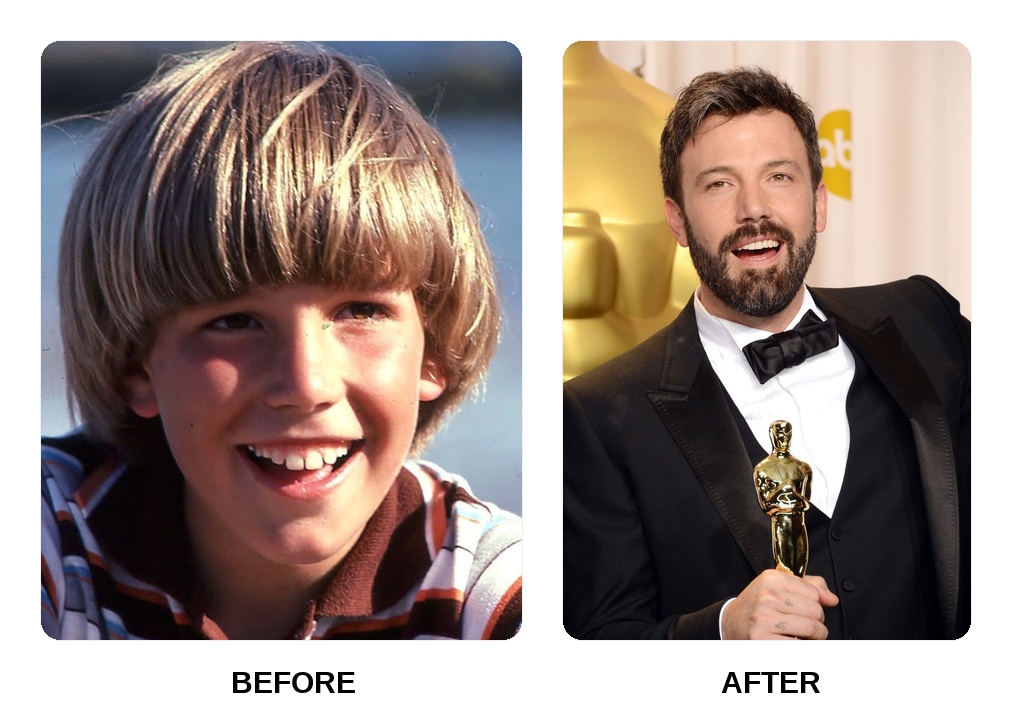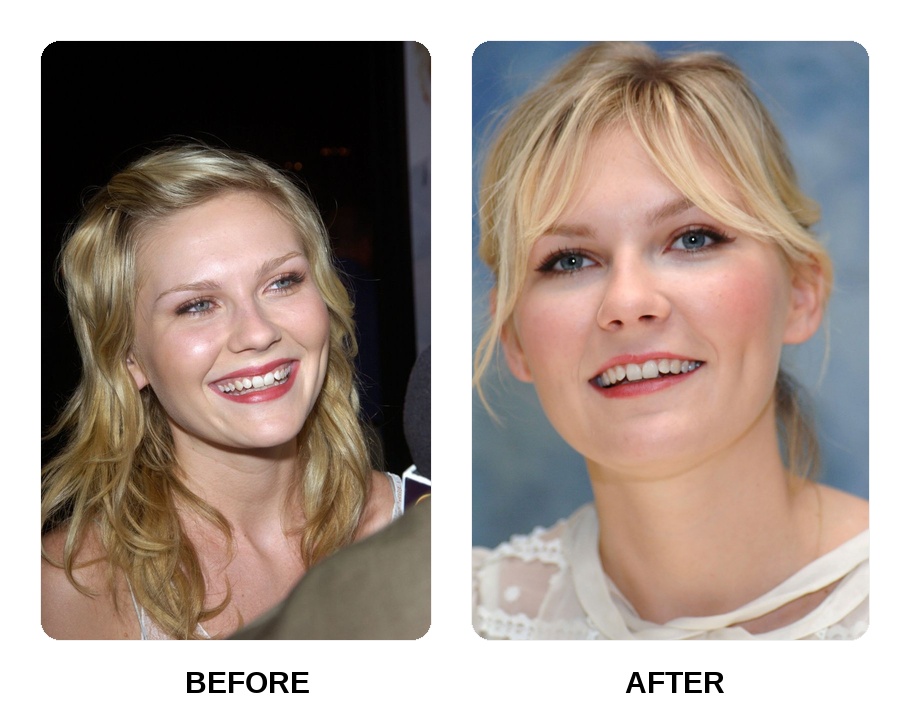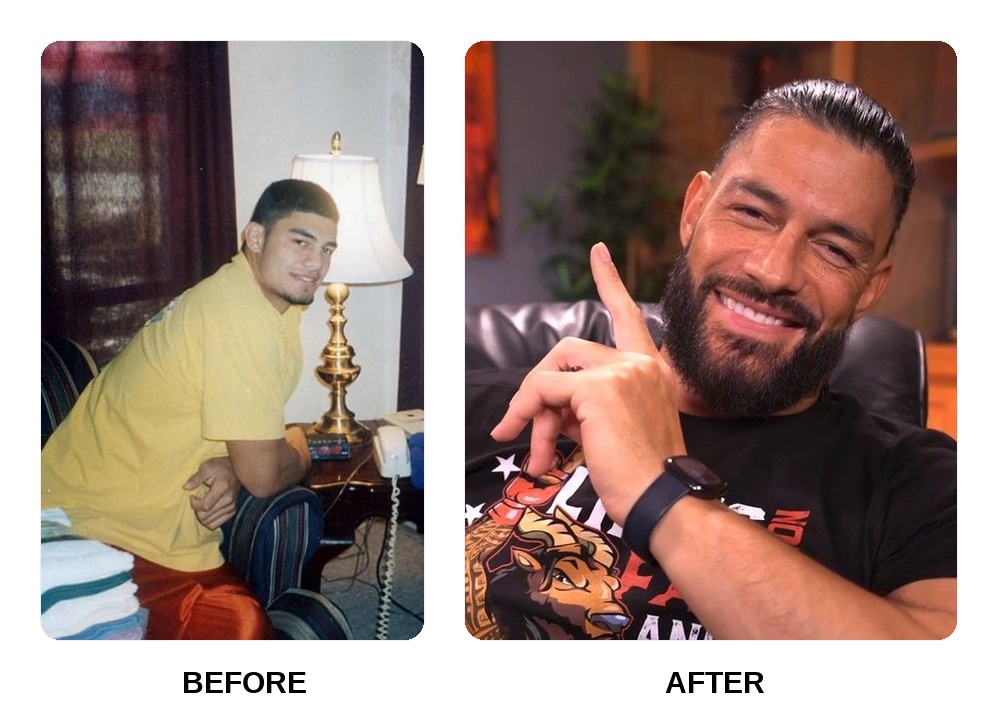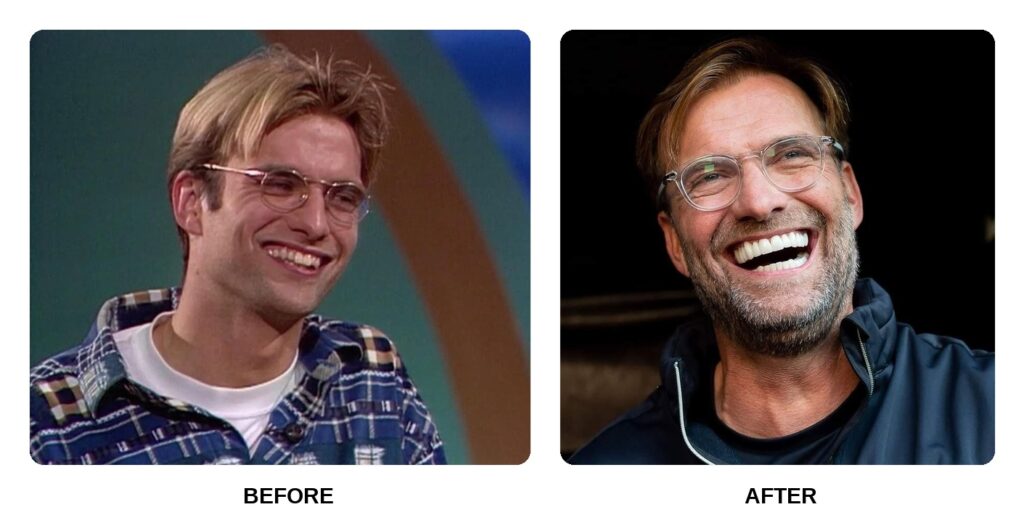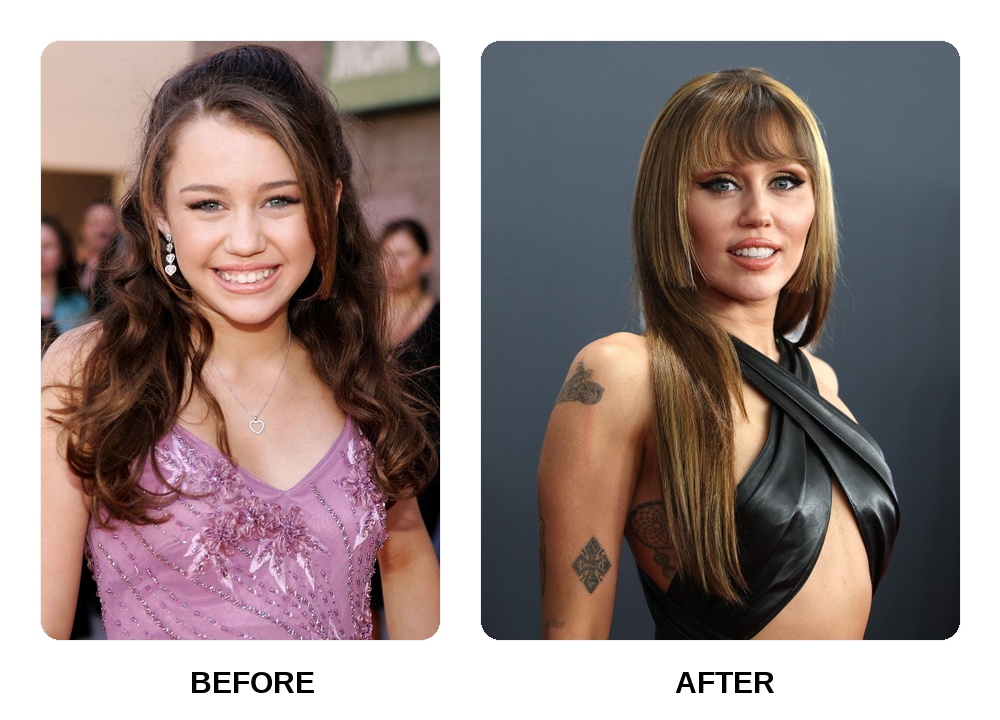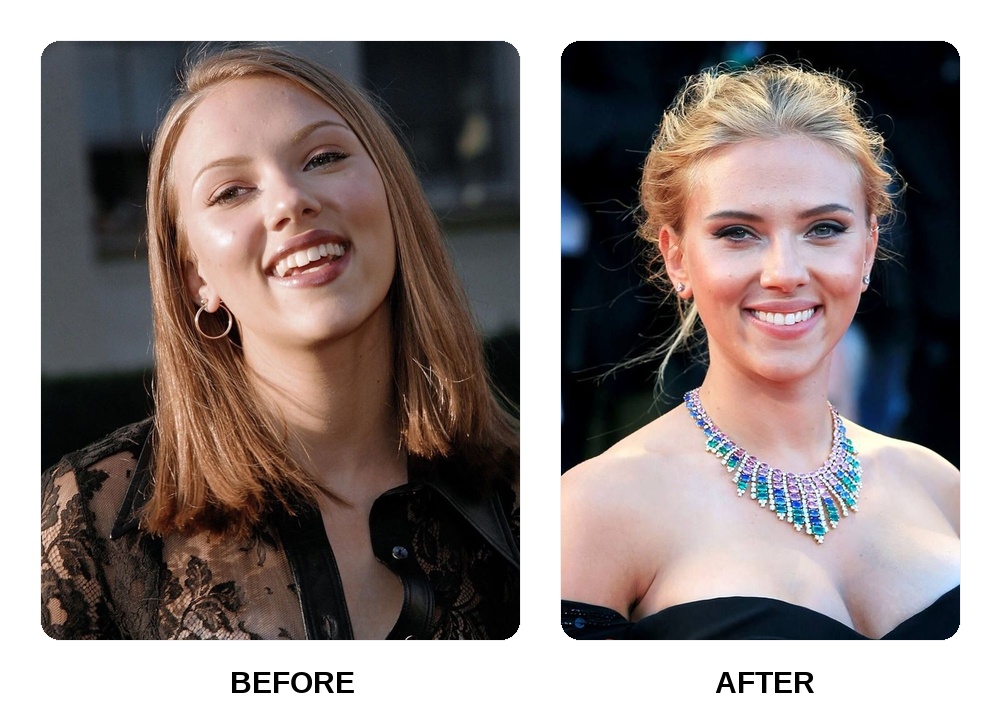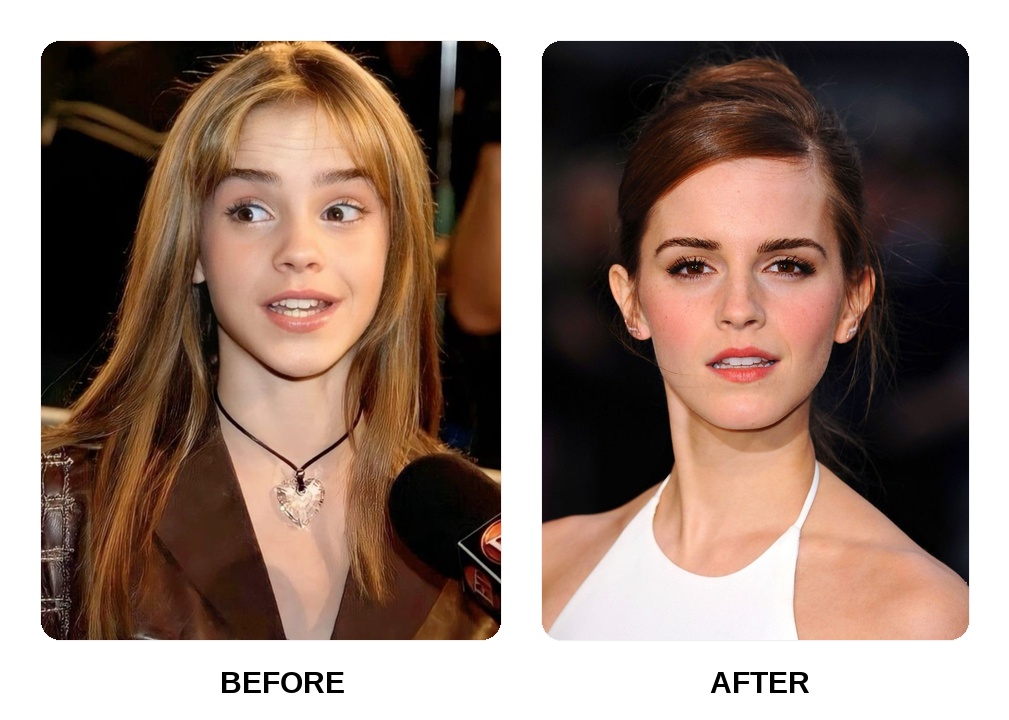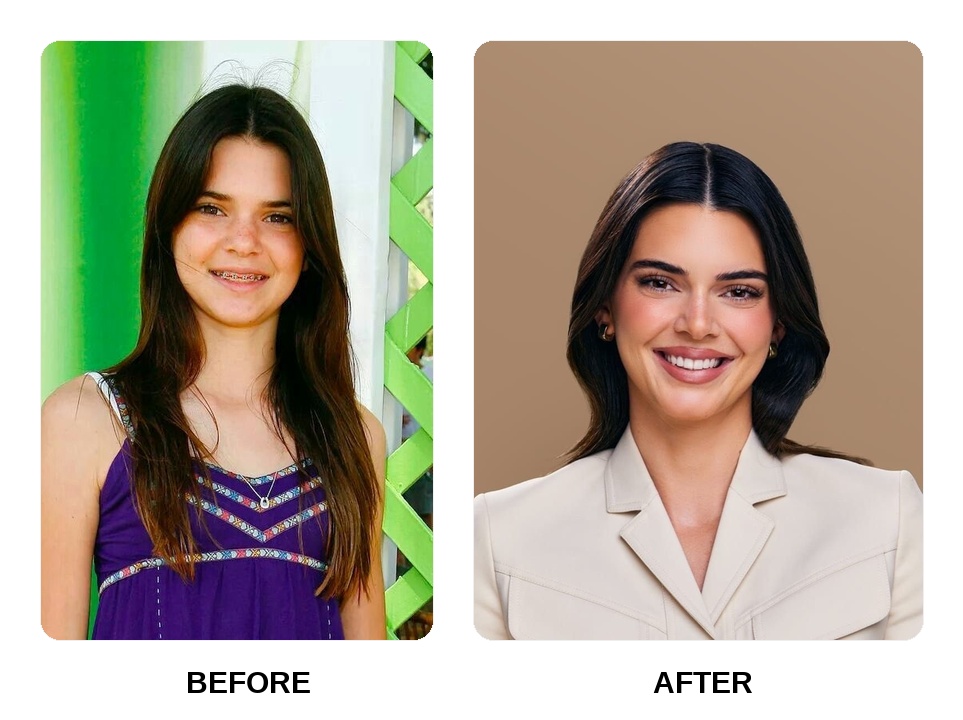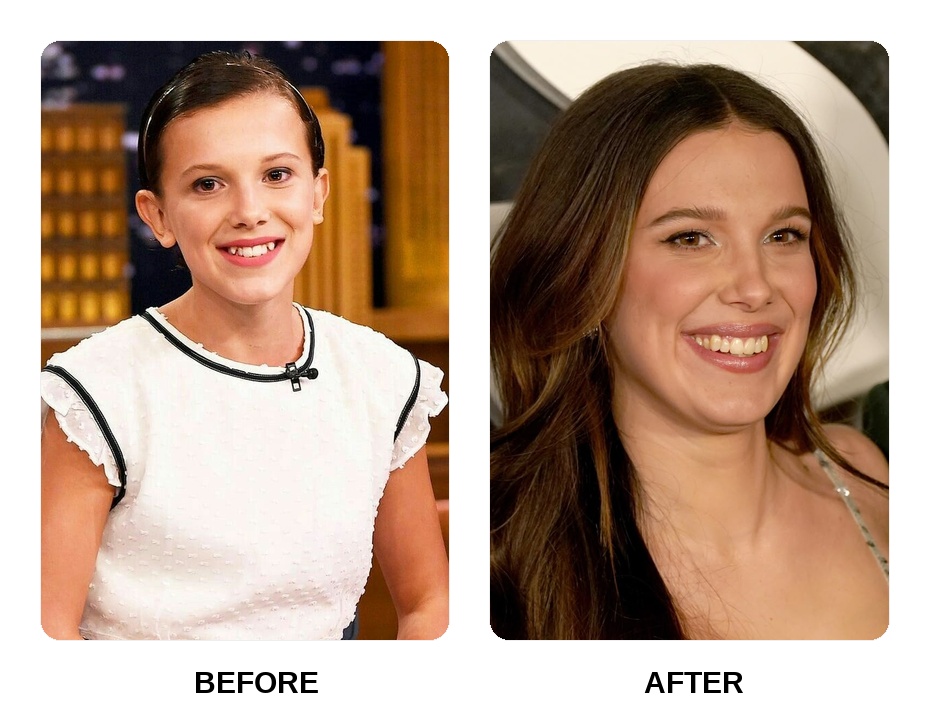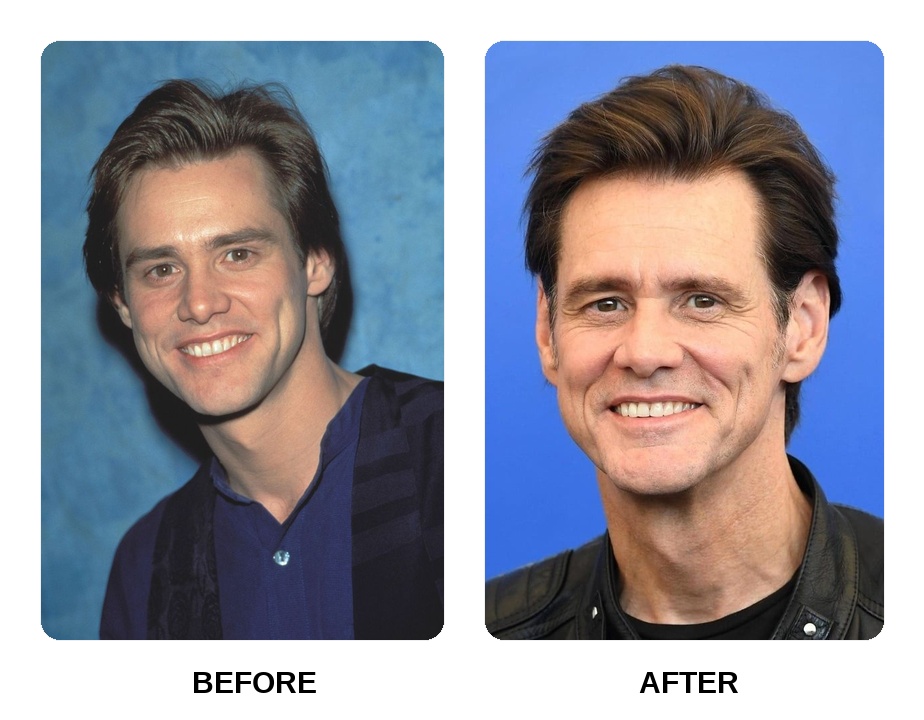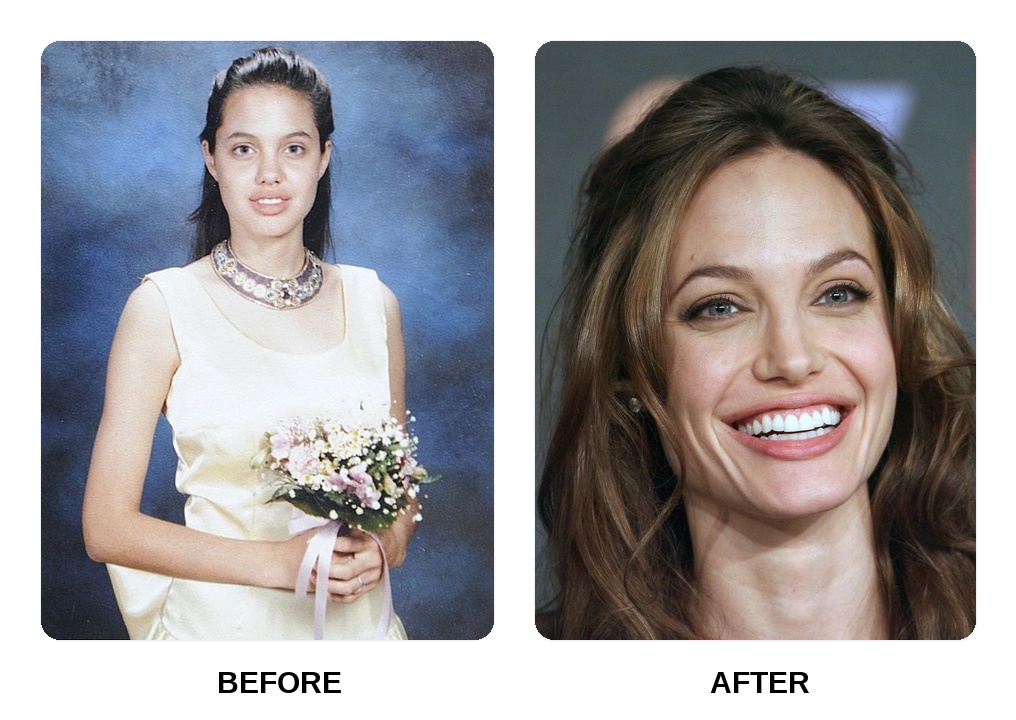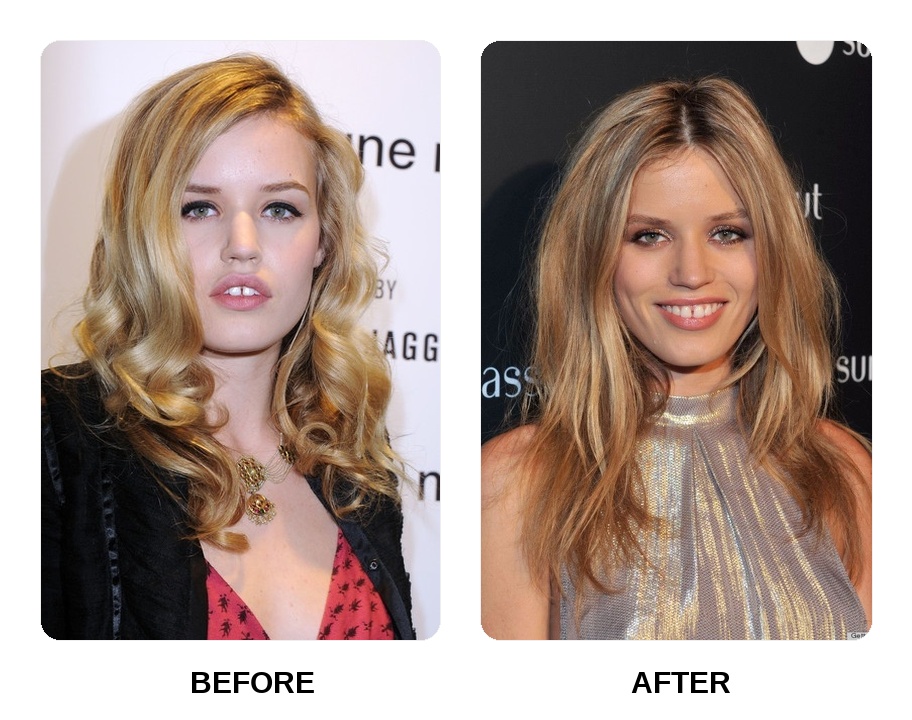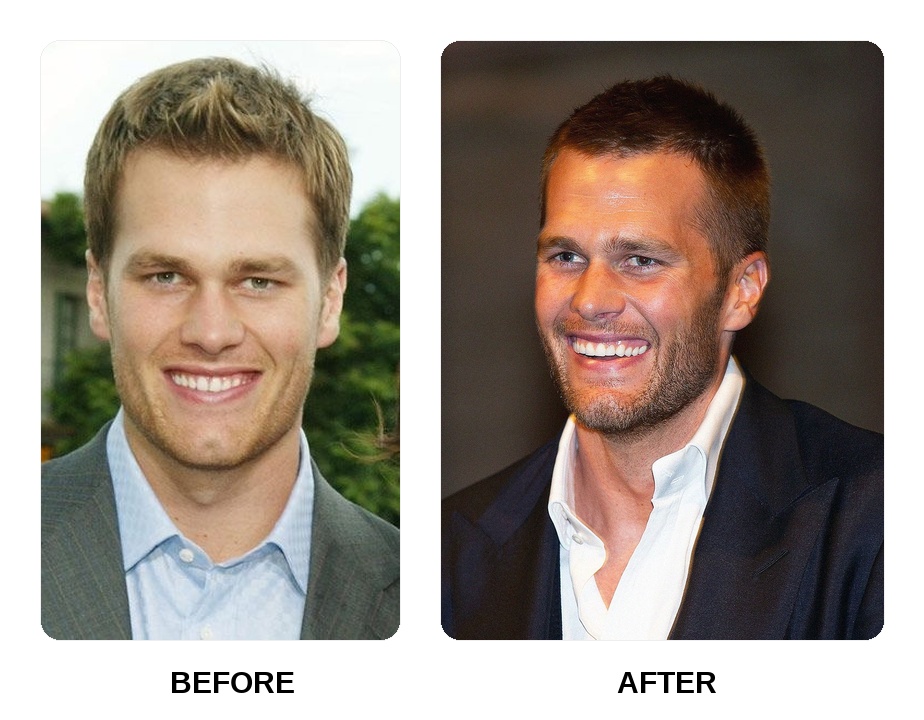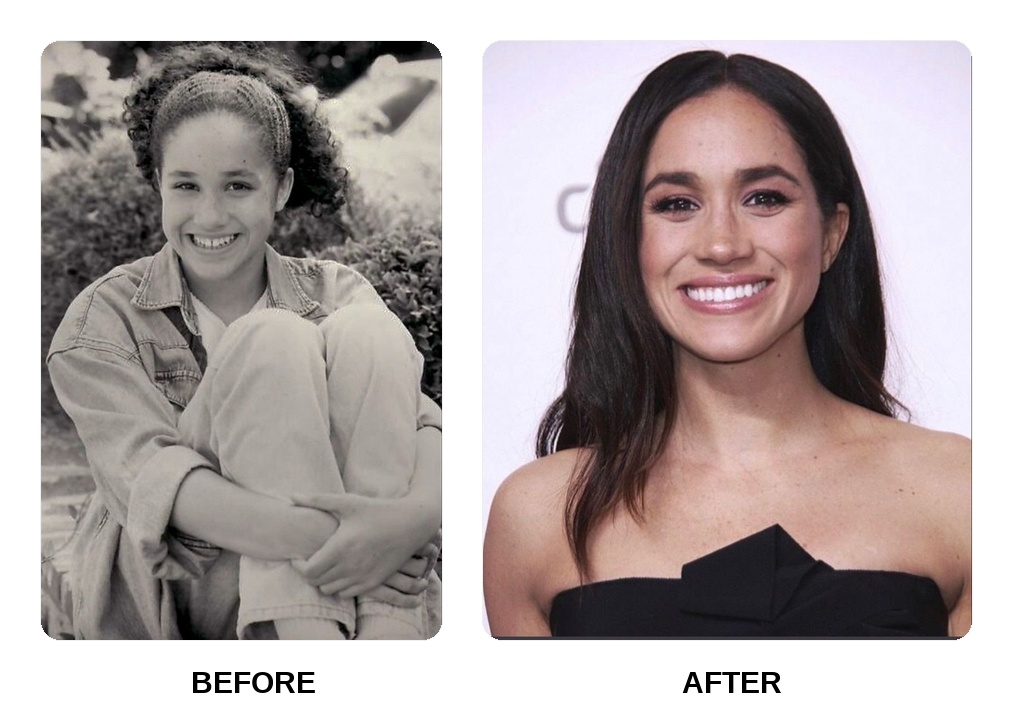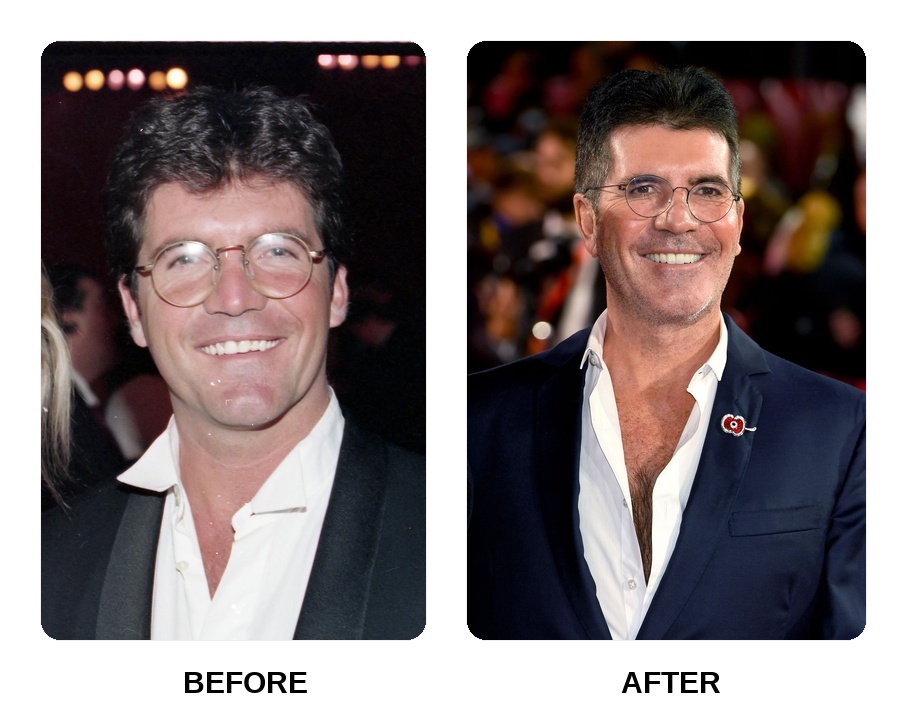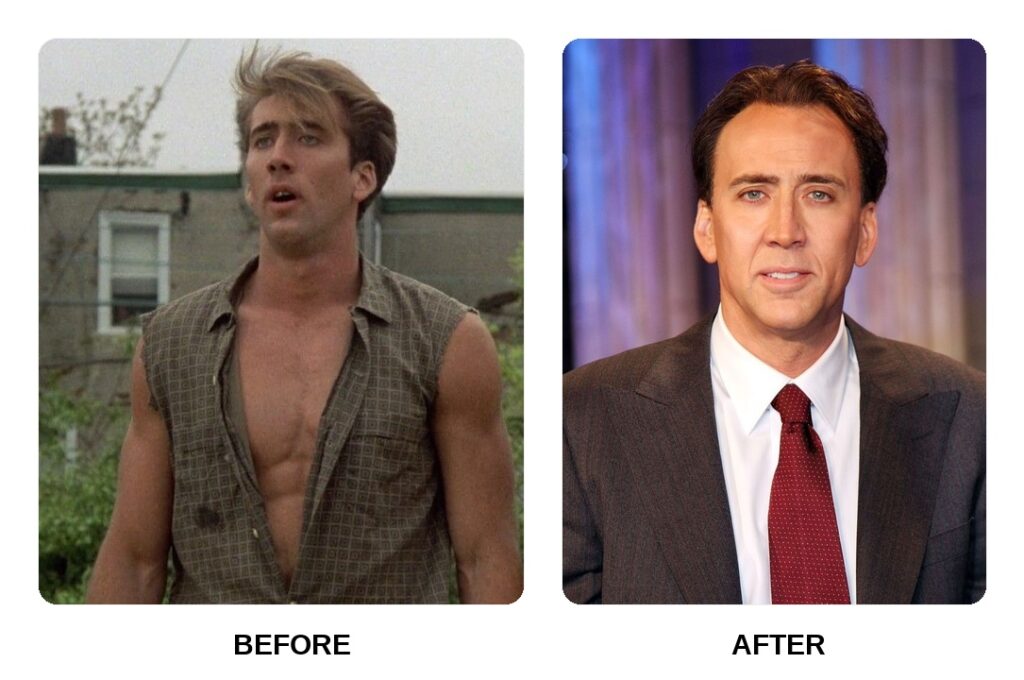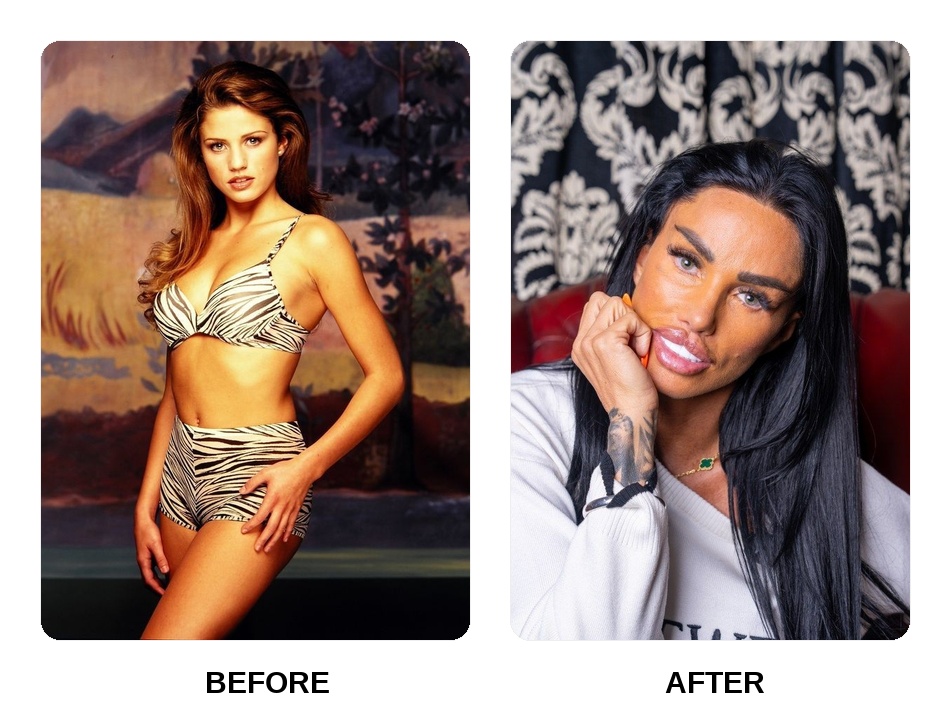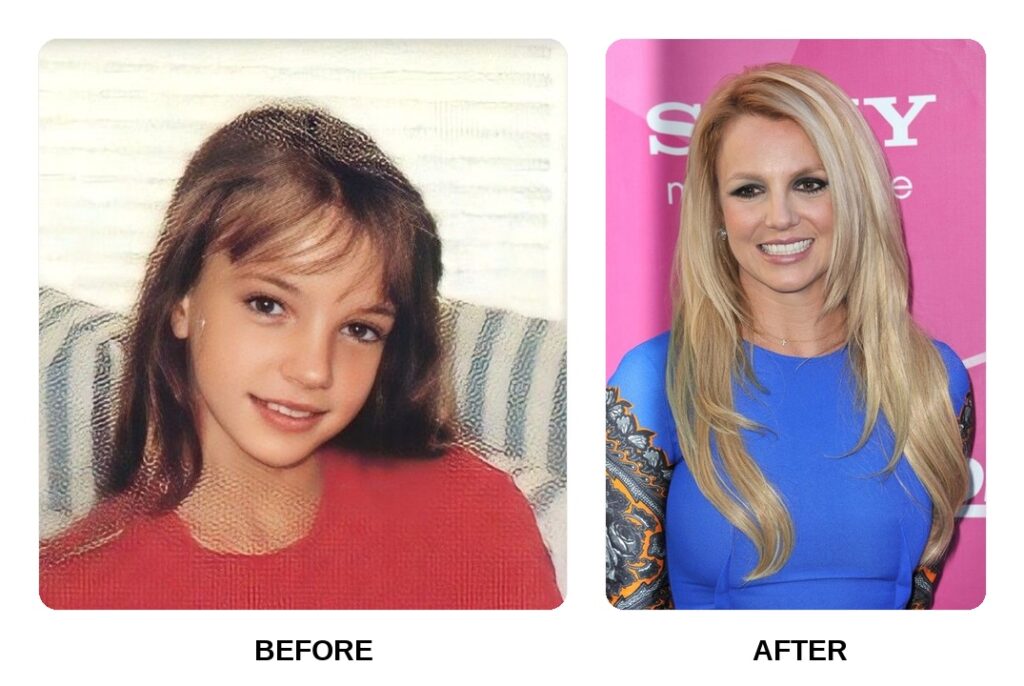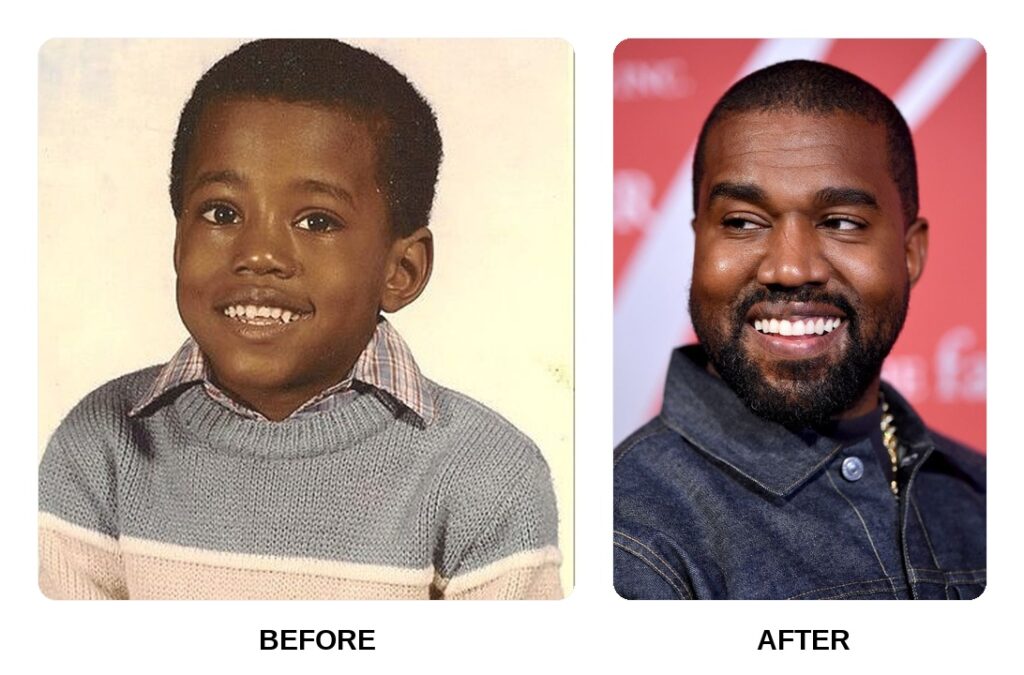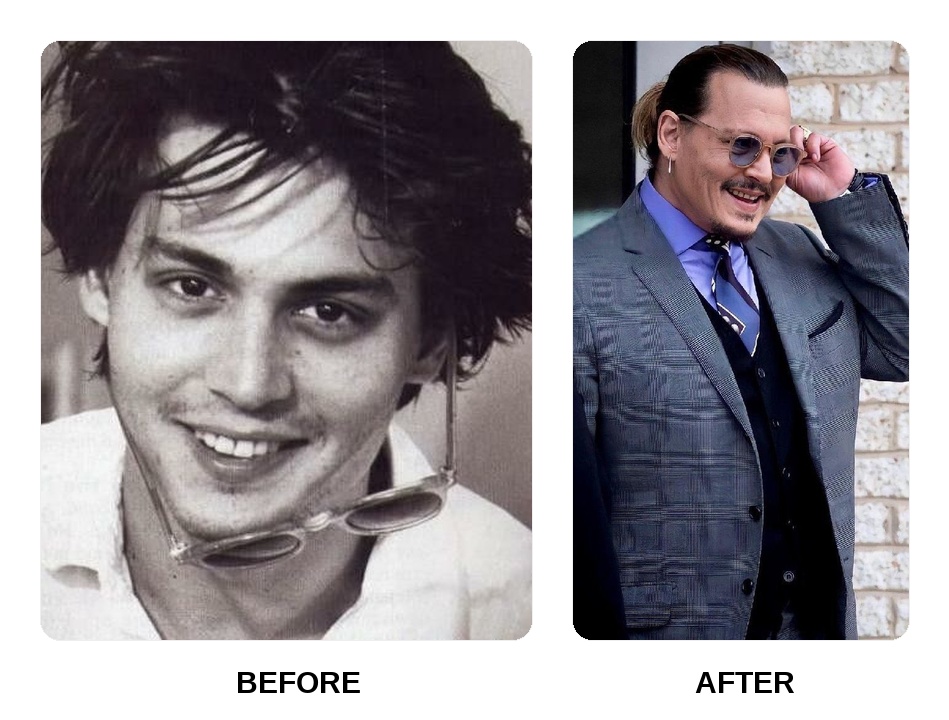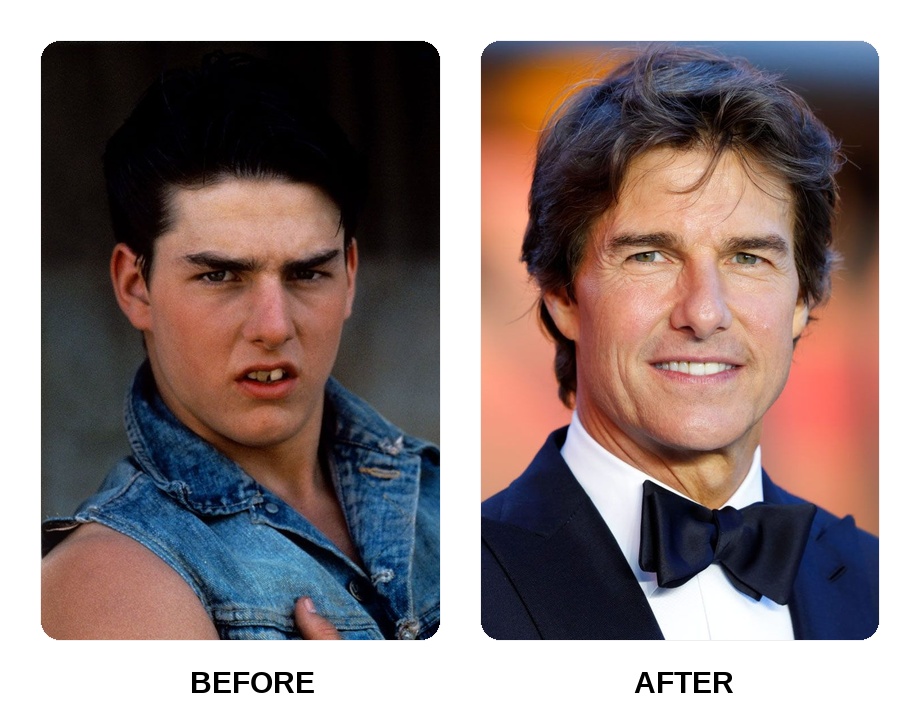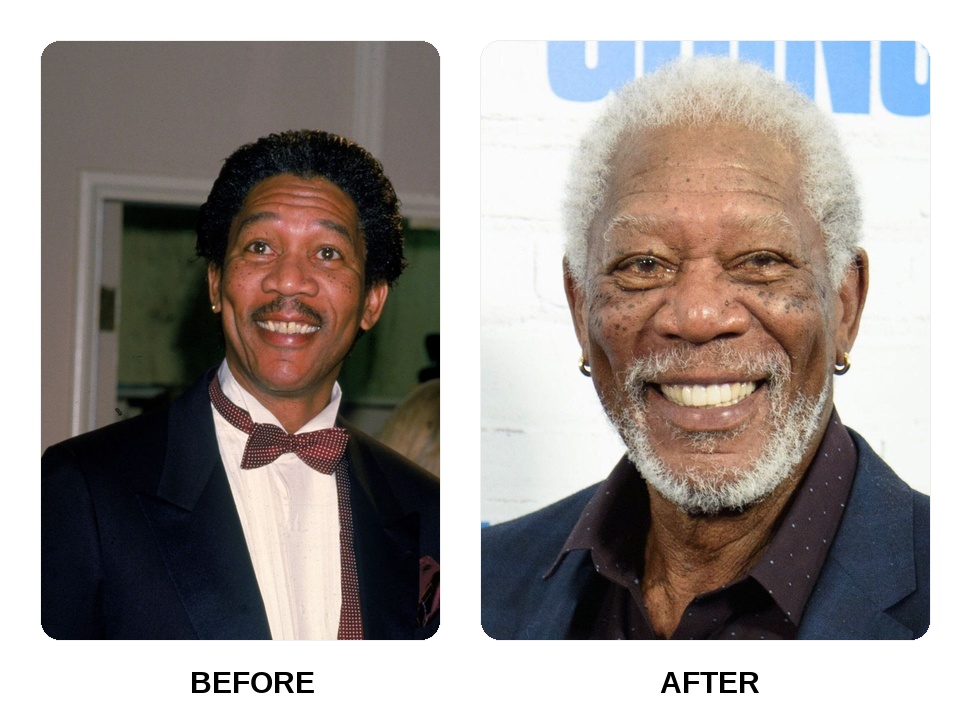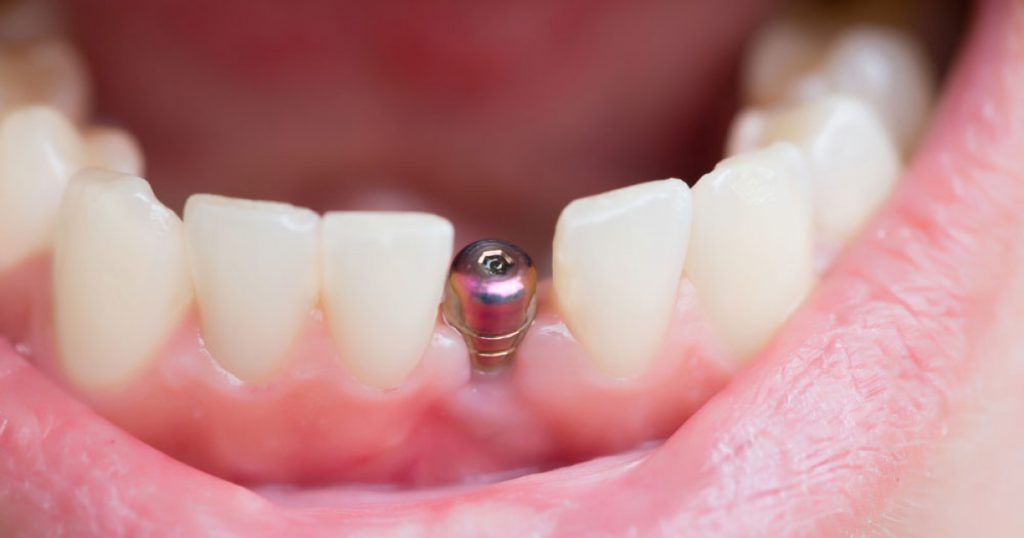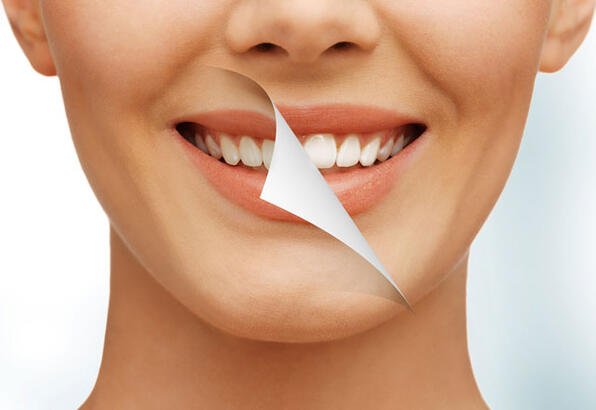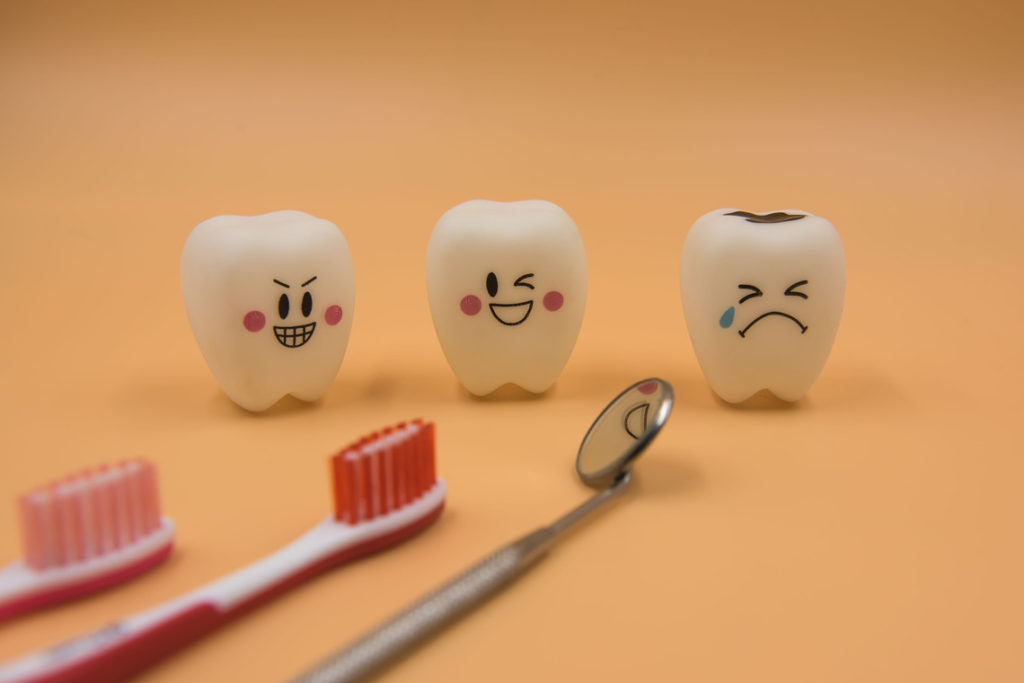Freddie Mercury did not undergo any procedure to obtain “new” teeth, so there is no dramatic before-and-after change to document. Throughout his life, he maintained the same set of natural teeth, characterized by an overjet (protrusion) of the upper front teeth due to crowding. Photographs from his early career and later years reveal that his dental appearance remained consistent, aside from minor changes due to aging and styling.
In his youth, Mercury had prominent front teeth pushed forward by four extra incisors in his upper jaw. As he became famous, he chose not to alter this condition, meaning his teeth before fame and during his peak were essentially the same. There was no moment when Mercury debuted a “fixed” or cosmetically altered smile, so any perceived difference over time was subtle (such as the effect of him growing a mustache later) rather than the result of dental work.
Freddie Mercury teeth: historical dental transformation and evolution
Freddie Mercury’s dental features were set early in life and showed little transformation over time. As a child, he likely had a normal set of baby teeth, but when his adult teeth came in, four extra teeth (supernumerary incisors) erupted in his upper jaw. This rare condition, hyperdontia, caused his upper dental arch to become overcrowded and pushed his front teeth outward into a pronounced overbite. By the time Mercury was a teenager, his signature dental appearance—prominent front teeth and an overjet—was already established.
Throughout his adulthood, Mercury’s teeth did not evolve significantly since he opted against orthodontic or surgical correction. There was no “transformation” in the cosmetic sense; instead, the evolution of his smile was limited to how he carried it. In the 1970s and 1980s, he grew more confident on stage, openly displaying his teeth while performing. In the early 1980s he added a thick mustache, which visually softened the appearance of his overbite. However, the underlying dental structure remained the same from youth until his final years.
Freddie Mercury smile
Freddie Mercury’s smile was instantly recognizable and became an iconic part of his image. His wide grin often revealed the prominent upper front teeth that defined his appearance. On stage, Mercury had no hesitation about opening his mouth fully to project his powerful voice, so fans could frequently see his teeth when he sang. This confident stage persona meant his smile was on full display during performances, contributing to his charismatic presence.
Offstage, however, Mercury had a more complicated relationship with his smile. He had been teased in childhood (earning the nickname “Bucky” for his buckteeth) and sometimes tried to cover his teeth with his lip or hand when laughing. Close friends recalled that he remained self-conscious and would occasionally draw his upper lip over his teeth out of nervous habit. Despite these insecurities, Mercury’s smile is remembered fondly by fans as warm and genuine. It symbolized his individuality, proving that he could embrace a unique feature and still become a legendary showman.
What are the differences between Freddie Mercury old and new teeth?
Freddie Mercury never underwent a dental makeover, so the term “new teeth” does not apply literally. His “old” teeth (the natural teeth he had from youth) remained essentially unchanged throughout his life. Below is a comparison of his dental situation in early years versus later years:
| Aspect | Early Life/Before Fame | Later Years/After Fame |
|---|---|---|
| Alignment | Pronounced overbite from extra teeth; overcrowded upper jaw. | Still pronounced overbite; no orthodontic correction made. |
| Appearance | Prominent front teeth, very noticeable in smile; caused self-consciousness. | Remained prominent; grew a mustache in the 1980s which slightly obscured the overbite. |
| Dental Work | No braces or corrective treatment in youth. | No braces or cosmetic fixes later; original dental structure preserved. |
| Dental Health | Generally healthy teeth (no major issues aside from misalignment). | Remained healthy; no extra teeth removed or lost. |
As seen above, there were no fundamental differences between Mercury’s teeth in earlier versus later stages of his life. Any changes in how his smile looked were due to natural growth or styling (like the mustache), not because he got new teeth or altered his original ones.
Freddie Mercury decaying teeth
There is no significant evidence that Freddie Mercury’s teeth were severely decaying or rotten. His dental notoriety came from their unusual position and number, not from poor health or neglect. Despite the fact that Mercury admittedly avoided visiting the dentist for long stretches (one famous anecdote notes he had his first dental appointment in 15 years around 1976), he did not end up losing teeth or displaying obvious decay in public.
Mercury’s teeth, though crooked, appeared structurally sound in photographs and performances. He likely took care of basic oral hygiene even if he didn’t pursue cosmetic fixes. While heavy smoking and drinking could have caused some staining, he did not exhibit blackened or broken teeth on stage. In summary, his teeth were misaligned but not known to be decaying or diseased in any extraordinary way.
Are Freddie Mercury teeth showing signs of decay?
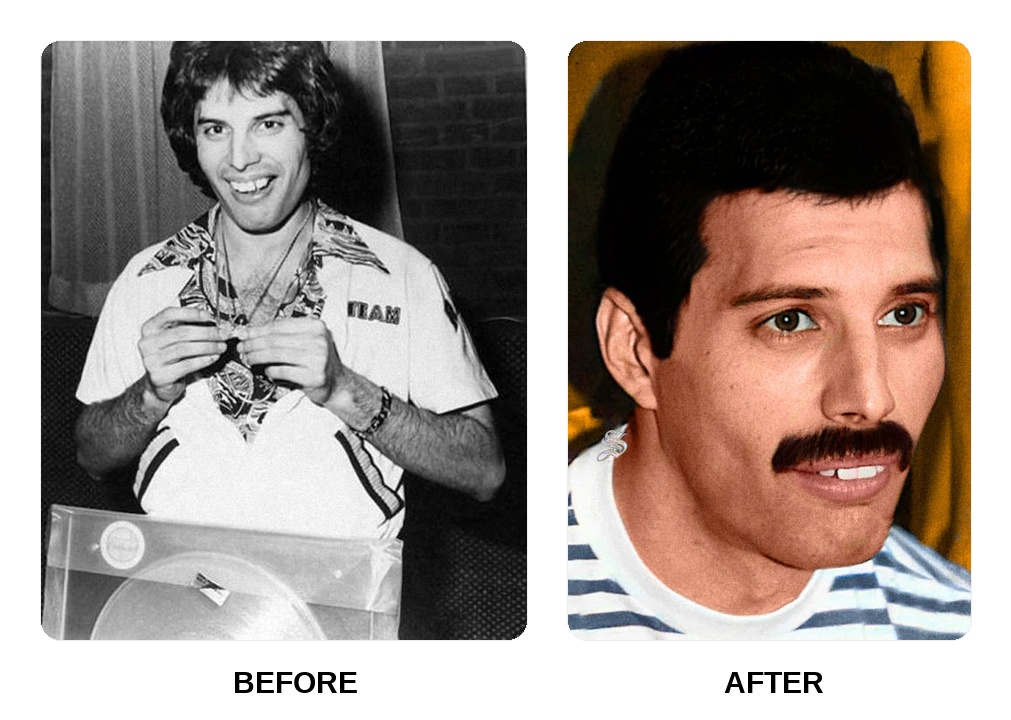
Are Freddie Mercury teeth showing signs of decay?
No, Freddie Mercury’s teeth did not visibly show significant signs of decay. Photos and videos of him throughout his career display teeth that, while uneven and protruding, are intact and not visibly cavitated or discolored beyond normal levels. He did not have dark spots, missing teeth, or other indicators of rampant tooth decay in his smile.
The most noticeable aspect of Mercury’s teeth was their alignment (or misalignment), not their health. He maintained his full set of teeth (including even his wisdom teeth, according to some accounts) into adulthood. This suggests that despite any lapses in regular dental visits, he avoided serious decay issues. Mercury’s teeth were essentially healthy; their prominence was due to placement rather than decay.
Freddie Mercury dental arch
Freddie Mercury’s upper dental arch was unusual because it accommodated more teeth than normal. He had four extra incisors on the top, which led to crowding in his mouth and a forward thrust of his front teeth. Typically, an adult dental arch has 16 teeth per jaw, but Mercury’s upper jaw held around 20 teeth due to the extra ones. This contributed to a broad-looking arch and a pronounced overjet (upper teeth protruding beyond the lower teeth).
To fit those extra teeth, Mercury’s jaw and arch were likely larger or differently shaped than average. One dentist noted that his jaw size must have been greater than normal to allow all the teeth to align in one arch. Even with this adaptation, the arch was overcrowded, and the excess teeth caused misalignment. The result was a distinct arch shape with prominent front teeth and a narrow space for all teeth, giving Mercury’s smile its characteristic look.
Freddie Mercury front teeth
Freddie Mercury’s front teeth – especially his upper central incisors – were a defining feature of his appearance. These two central front teeth were larger than average and were pushed forward at an angle due to the crowding from extra teeth behind them. As a result, they were very prominent whenever he smiled or sang, often drawing most of the attention.
The front teeth protruded out over his lower lip (creating an overbite) and gave Mercury what is colloquially known as “buck teeth.” They largely overshadowed the neighboring teeth because of their forward position. Despite their size and misalignment, Mercury’s front teeth were healthy and intact. They contributed to his unique profile and stage persona, and he famously chose not to reduce or straighten them.
Freddie Mercury teeth in his youth
Even in his youth, Freddie Mercury’s teeth displayed the distinctive traits that would later become famous. When his permanent teeth came in during adolescence, the presence of four extra incisors caused severe crowding. Young Mercury had a pronounced dental overbite and protruding front teeth, which classmates noticed immediately. In fact, his prominent teeth earned him the nickname “Bucky” from schoolmates, indicating he was teased about them early on.
Despite the teasing and likely embarrassment, Mercury did not receive orthodontic treatment as a child or teen. During his school years in India and later in England, braces or extractions were not pursued. This meant that by the time he was a young adult (even before he became famous), his dental appearance – the flared front teeth and overjet – was already established. Mercury’s youthful photos show the same unique smile that the world would later see, just on a slimmer teenage face.
Freddie Mercury teeth before he became famous
Before Freddie Mercury rose to fame, his teeth were already a notable part of his look. In the late 1960s, when he was an unknown young singer (still going by his birth name Farrokh Bulsara), he had the same prominent overbite and crowded upper teeth. Reports suggest that even his future bandmates in Queen initially took note of his dental appearance. Queen’s guitarist Brian May was reportedly hesitant early on, worrying that Mercury’s noticeable teeth might hurt the band’s image.
Mercury, however, did not let his teeth stop him from pursuing music. He was confident in his talent and convinced the band that his vocal abilities outweighed any concerns about his looks. By the time Queen started performing in 1970, Mercury’s teeth were as they had always been – he did not get them fixed upon entering show business. Thus, the “before fame” Mercury and the superstar Mercury displayed the same trademark smile.
Does Freddie Mercury have veneers on his teeth?
No, Freddie Mercury did not have veneers on his teeth. Veneers are thin porcelain or composite shells placed on the front of teeth to improve their appearance, but Mercury never opted for such cosmetic dentistry. Throughout his life, his teeth maintained their natural shape and alignment (albeit misaligned), which indicates he wasn’t using veneers (since veneers would have required reshaping or covering those prominent teeth).
Photographs of Mercury’s smile show the texture and contours of natural teeth rather than the uniformly shaped look that veneers create. Moreover, in the 1970s–1980s, getting veneers was less common than today, and there is no record of Mercury undergoing that procedure. He was known to have deliberately avoided cosmetic fixes for his teeth, believing any alteration could affect his singing. Therefore, it’s safe to say he did not wear veneers.
Did Freddie Mercury get his teeth done?
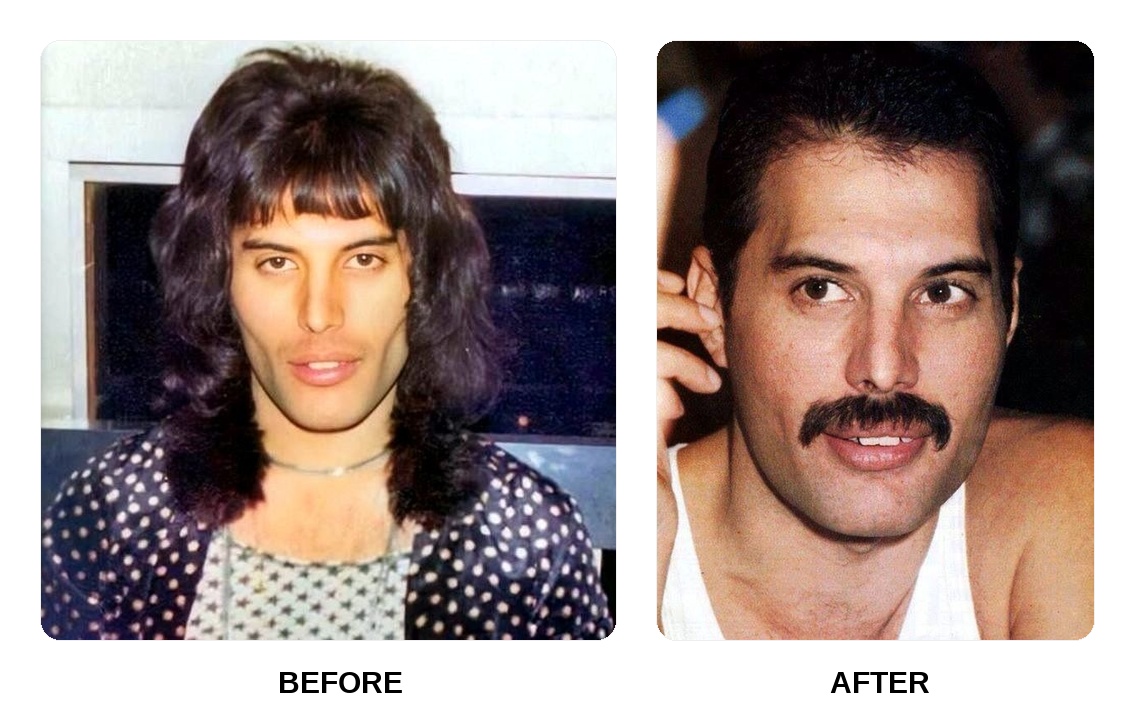
Did Freddie Mercury get his teeth done?
Freddie Mercury did not “get his teeth done,” meaning he never had them cosmetically corrected or significantly altered. Unlike many celebrities who undergo orthodontic treatment or dental surgery to improve their smile, Mercury refrained from any such intervention. He famously kept his natural teeth despite their flaws. This was a conscious choice; Mercury was worried that changing his teeth (through braces or extractions) could interfere with his vocal resonance.
Throughout his career, Mercury’s teeth remained as they were from the start – he did not get braces, did not remove the extra teeth, and did not get crowns or implants. The only dental work he likely had were routine care (cleanings, fillings if needed), not aesthetic makeovers. His unchanged teeth became part of his persona, demonstrating that he achieved superstardom without conforming to the “perfect smile” standard.
Does Freddie Mercury have gold teeth?
No, Freddie Mercury did not have gold teeth. All of Mercury’s visible teeth were natural enamel; there are no accounts of him sporting gold dental crowns or gold caps on any of his teeth. In photographs and videos, his teeth appear white or off-white, not gold. If he had a gold tooth, it would have been noticeable whenever he opened his mouth, and this was never the case.
Some confusion may arise because the actor Rami Malek, who portrayed Mercury in the film Bohemian Rhapsody, kept a set of replica teeth and later had them plated in gold as a memento (a fact discussed in interviews). However, that was the actor’s prop, not something Mercury himself ever did. Mercury’s own teeth remained ordinary in material – no gold or other metal replacements were part of his smile.
Does Freddie Mercury have silver teeth?
No, Freddie Mercury did not have silver teeth either. “Silver teeth” could refer to silver-colored dental fillings or crowns (often made from amalgam or other metals), but Mercury’s public appearances never showed any silver caps on his teeth. His front teeth were intact and not filled or crowned with metal. If he had any dental fillings on back teeth, they were not visible and were typical dental work, not a defining feature.
In essence, Mercury’s smile did not include any conspicuous metallic teeth. He did not wear any silver dental grill or decorative metal on his teeth. All visible parts of his teeth were his natural tooth structure. Therefore, just like with gold teeth, Mercury did not have silver teeth as part of his appearance.
Freddie Mercury white teeth
Freddie Mercury’s teeth were relatively white in color, especially considering his era and habits, but not unnaturally so. He did not undergo modern teeth whitening procedures (which were not common in the 1970s and ’80s), yet photographs show that his teeth had a normal, off-white tone. Despite being a smoker and frequent tea or wine drinker, Mercury’s teeth did not appear heavily stained. They maintained a reasonably bright shade in concerts and videos.
His naturally white enamel, as noted by some sources, contributed to his smile’s visual impact. However, it’s important to clarify that “white” here means typical healthy tooth color, not the Hollywood bleached white. Mercury’s teeth might have had slight yellowing as is normal with age, but they were far from brown or discolored. Overall, his teeth looked clean and healthy, just misaligned.
Freddie Mercury central incisors
Freddie Mercury’s central incisors (the two upper front teeth) were notably prominent. These teeth were somewhat larger than average and were thrust forward due to Mercury’s overcrowded upper jaw. Normally, central incisors are the focal point of a smile, and in Mercury’s case they were even more so – they protruded outward at a visible angle. The presence of extra incisors behind them (mesiodens) forced these front teeth to flare out and overlap his lower lip.
Because of the forward position, his central incisors gave him an overbite that was very apparent. They were closely set together, with no significant gap between them, but because of their size and angle they created the “bucktooth” effect. It’s reported that the extra teeth behind were conical in shape, but the central incisors themselves were normal teeth that simply had been pushed out of alignment. These two front teeth defined Mercury’s dental profile and remained unchanged throughout his life.
What happened to Freddie Mercury teeth?
Freddie Mercury’s teeth became famous for their unusual appearance, and essentially, nothing “happened” to change them – he lived and died with the same distinctive teeth. The story behind them is that he was born with a dental condition (hyperdontia) that gave him four extra teeth in the upper jaw. This caused his front teeth to protrude. Mercury was self-conscious about this and endured teasing, but as an adult he chose not to alter his teeth.
Throughout his life, Mercury’s teeth remained intact and uncorrected. He did not have the extra teeth removed or the alignment fixed. So, what happened to them is that they stayed as they were. In practical terms, he maintained good dental health but left the cosmetic issue alone. After Mercury passed away in 1991, his teeth simply became part of his legacy – remembered by fans, but of course, no longer a matter of public view after his death.
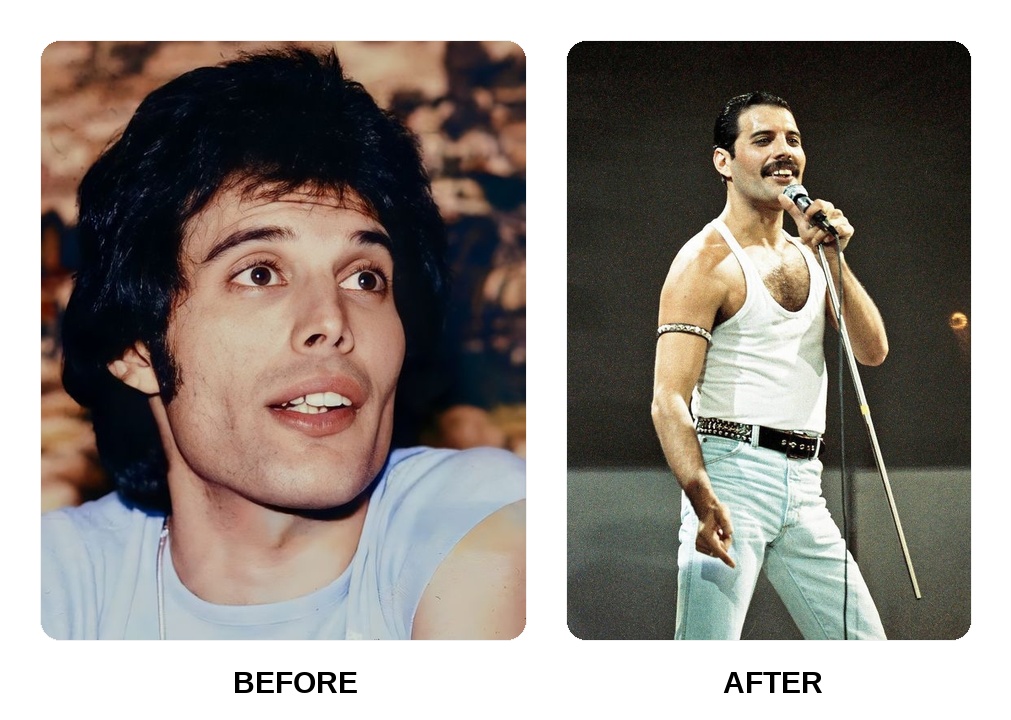
How did Freddie Mercury fix his teeth?
He didn’t – Freddie Mercury never fixed his teeth. Despite having the means and opportunity, Mercury decided against any orthodontic or surgical correction for his dental issues. He was concerned that altering his teeth might affect his singing voice, a risk he refused to take. So, rather than “how he fixed his teeth,” the real answer is that he opted not to fix them at all.
If Mercury had attempted to fix his teeth, it would have involved significant dental work (such as removing the four extra incisors and then using braces to straighten the remaining teeth). However, he did not undergo these procedures. Instead, he embraced his natural teeth throughout his career. In summary, Mercury’s teeth were never fixed – he simply lived with them as they were.
Did Freddie Mercury wear braces?
No, Freddie Mercury never wore braces. During his lifetime, he did not undergo orthodontic treatment to straighten his teeth. Braces would have been one way to address his overbite and misalignment (likely after removing the extra teeth first), but Mercury chose not to pursue this. He is not known to have worn braces in childhood or adulthood.
Given his public appearances from the 1970s through 1991, at no point was he seen with orthodontic appliances on his teeth. Mercury felt that leaving his teeth as-is was preferable to risking a change in his vocal quality. So, the answer is straightforward: he did not wear braces at any stage in his life.
Are Freddie Mercury teeth asymmetrical?
Freddie Mercury’s teeth were not perfectly symmetrical, but the asymmetry was not extreme either. His upper dental arch was crowded and some teeth were out of their ideal positions. This could cause minor differences between the left and right sides of his dental arrangement. For example, one canine or lateral incisor might have angled slightly differently than its counterpart, due to the tight fit of all those teeth.
However, when looking at Mercury’s smile, the overall impression was fairly centered: the two central incisors were in the middle, and the protrusion of his teeth was roughly even on both sides. The prominent overbite affected the front teeth uniformly. So, while there may have been small asymmetrical details (as is common in most people’s teeth), Mercury’s teeth were generally symmetrically “bucktoothed” — both sides contributed equally to his famous overbite.
Did Freddie Mercury have dental surgery?
There is no record of Freddie Mercury undergoing any major dental surgery. He did not have oral surgery to remove his supernumerary teeth or to correct his bite. Despite his pronounced overbite, Mercury chose to avoid surgical interventions (such as orthognathic jaw surgery or extraction of teeth for orthodontic purposes). In interviews and biographies, there’s no mention of him having had any dental operation.
The only tooth extractions he might have conceivably needed would have been for the extra teeth or possibly wisdom teeth, but Mercury evidently kept all those teeth throughout his life. Thus, aside from normal dental care, Mercury did not have any dental surgeries or invasive procedures done.
What dental procedures has Freddie Mercury undergone?
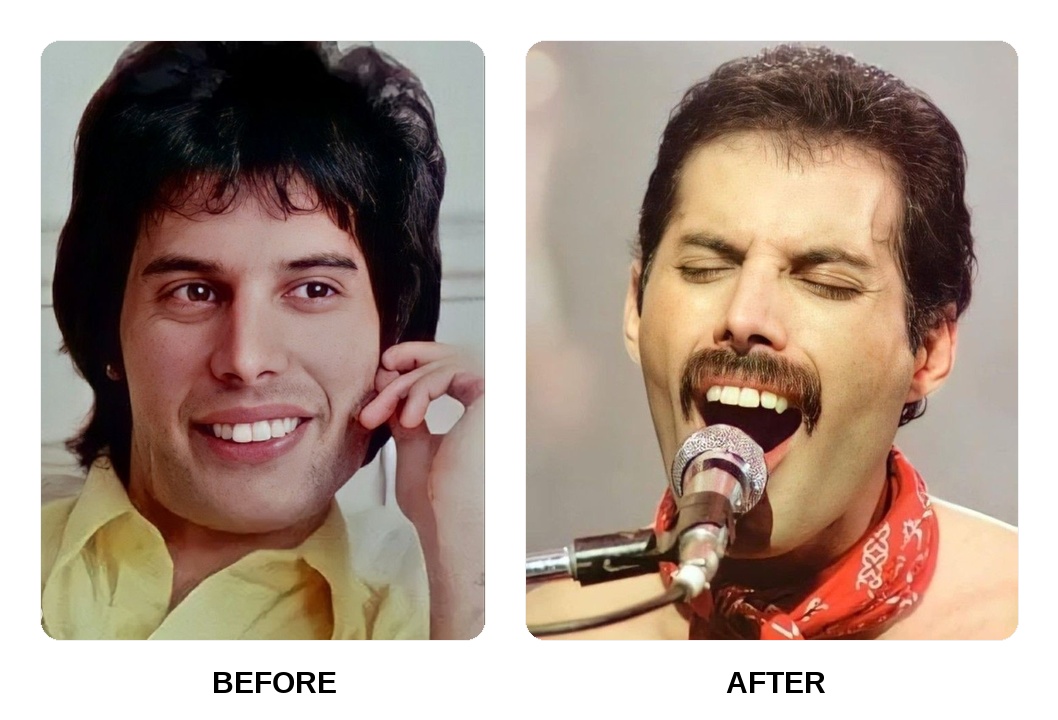
What dental procedures has Freddie Mercury undergone?
Freddie Mercury’s dental history did not include any significant cosmetic or orthodontic procedures. Based on available information, here are the dental-related actions (or inactions) associated with him:
- Routine Dental Care: Mercury likely had basic dental care such as examinations, cleanings, and fillings when necessary. For instance, he reportedly visited a dentist in 1976 after a long gap, which suggests he addressed issues like any cavities or toothaches at that time.
- No Orthodontic Treatment: He did not undergo braces or use aligners. His misaligned teeth were never straightened during his lifetime.
- No Surgical Extractions of Extra Teeth: Despite having four extra incisors, he never had them removed. His overbite and crowding remained untreated surgically.
- No Veneers or Cosmetic Crowns: Mercury didn’t get veneers, crowns, or bonding to alter the appearance of his front teeth. They remained natural.
- Wisdom Teeth: He kept his wisdom teeth (third molars) since they apparently fit without issues, meaning he had no wisdom teeth removal.
In summary, Mercury’s dental interventions were limited to routine health maintenance. He avoided any procedure that would change the alignment or number of his teeth, keeping his famous smile untouched.



